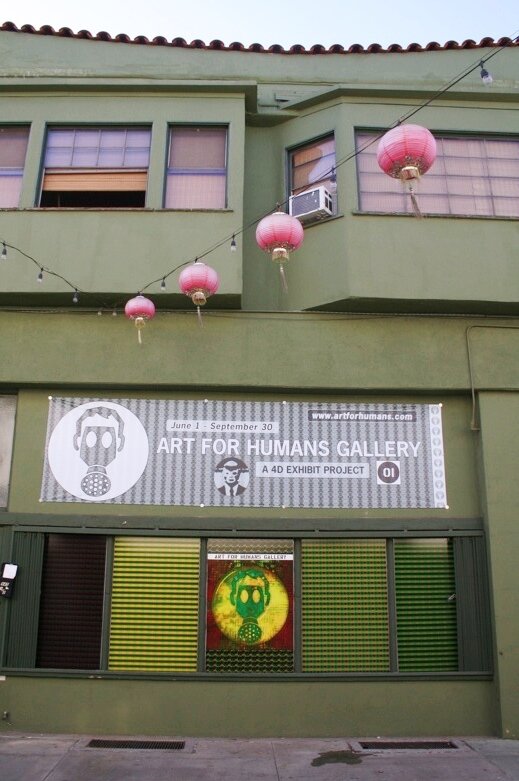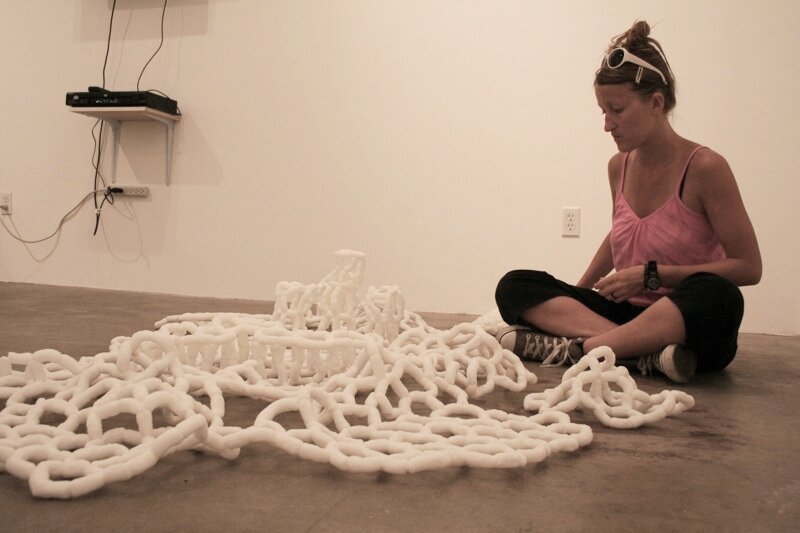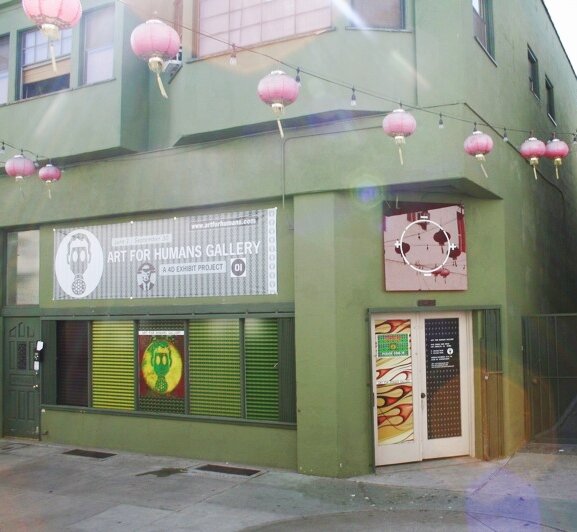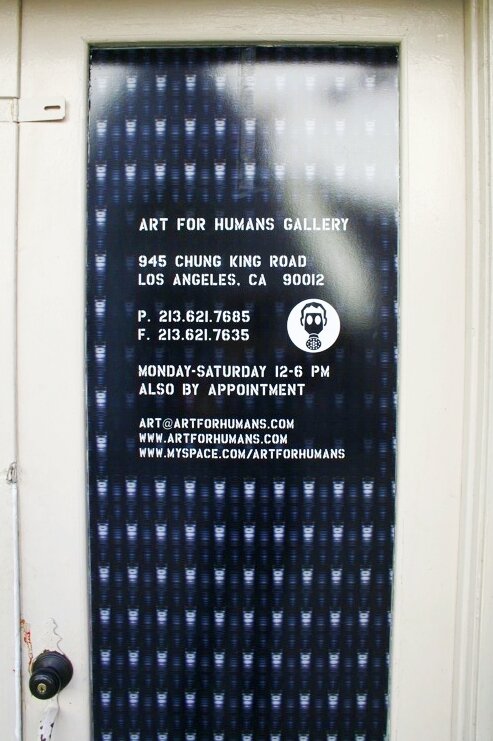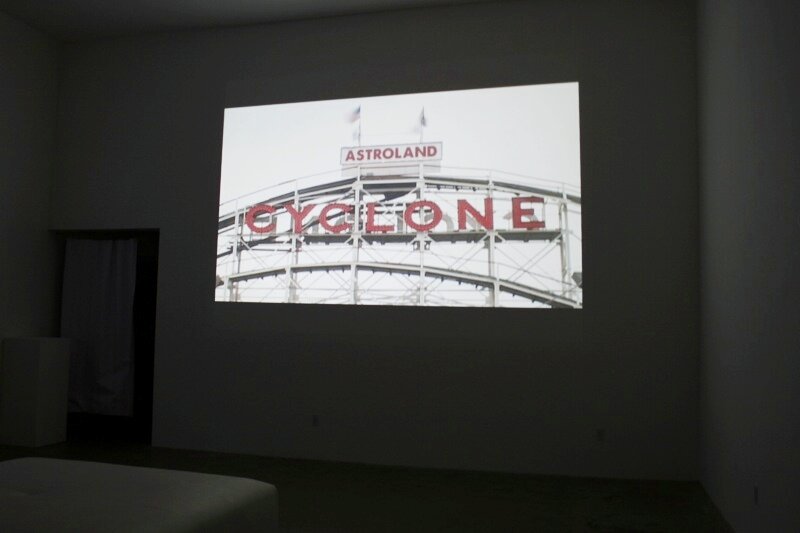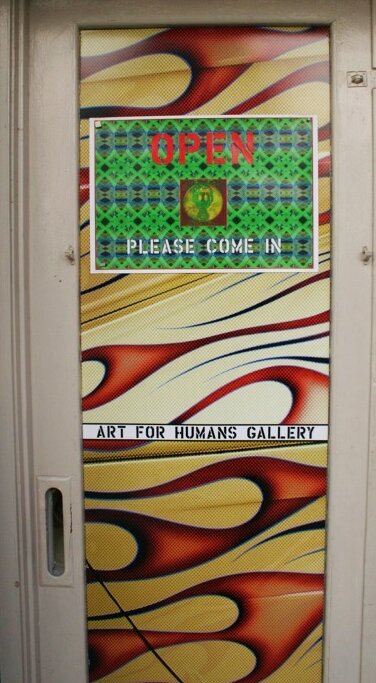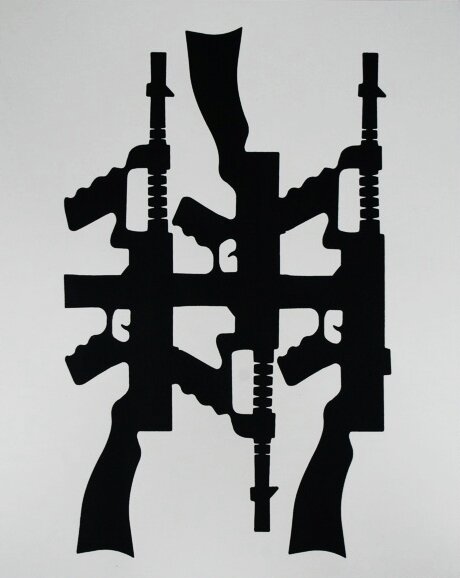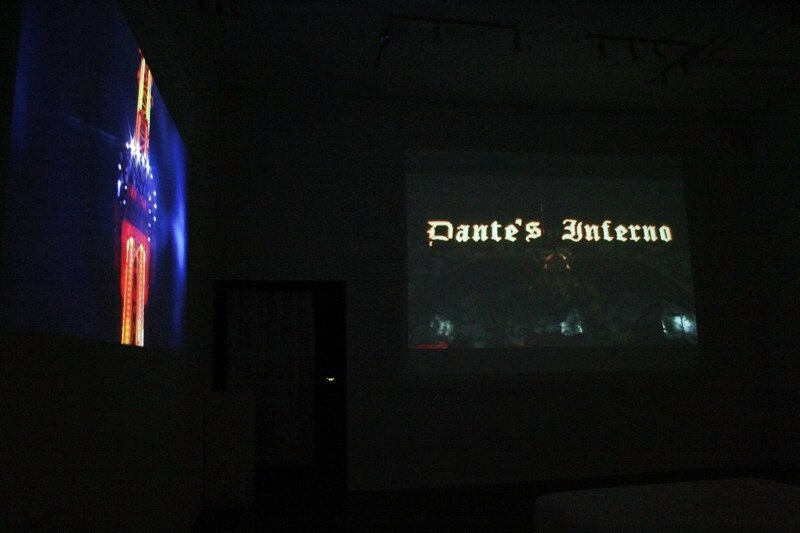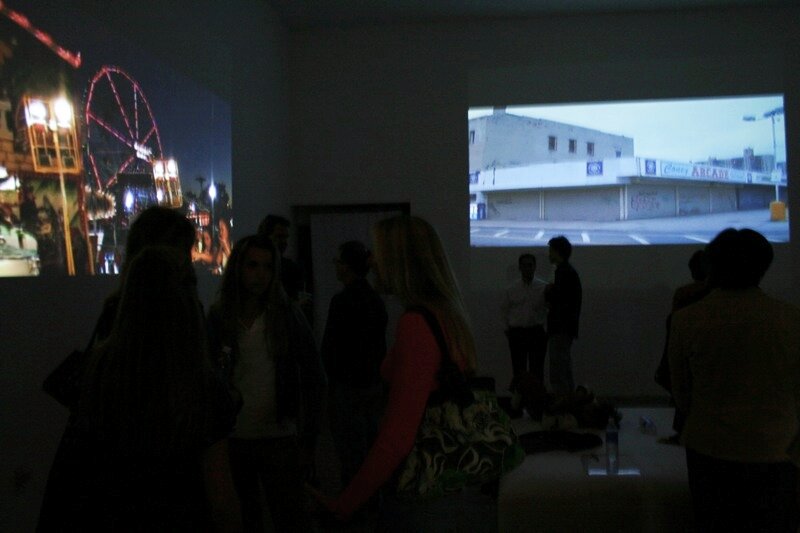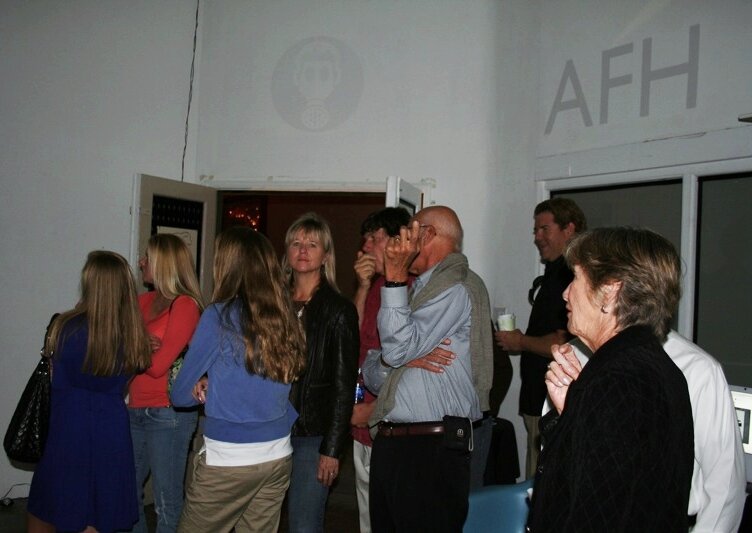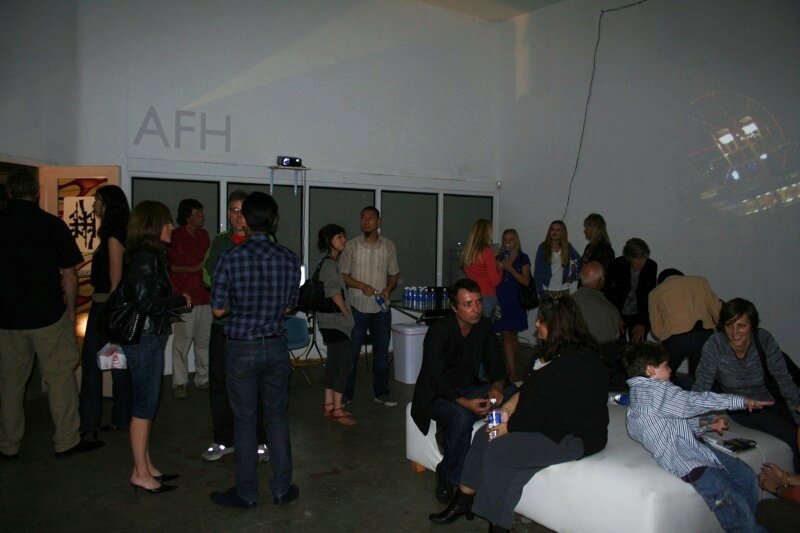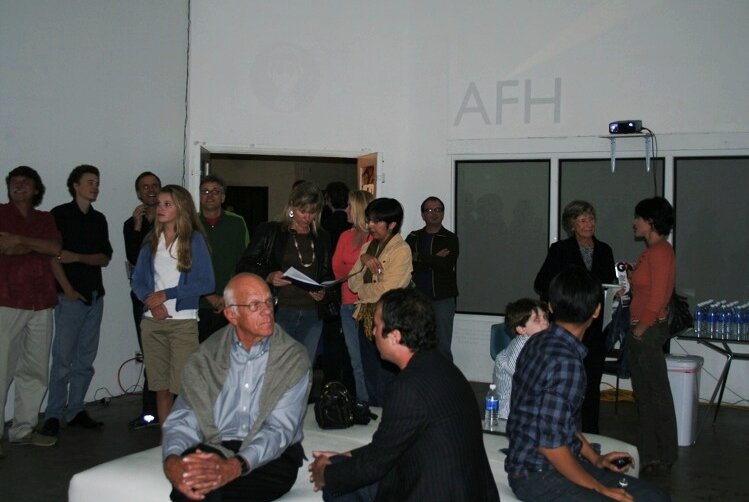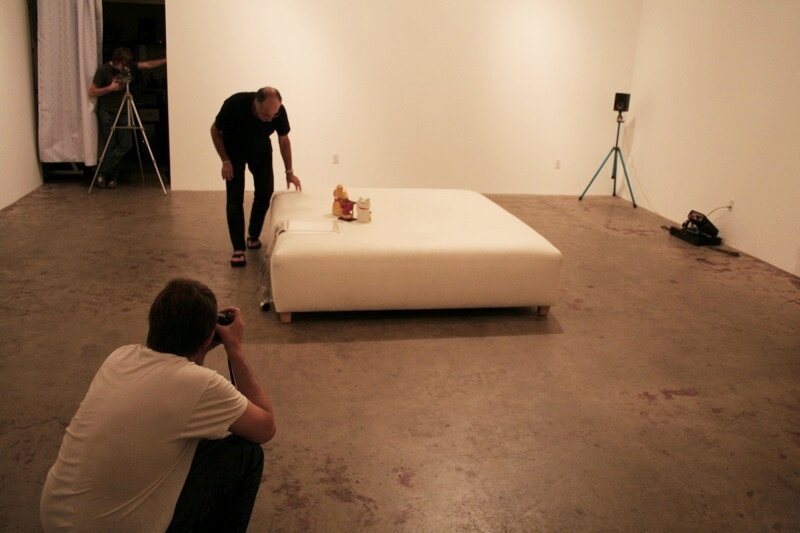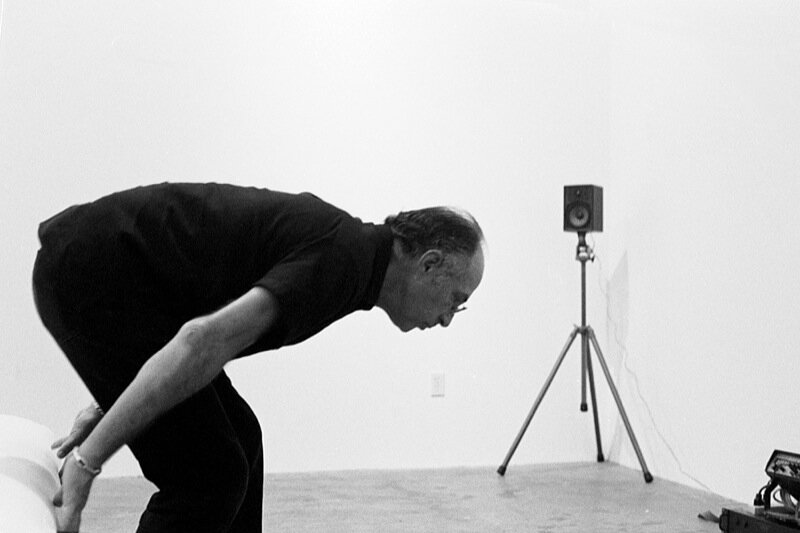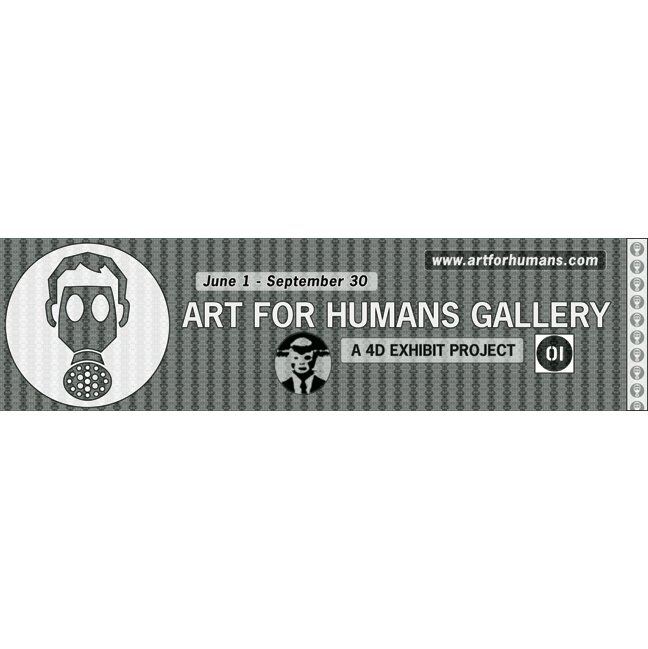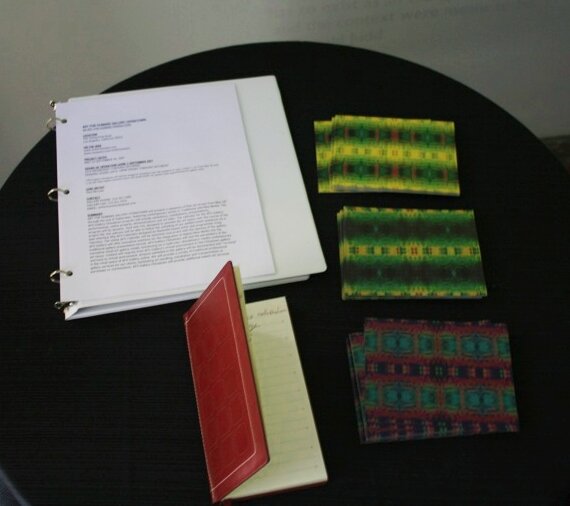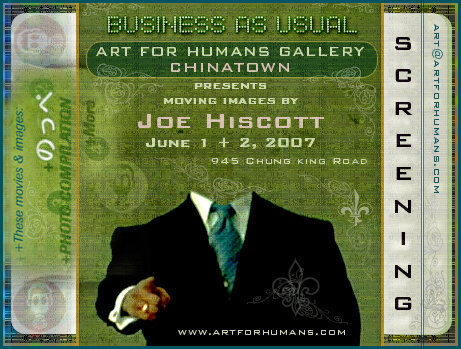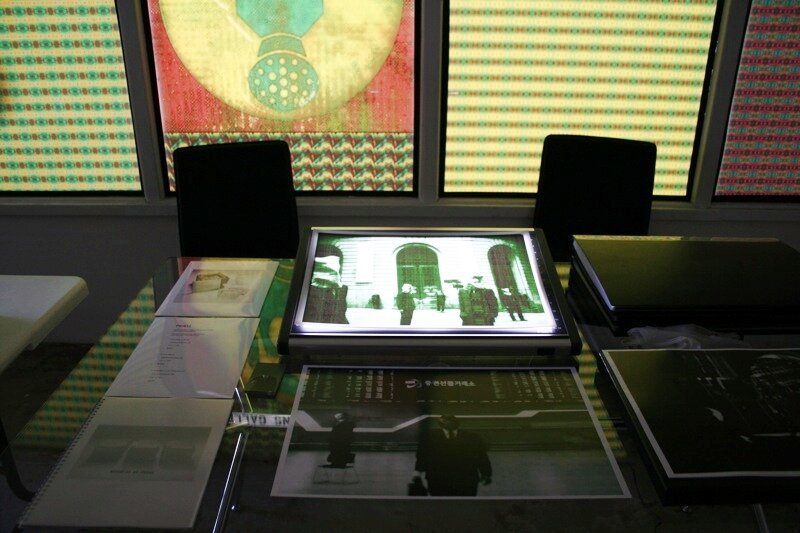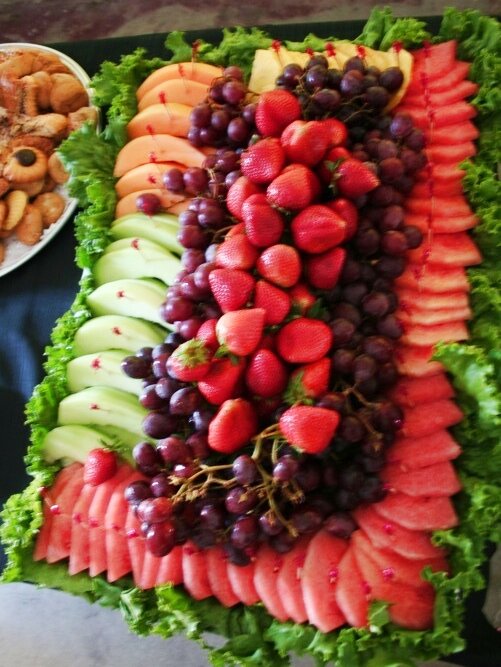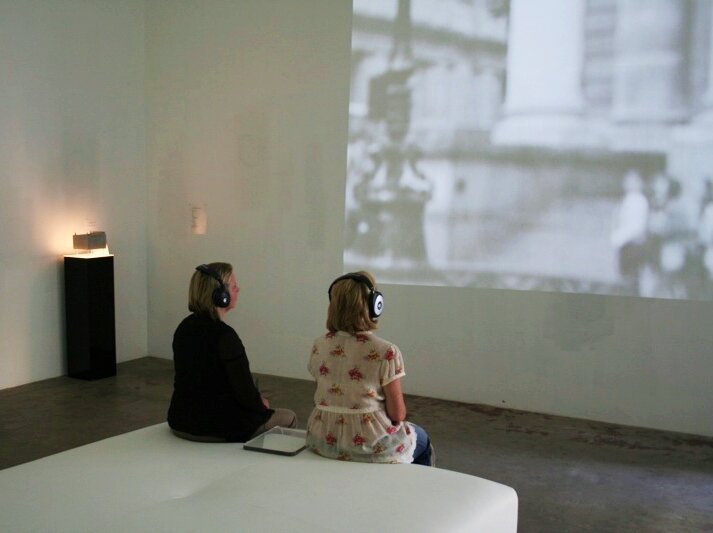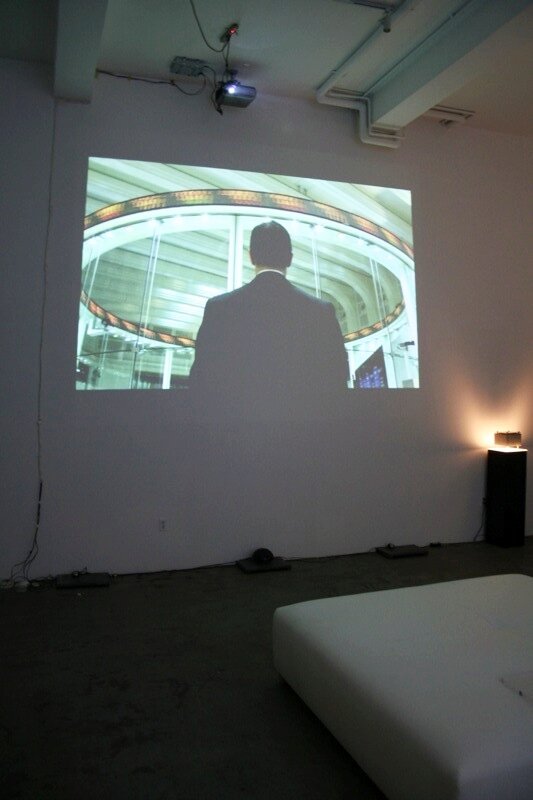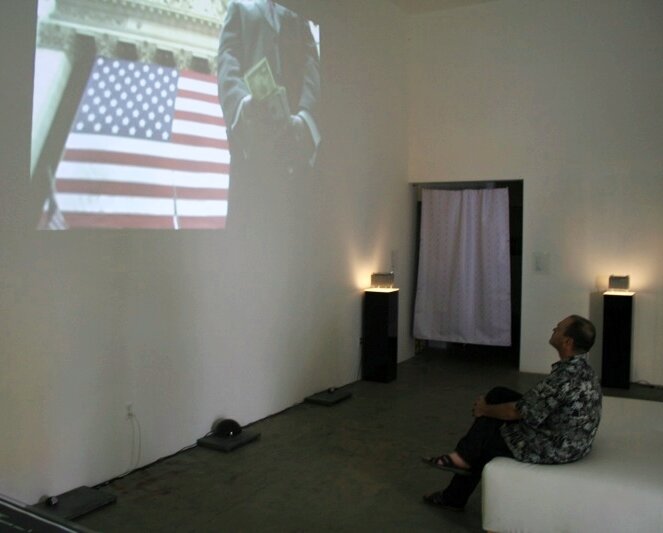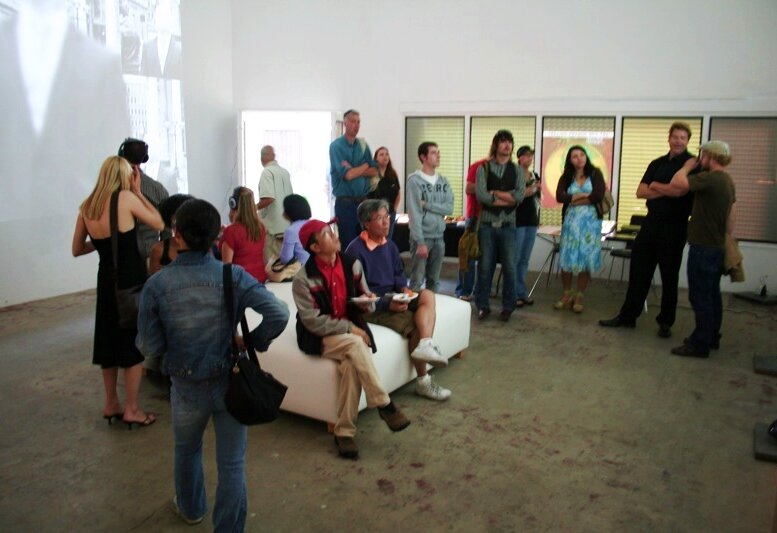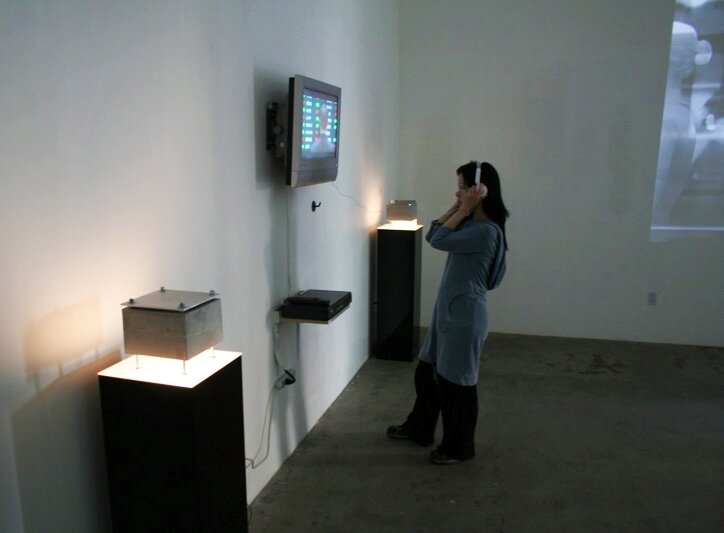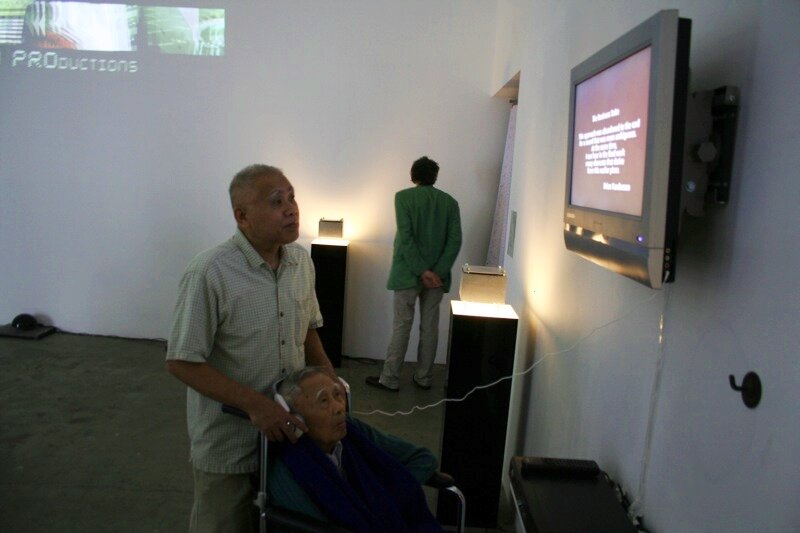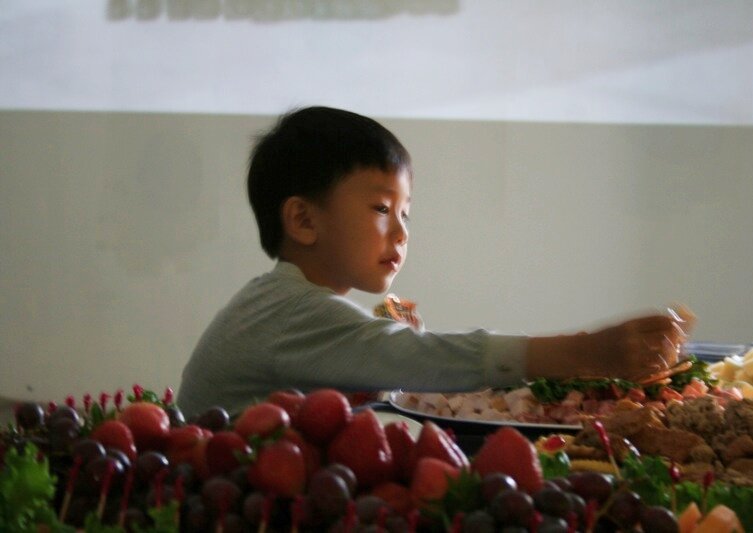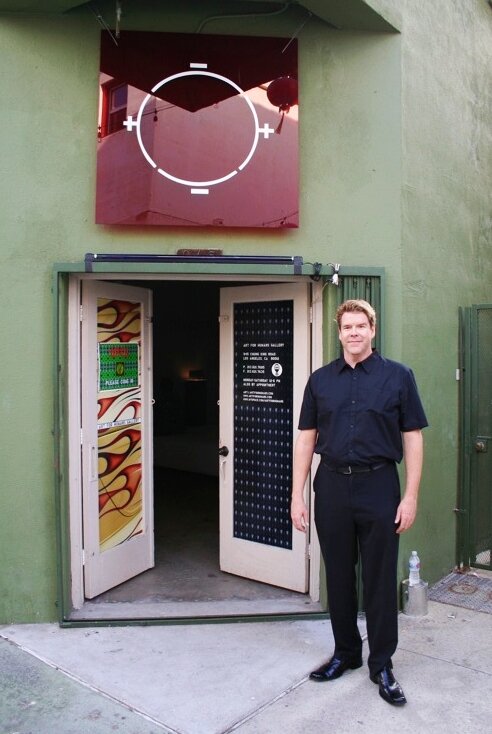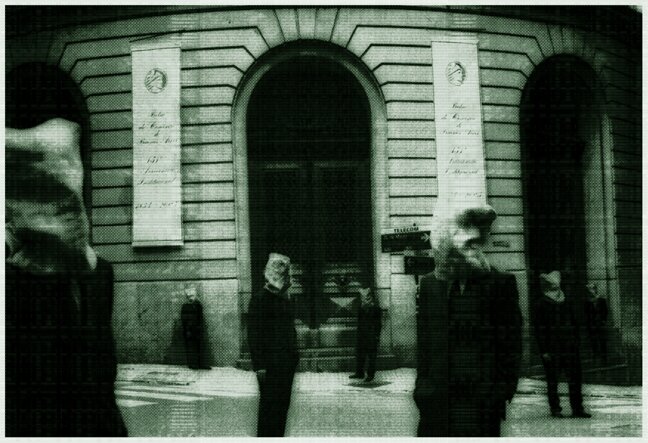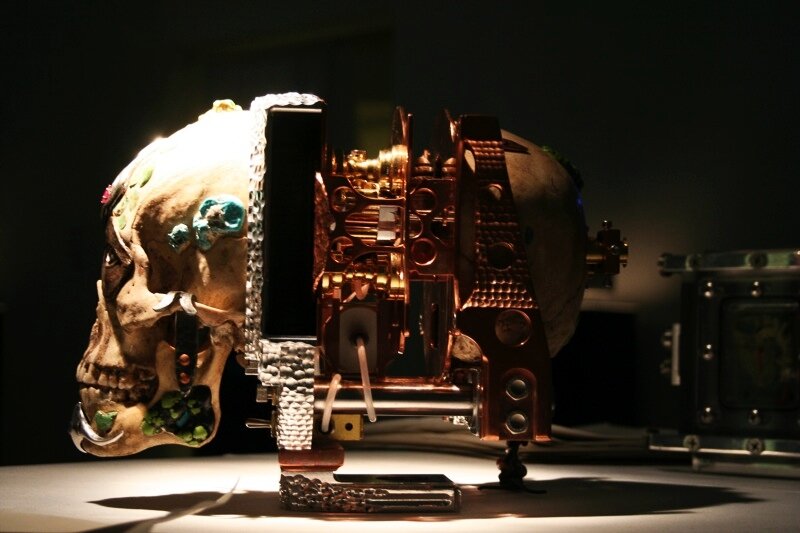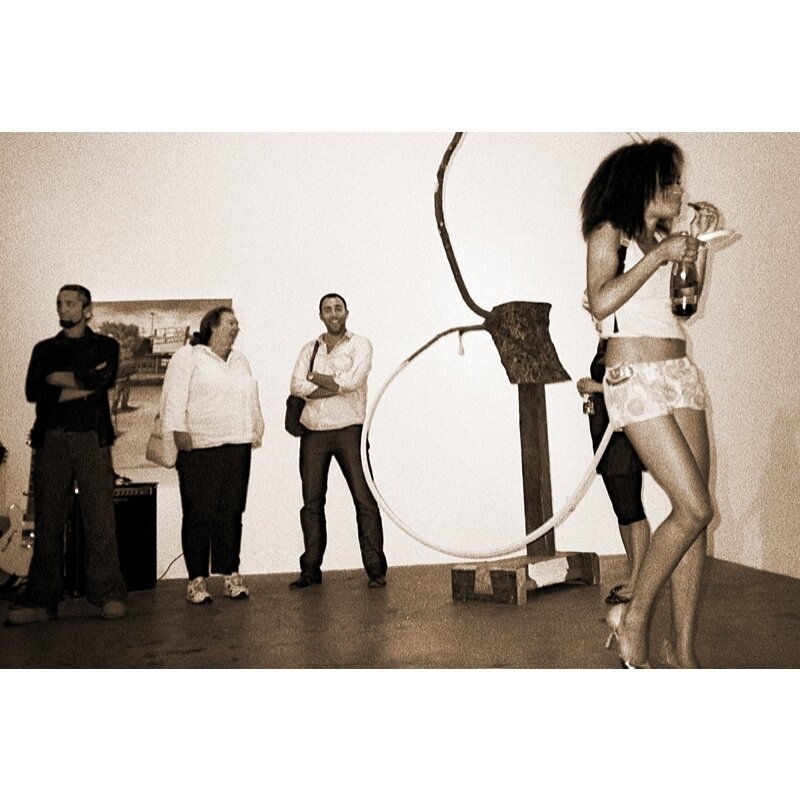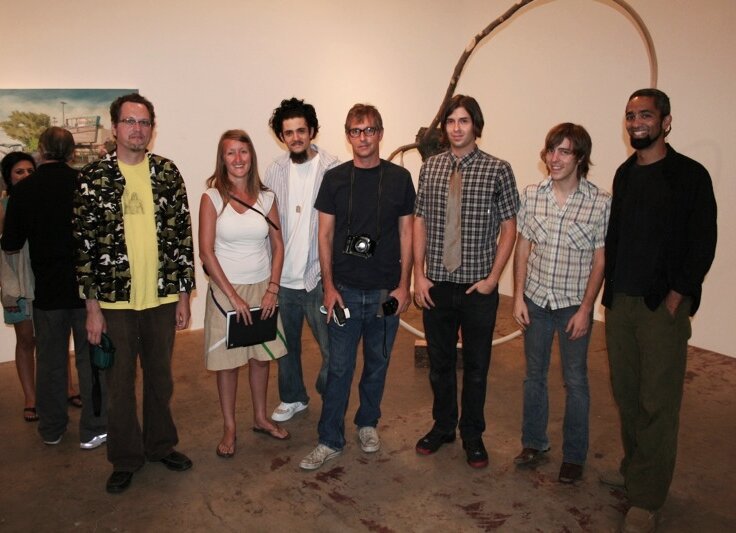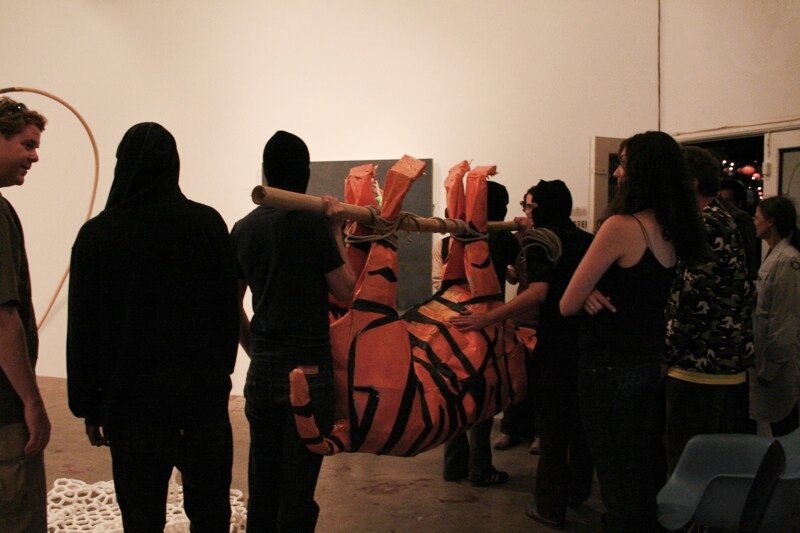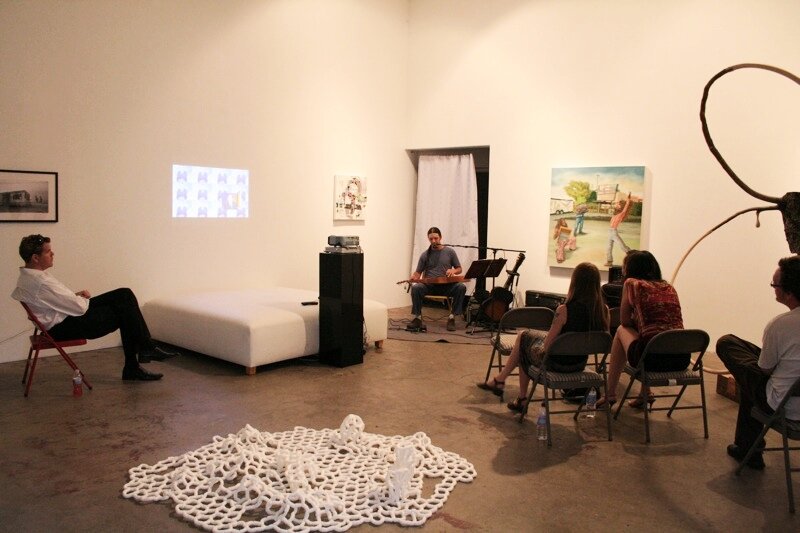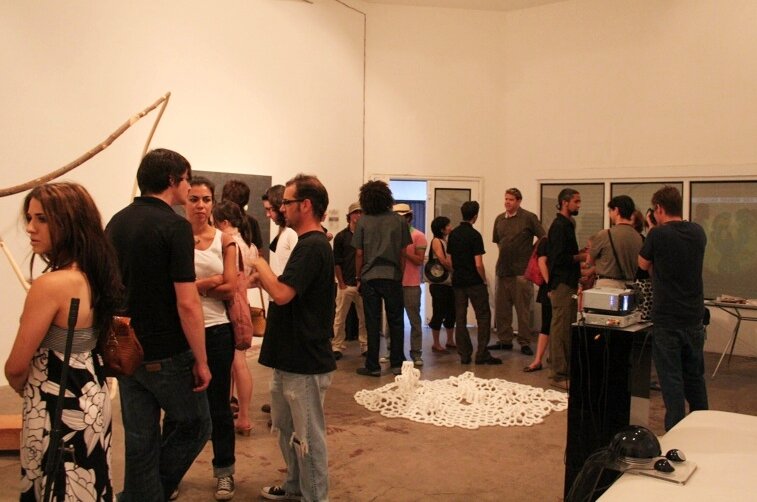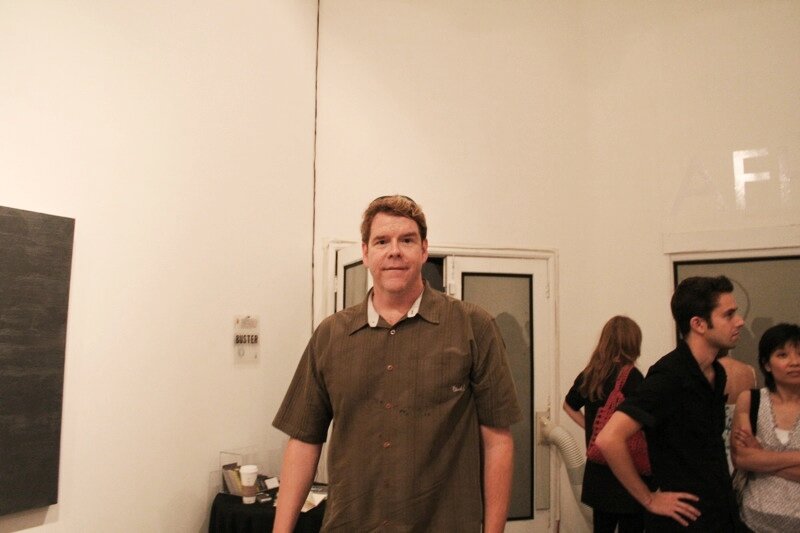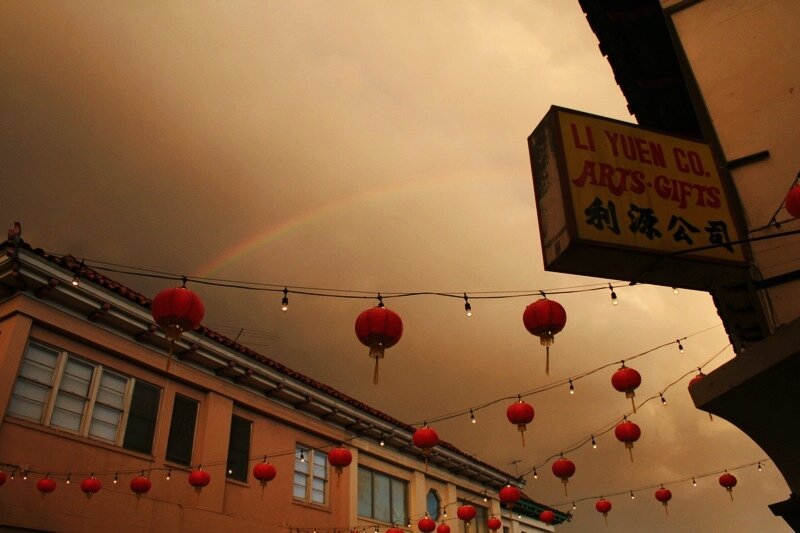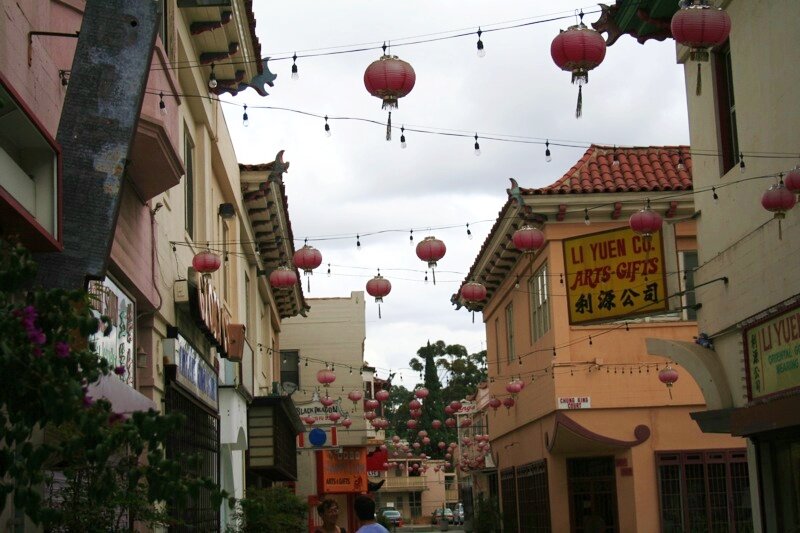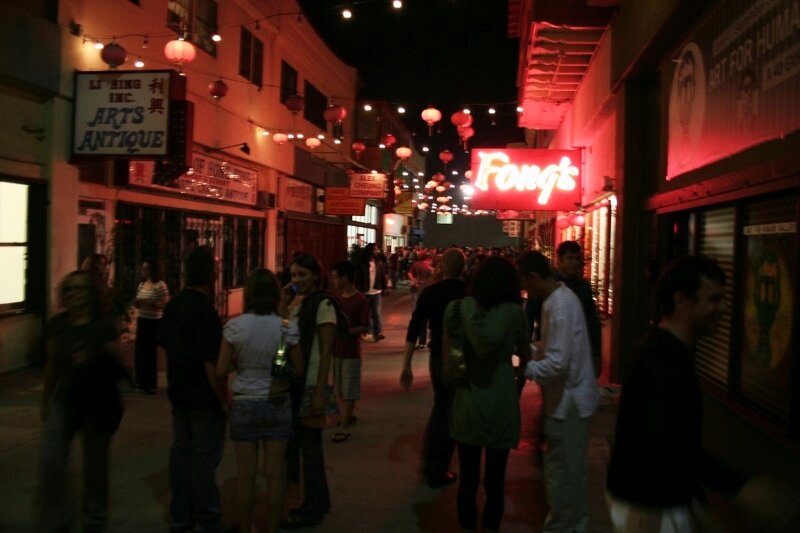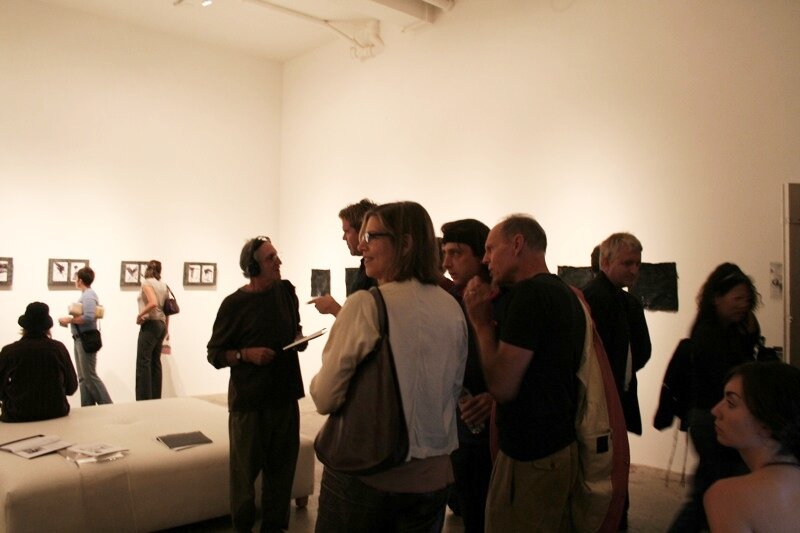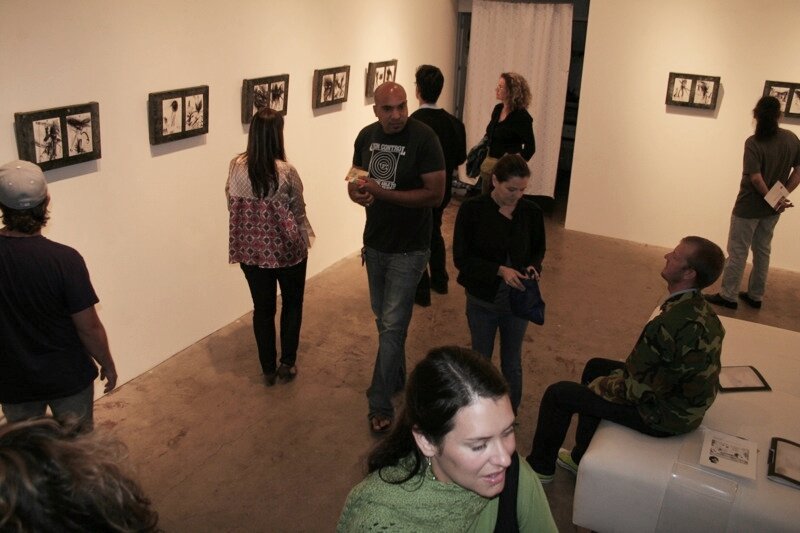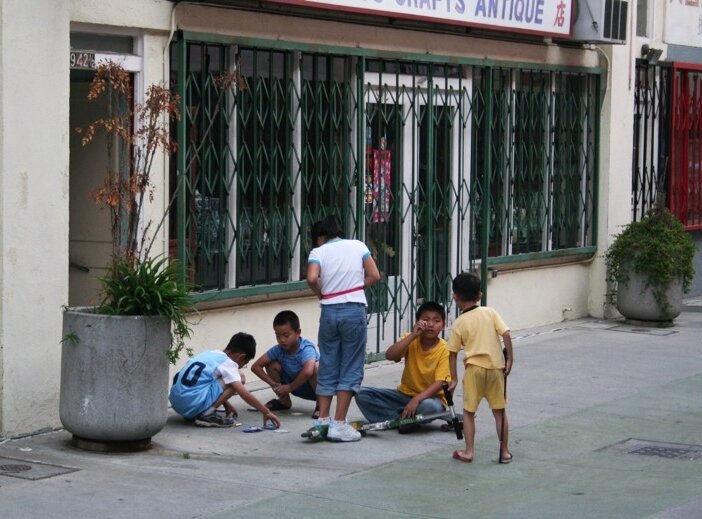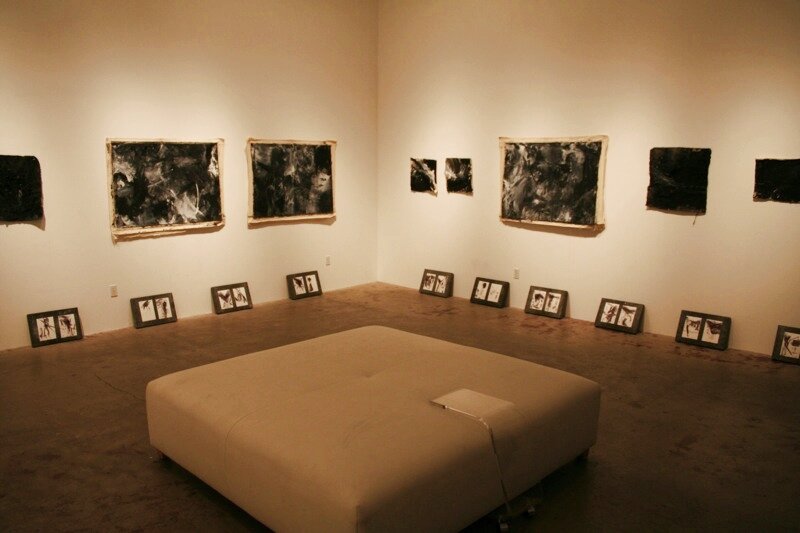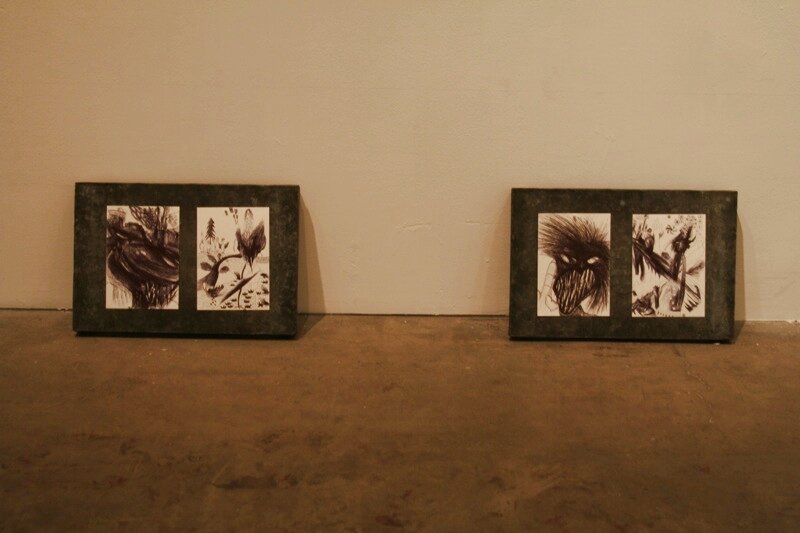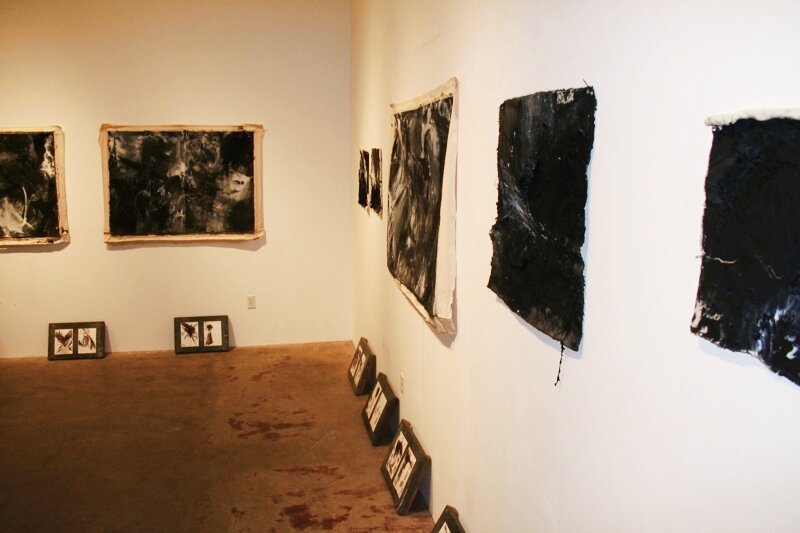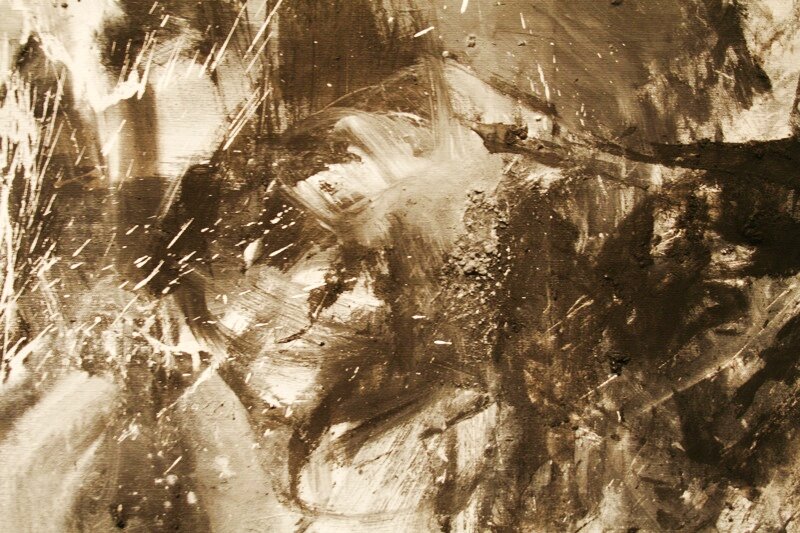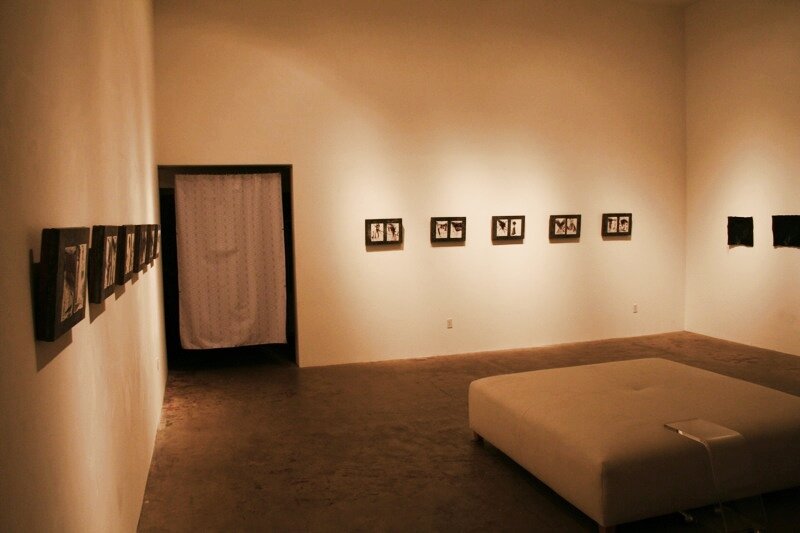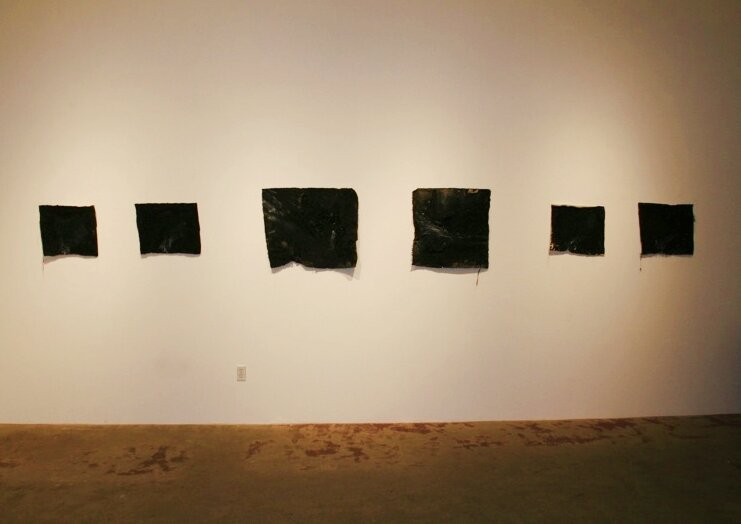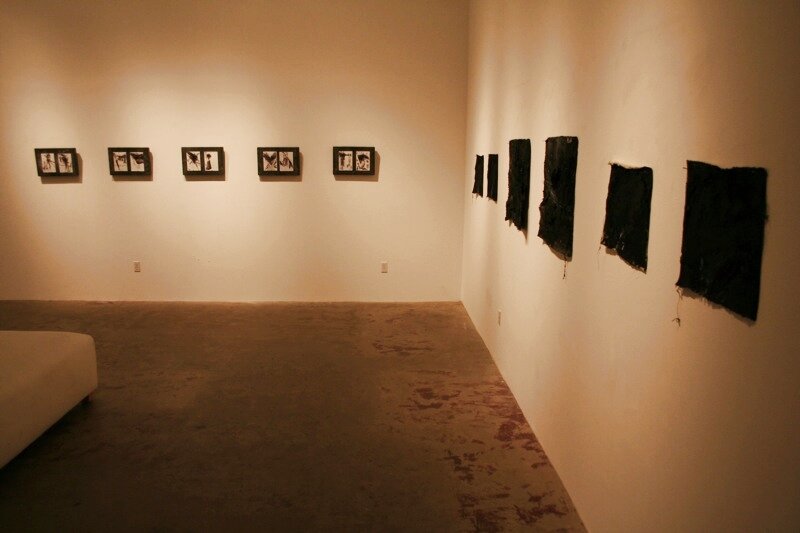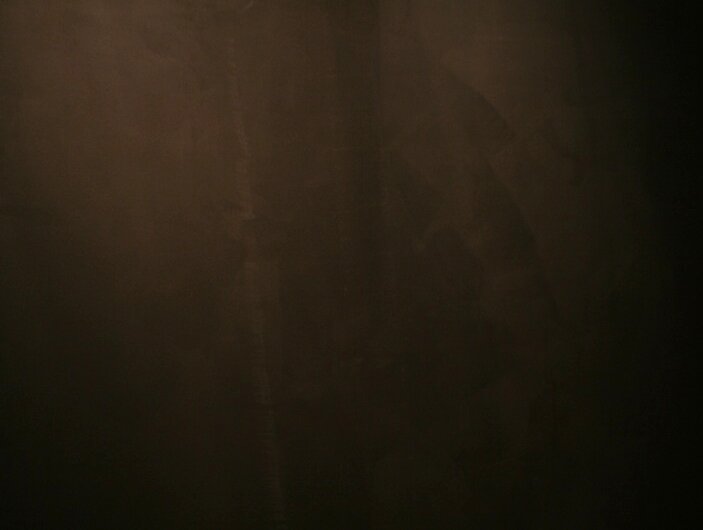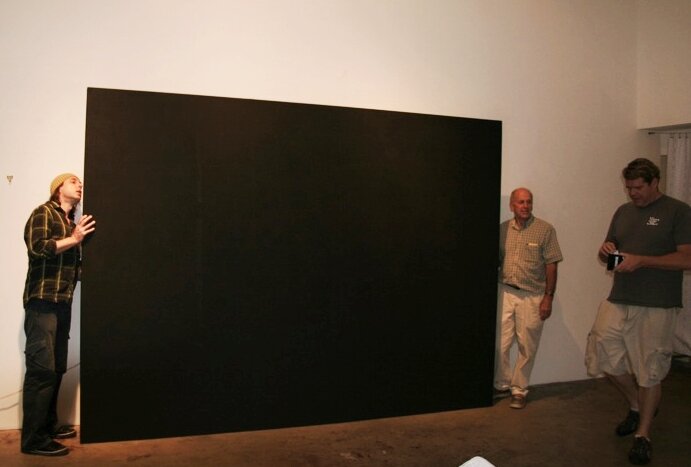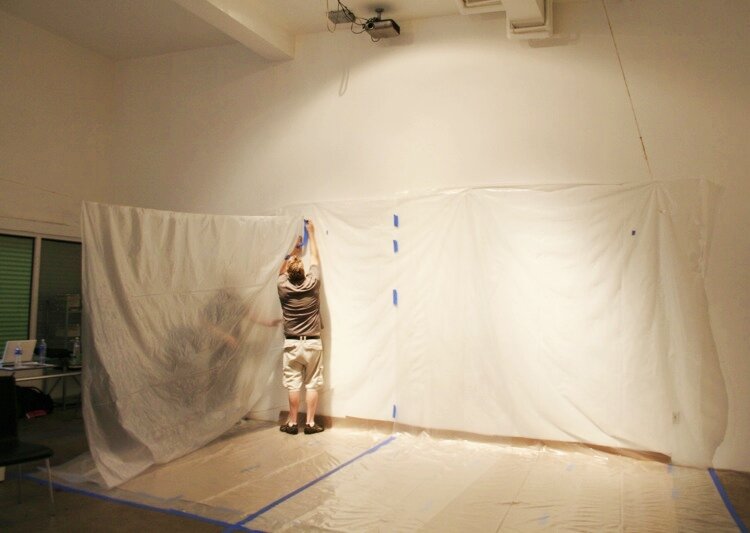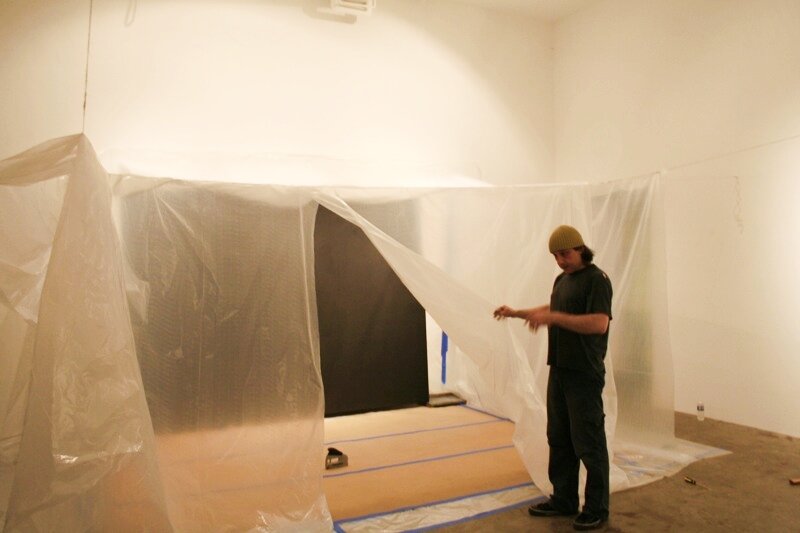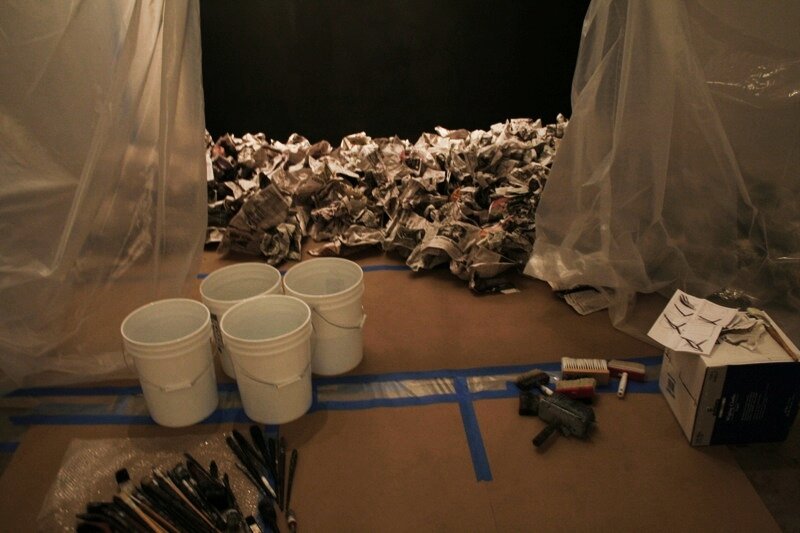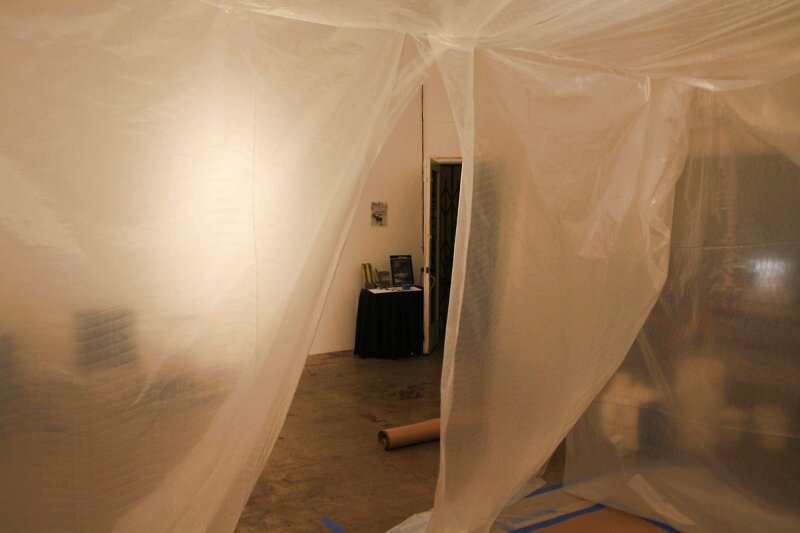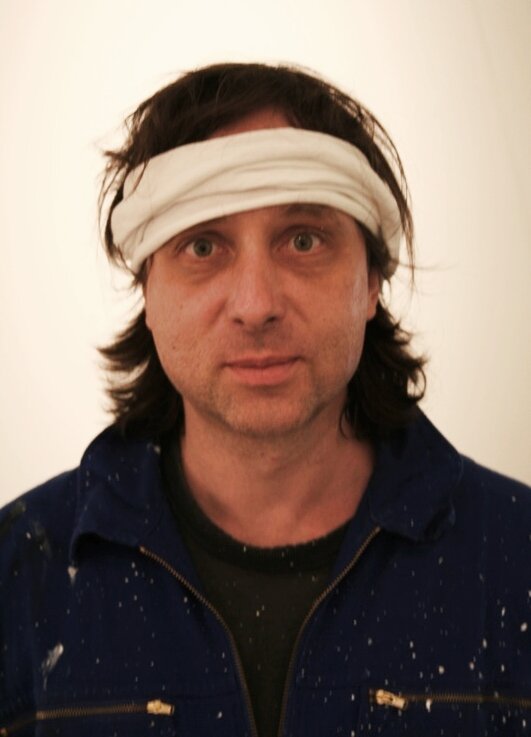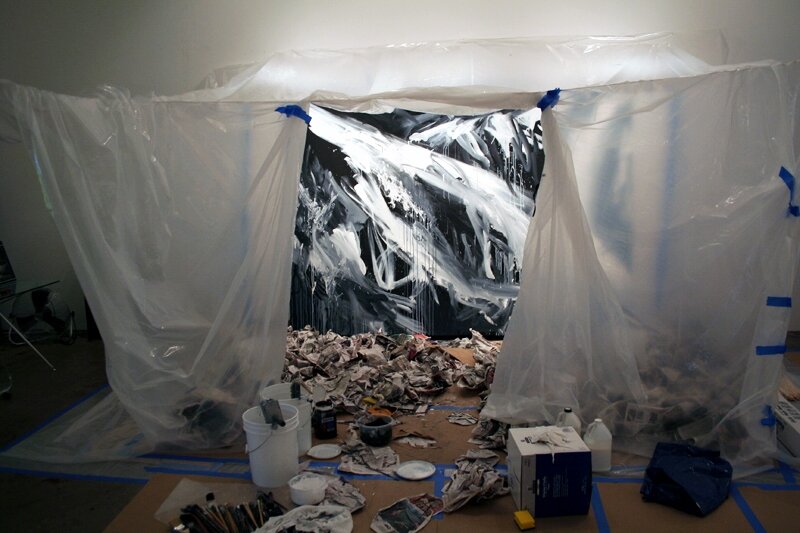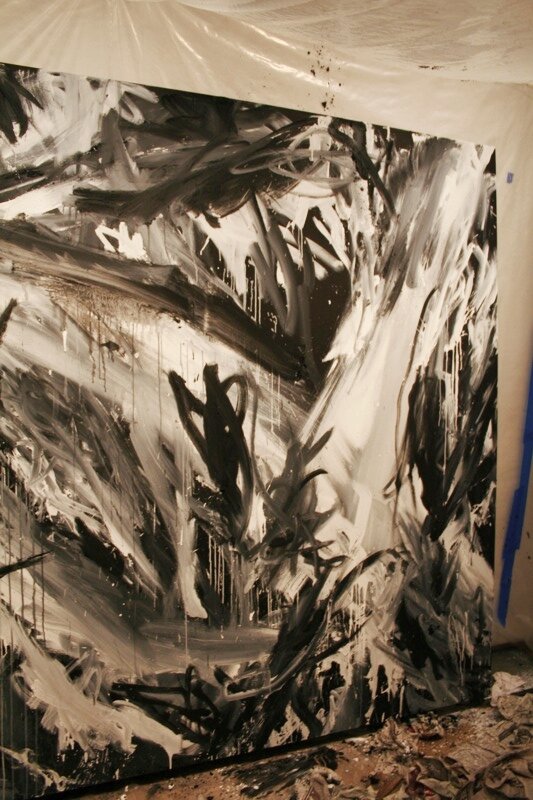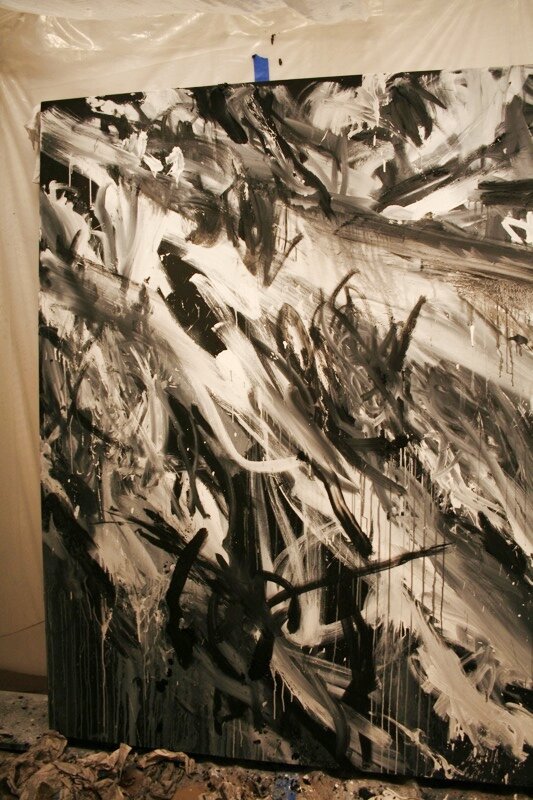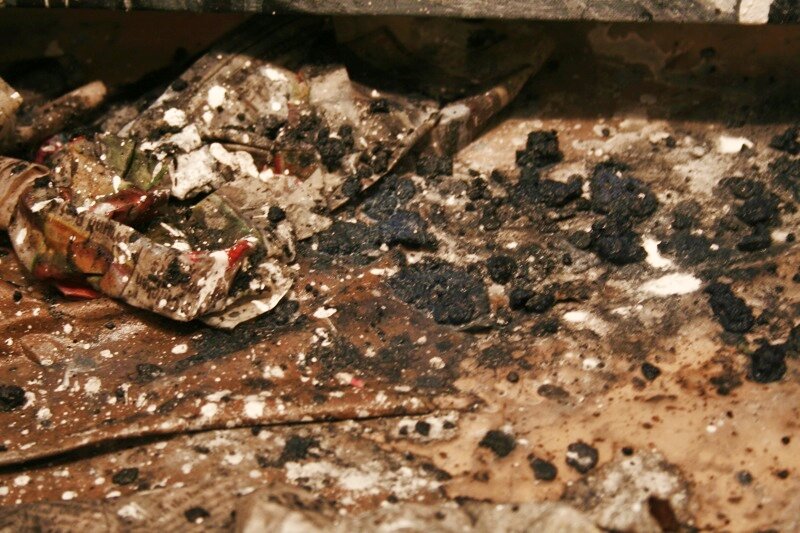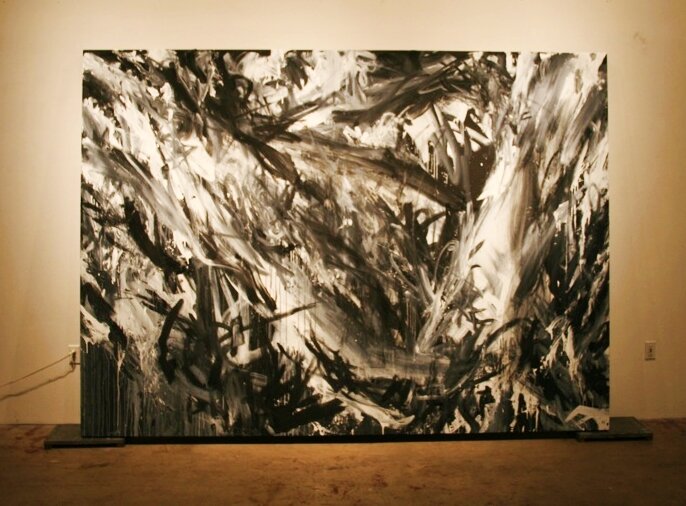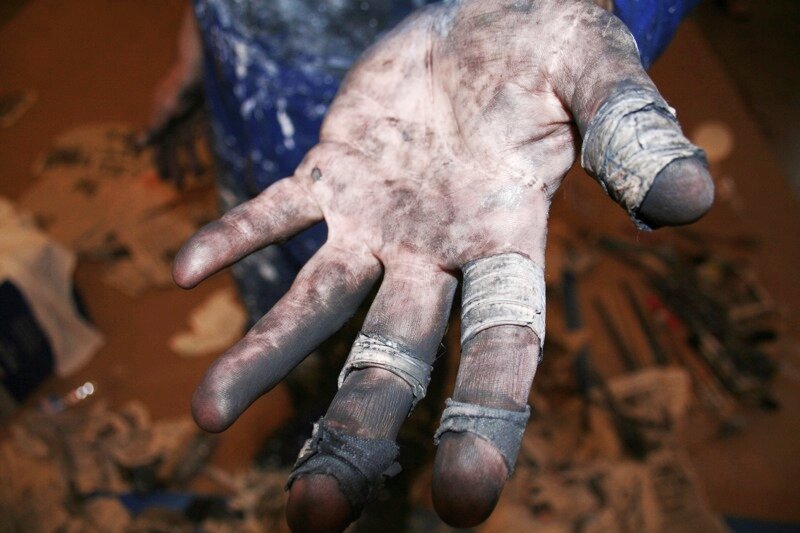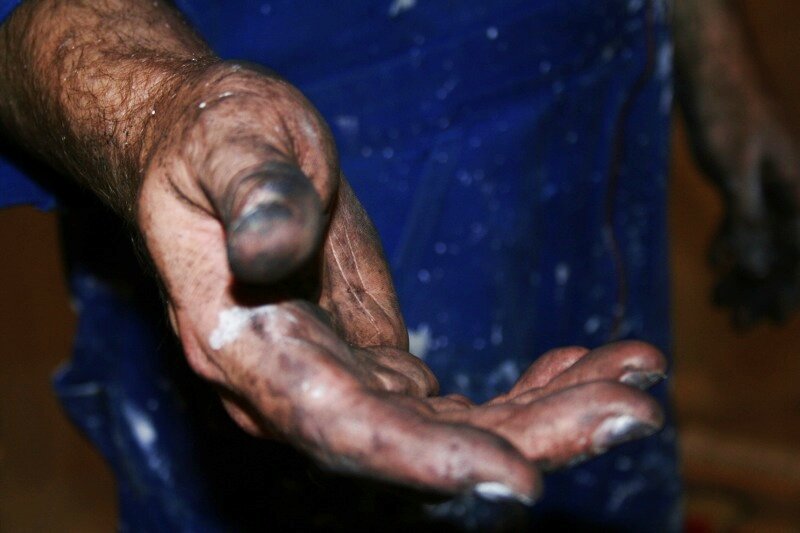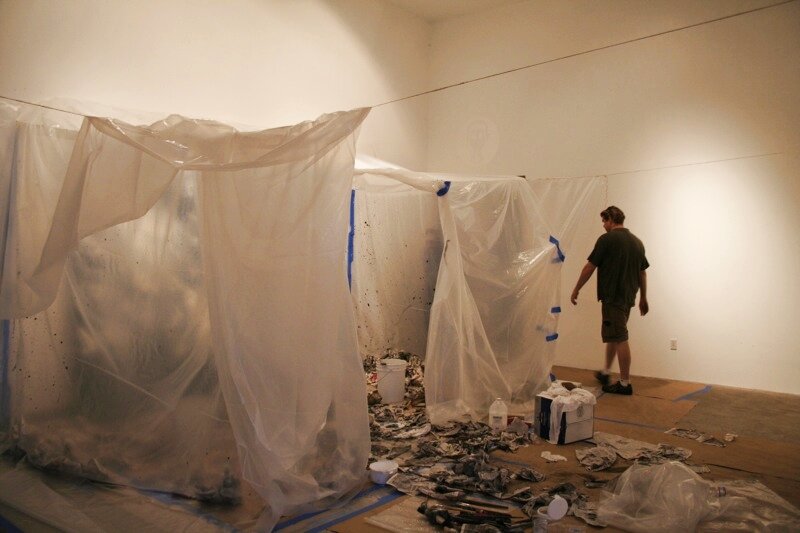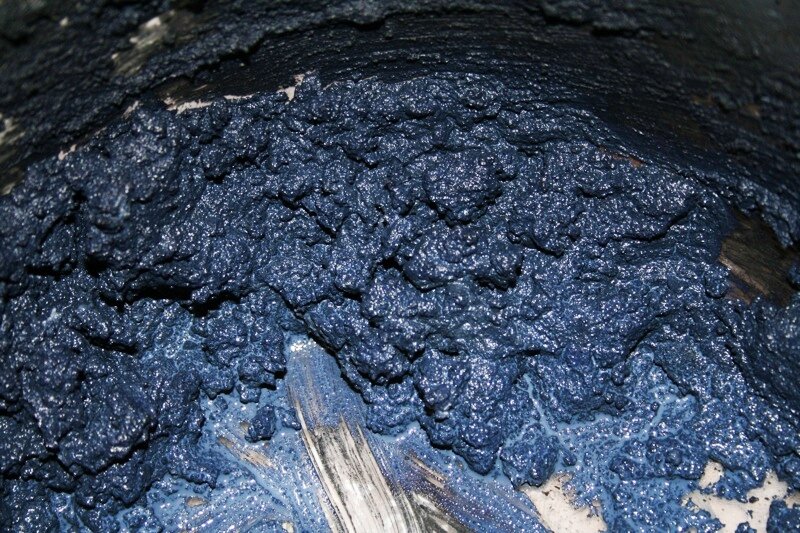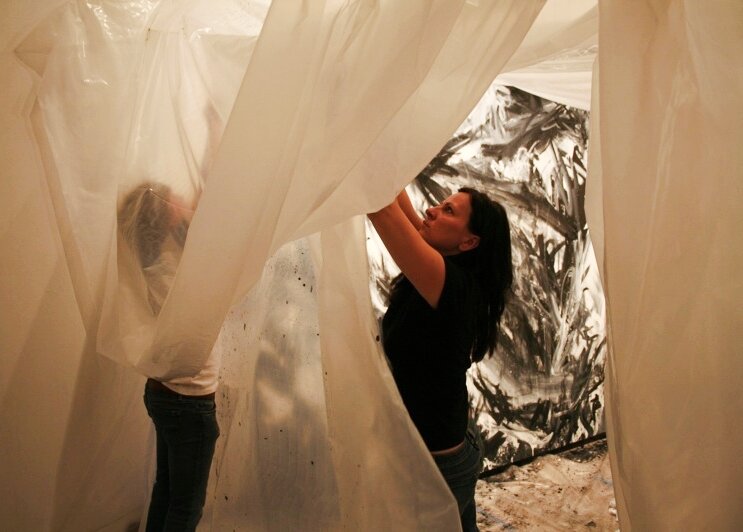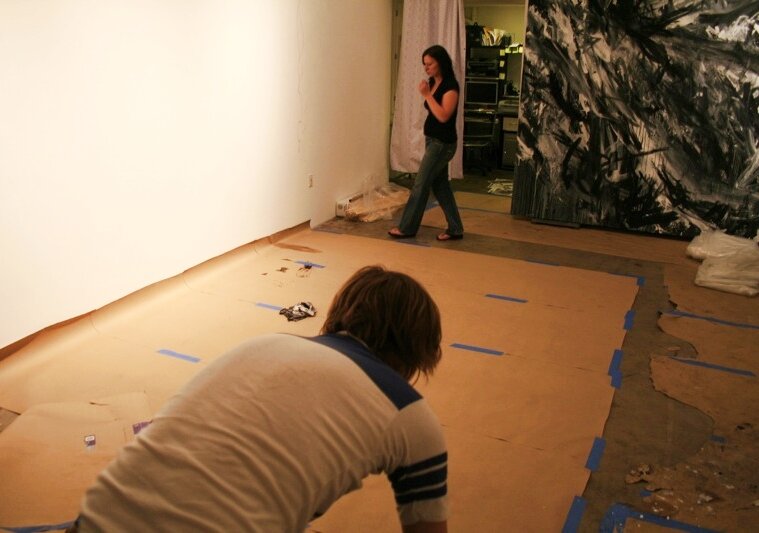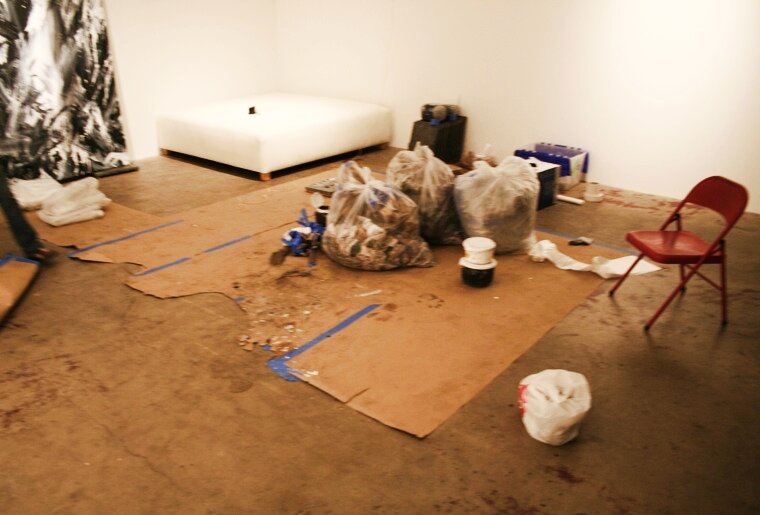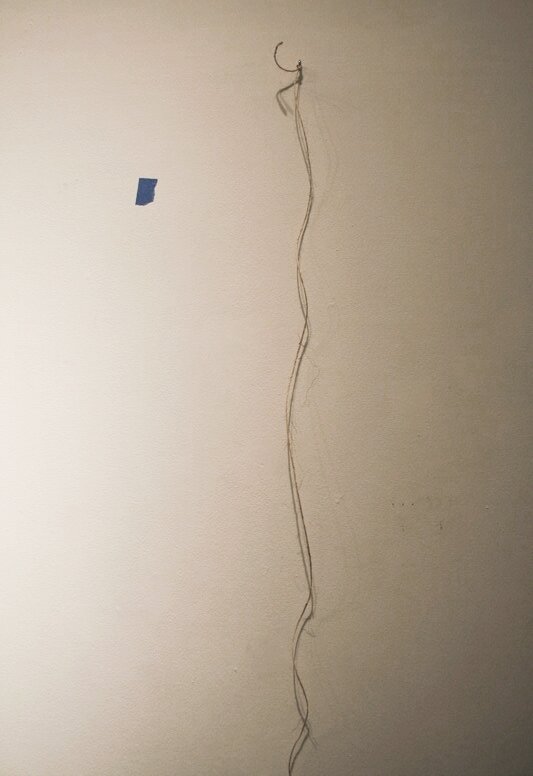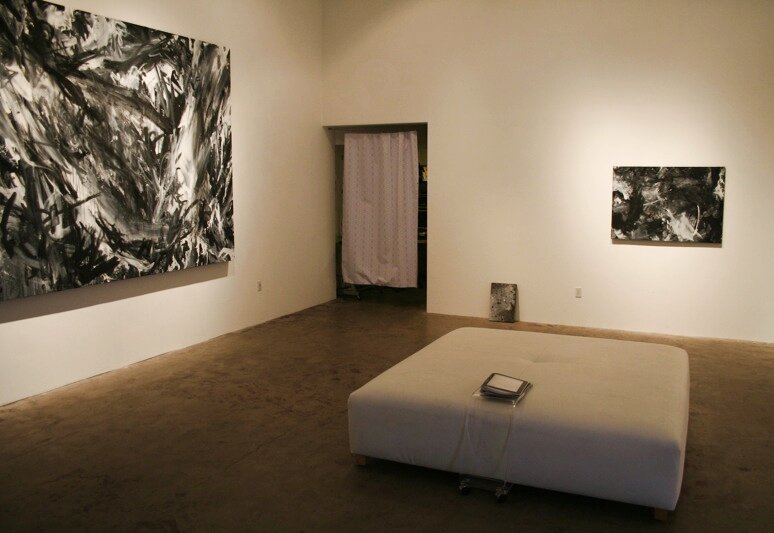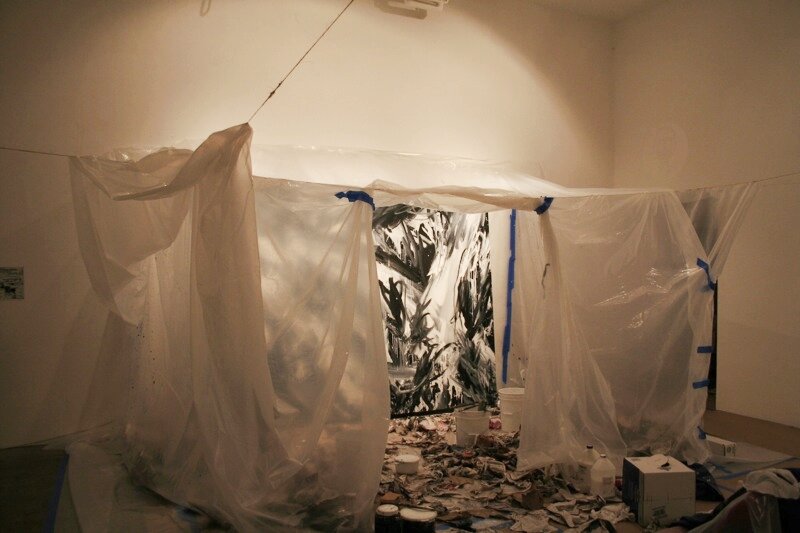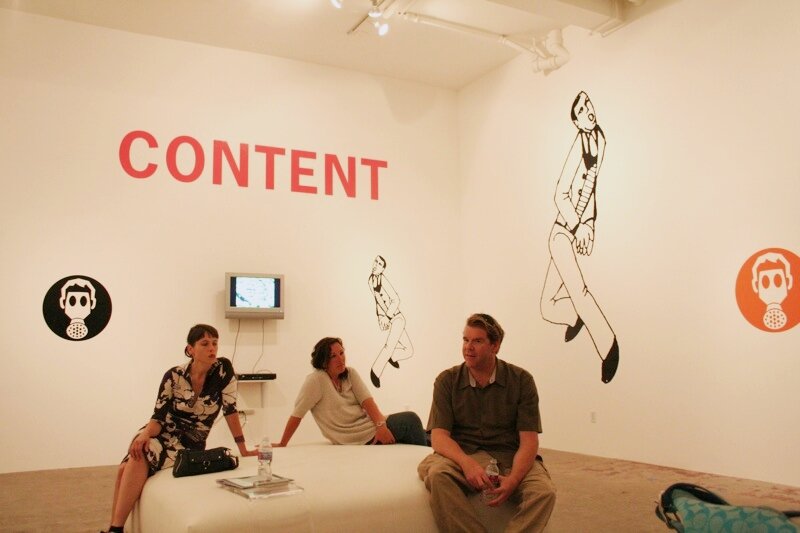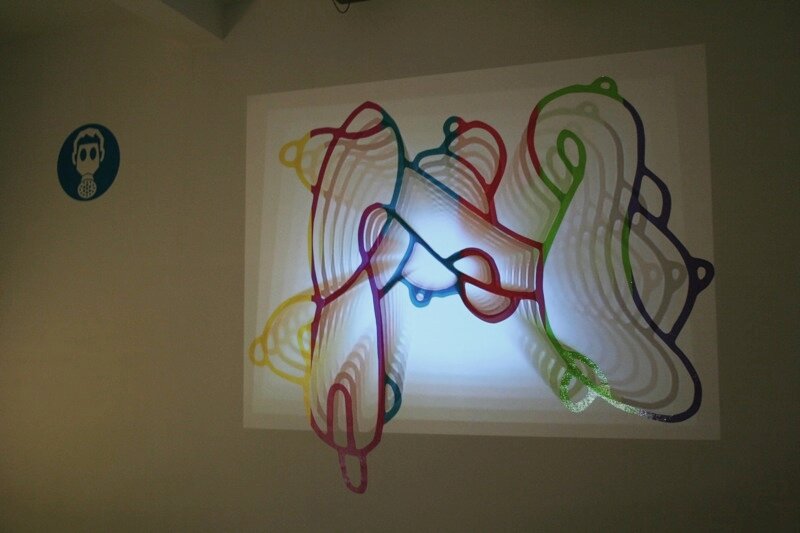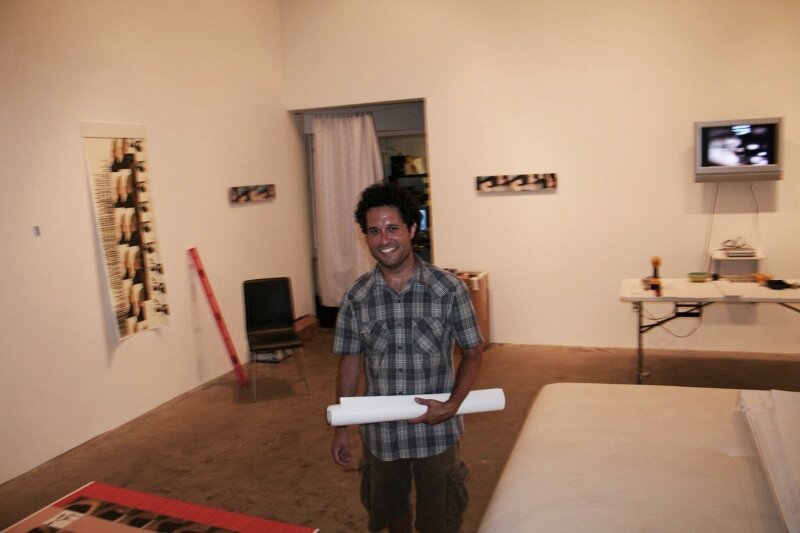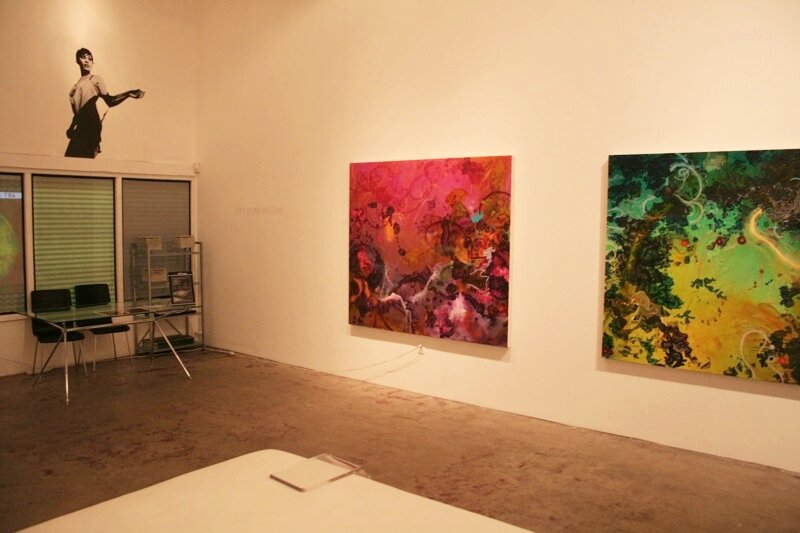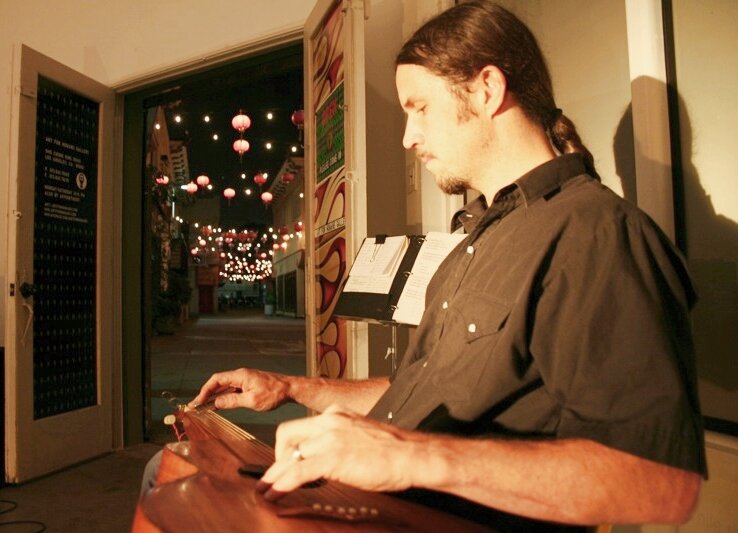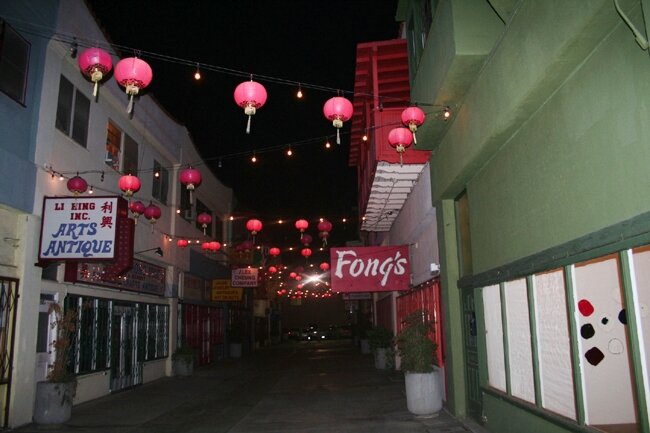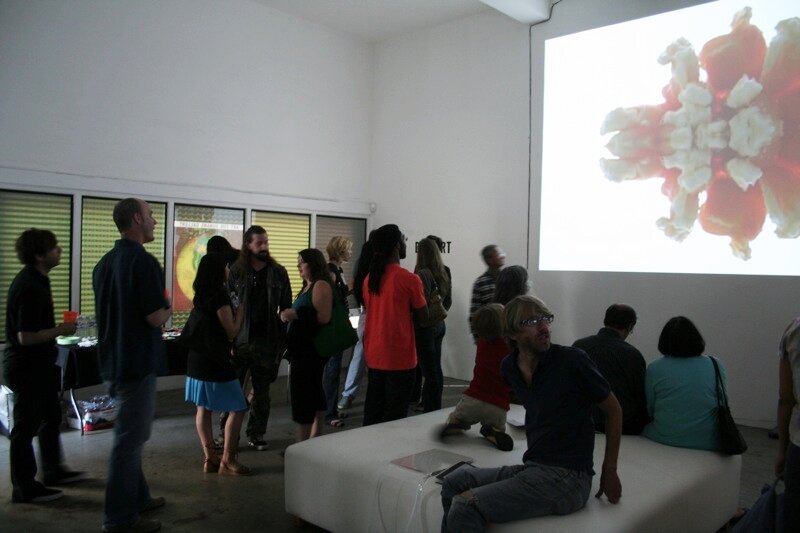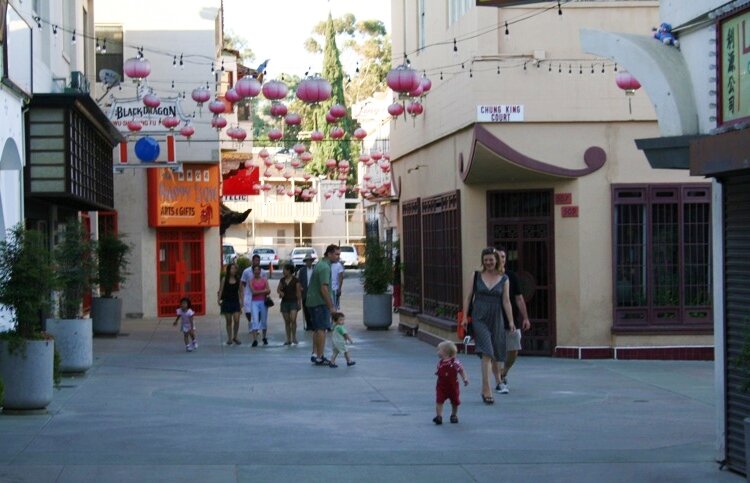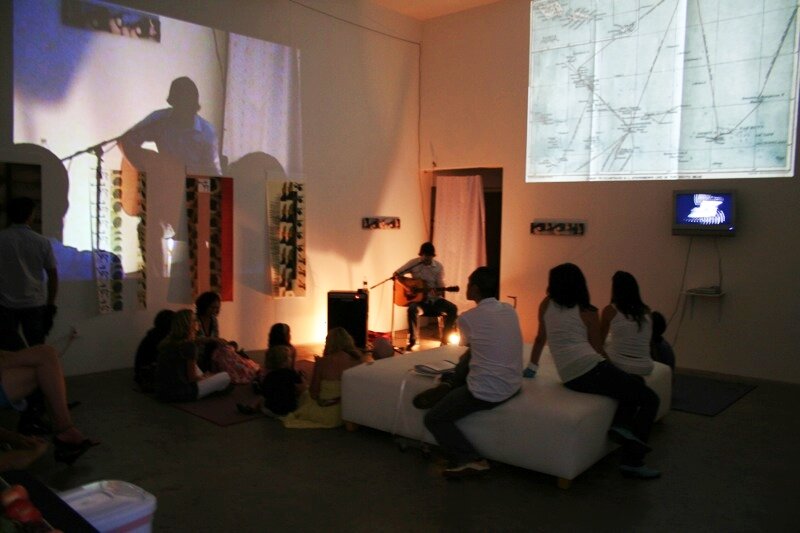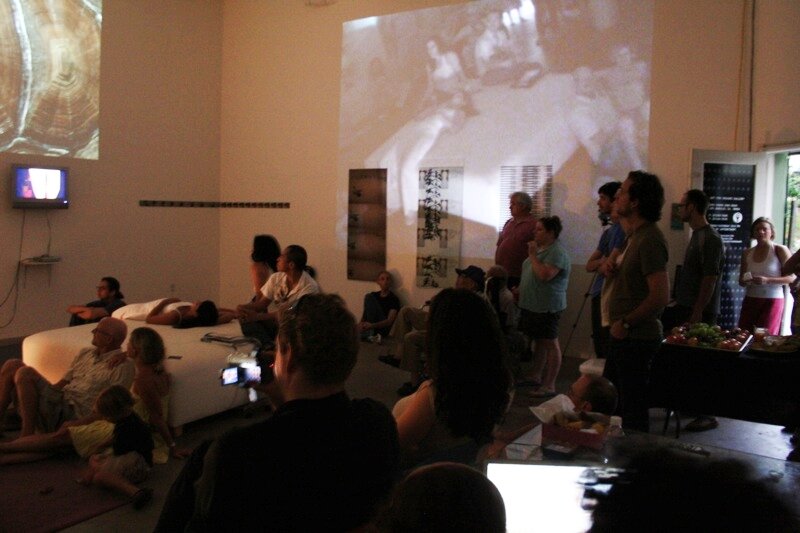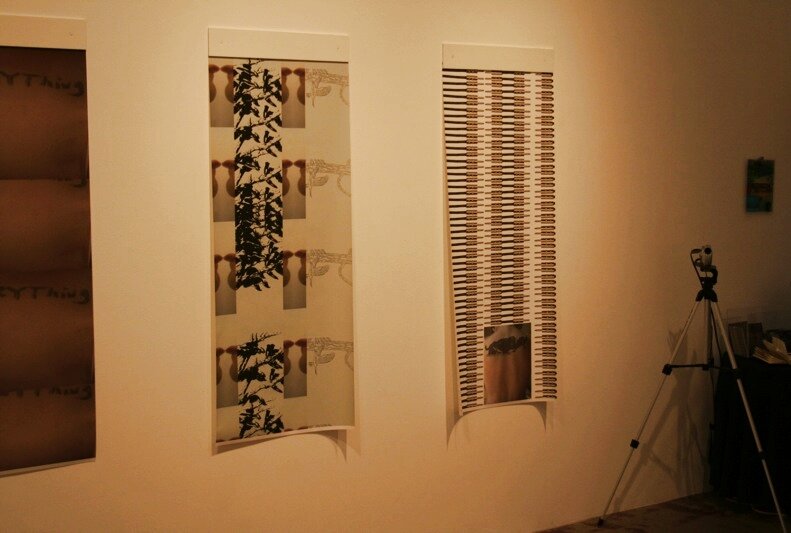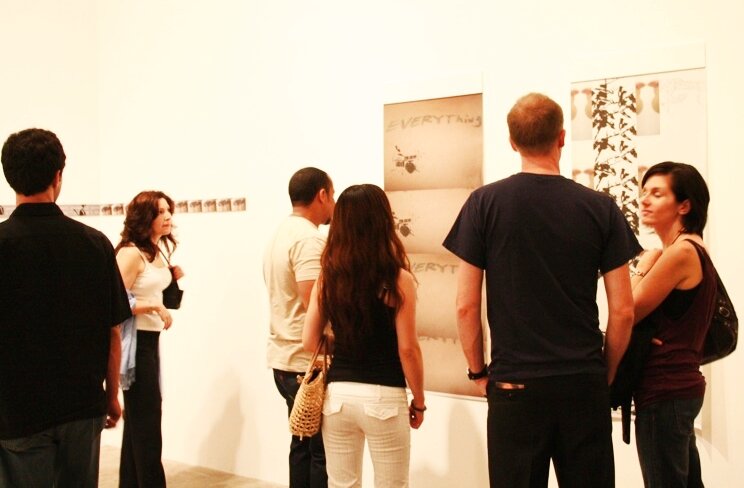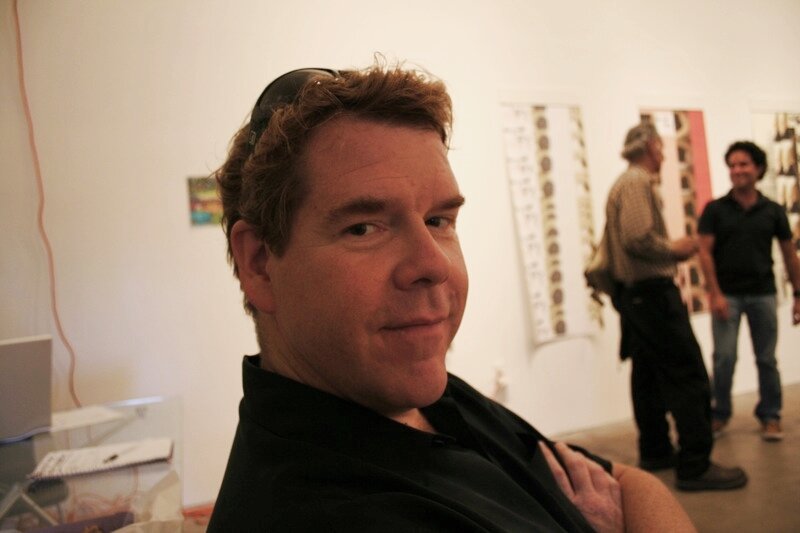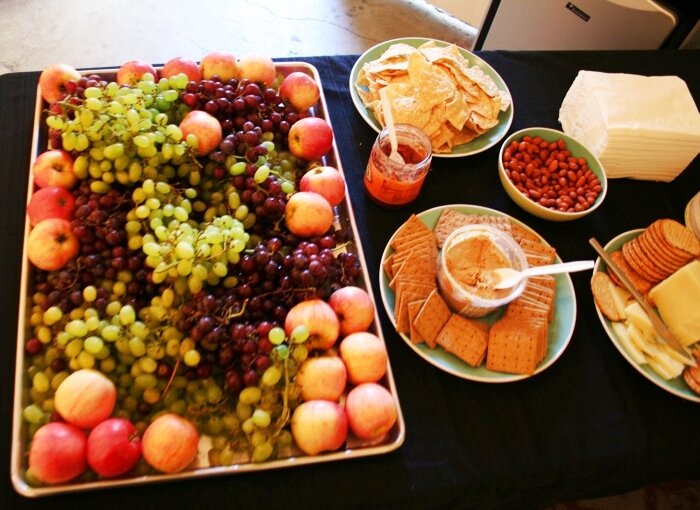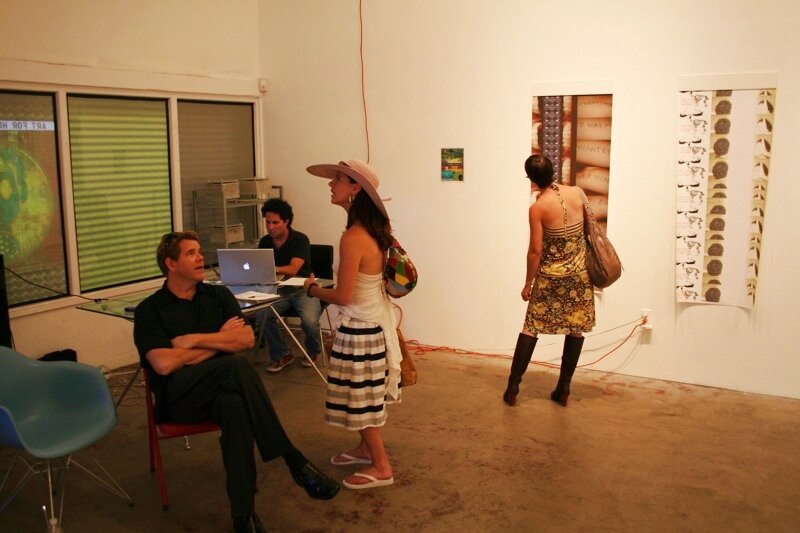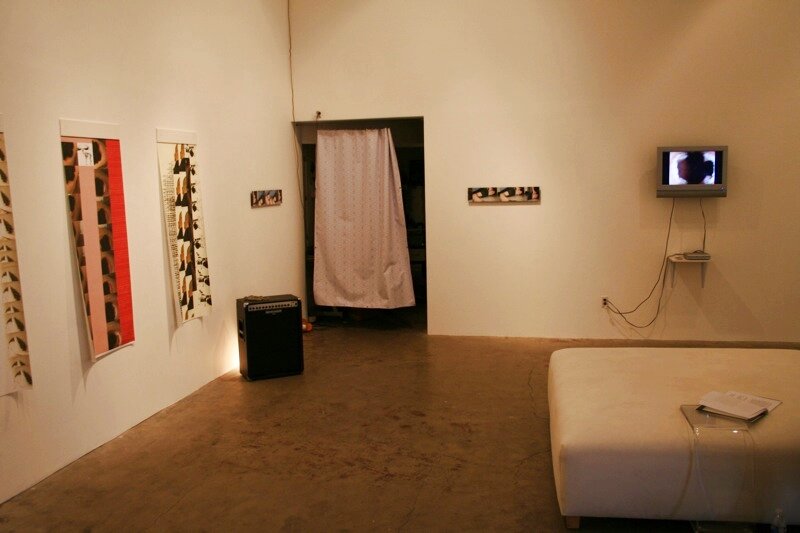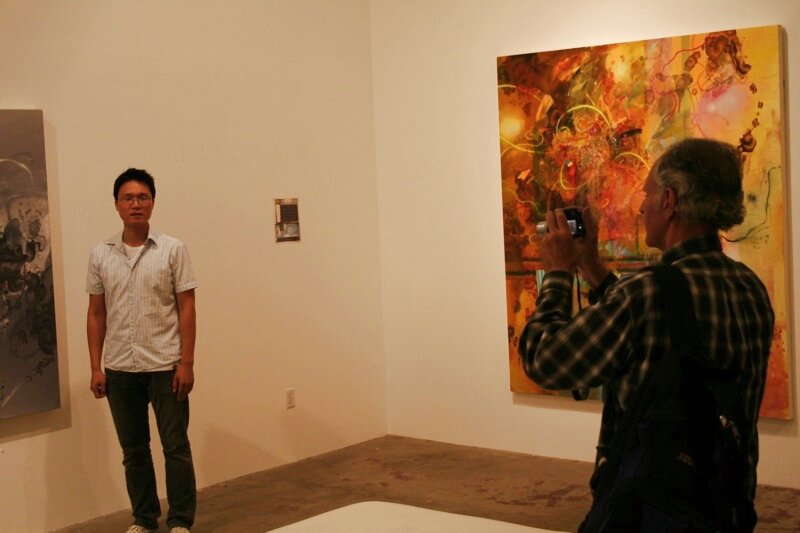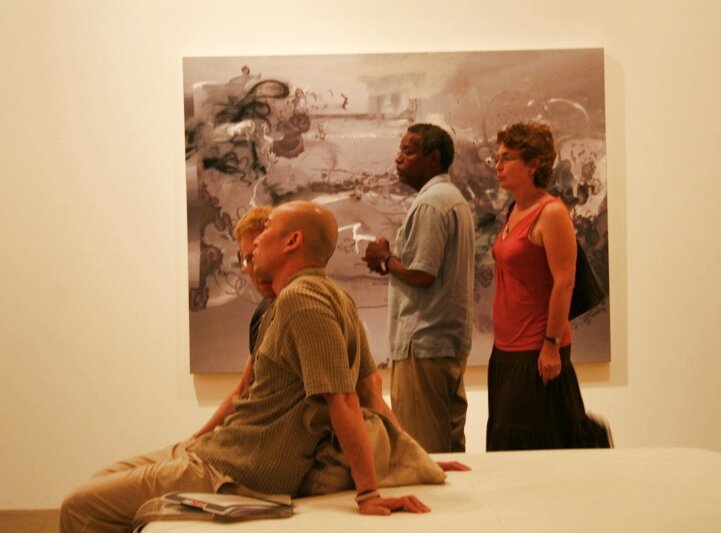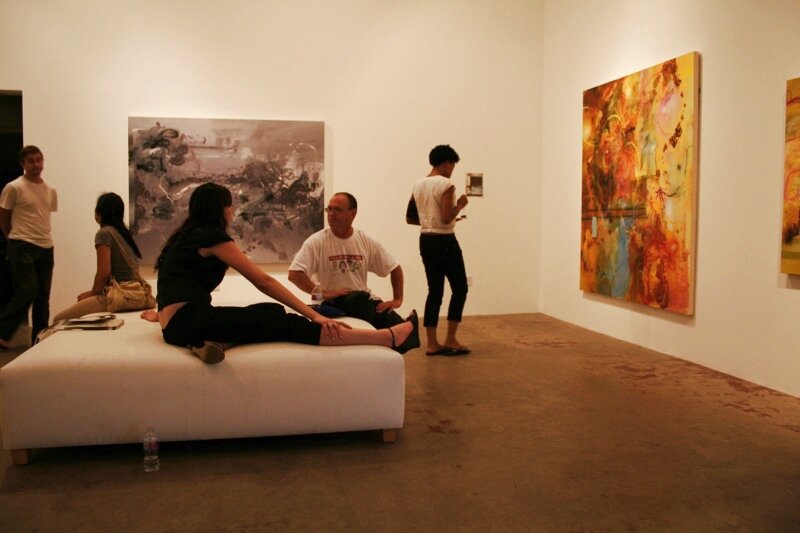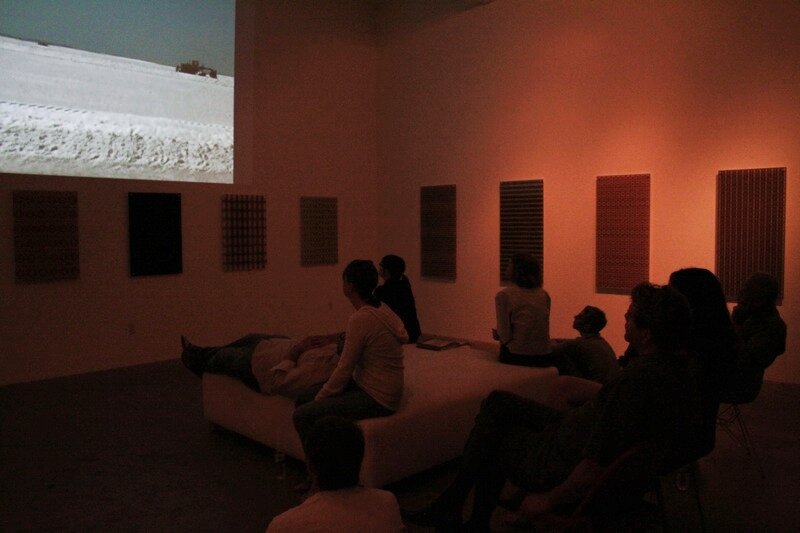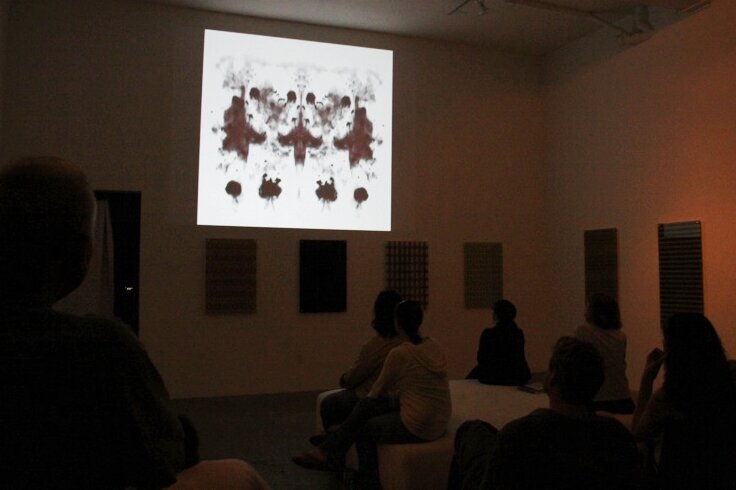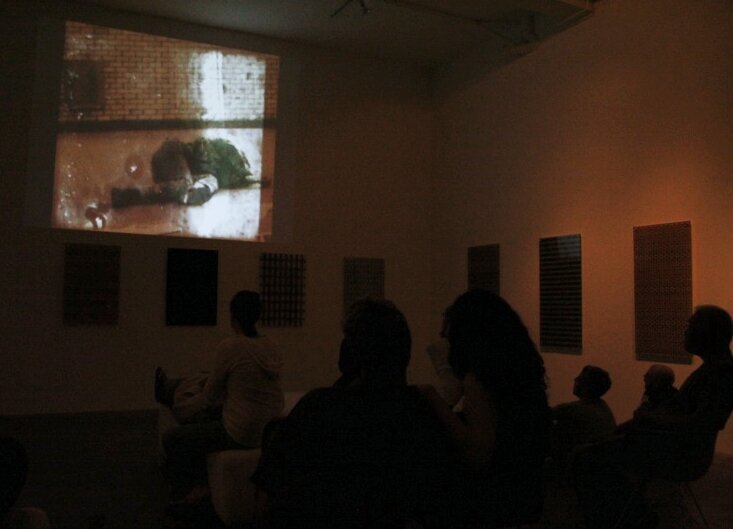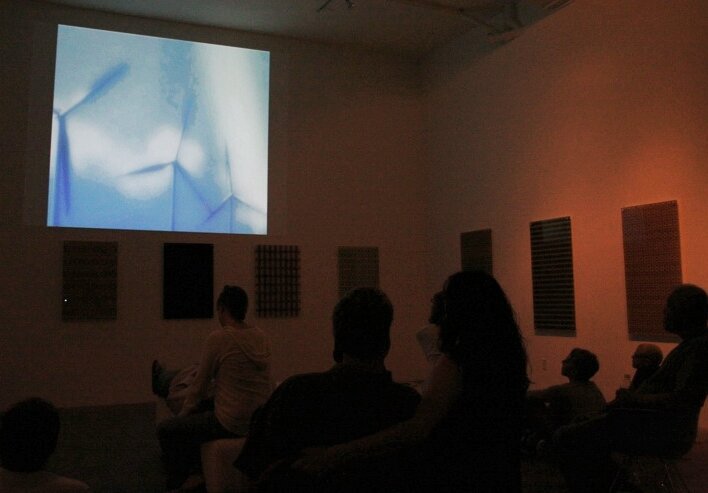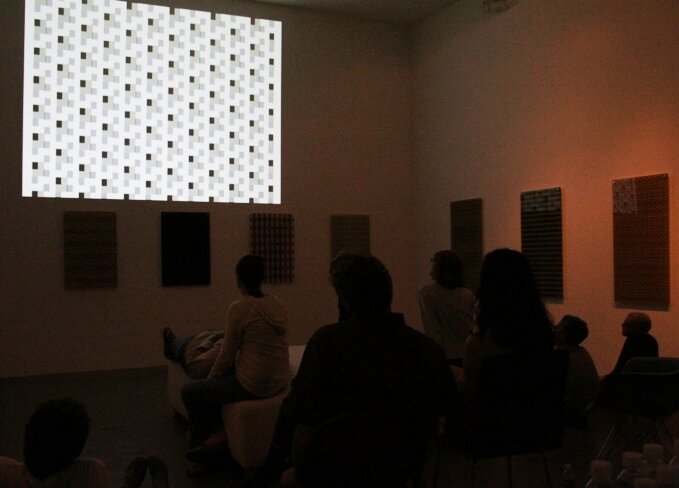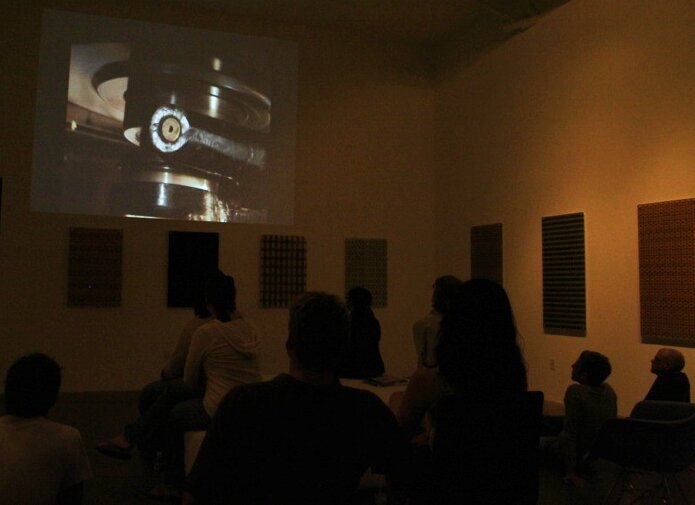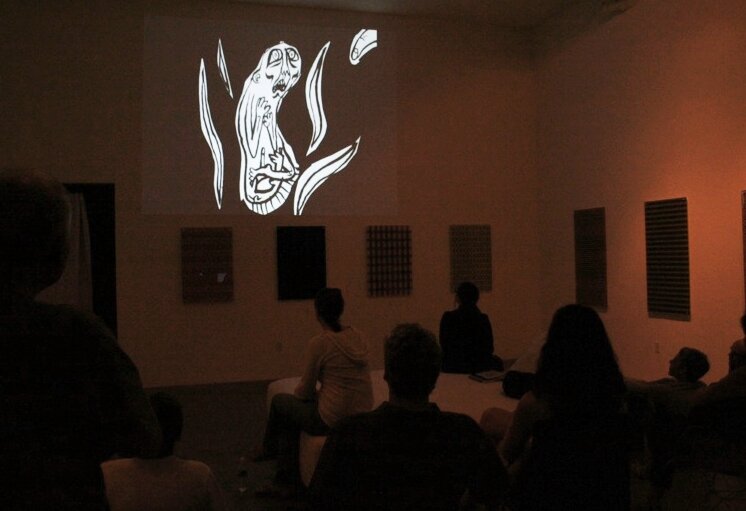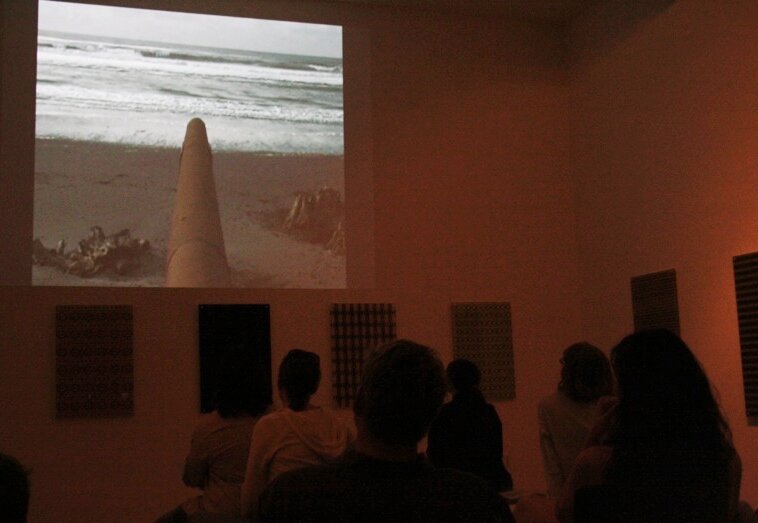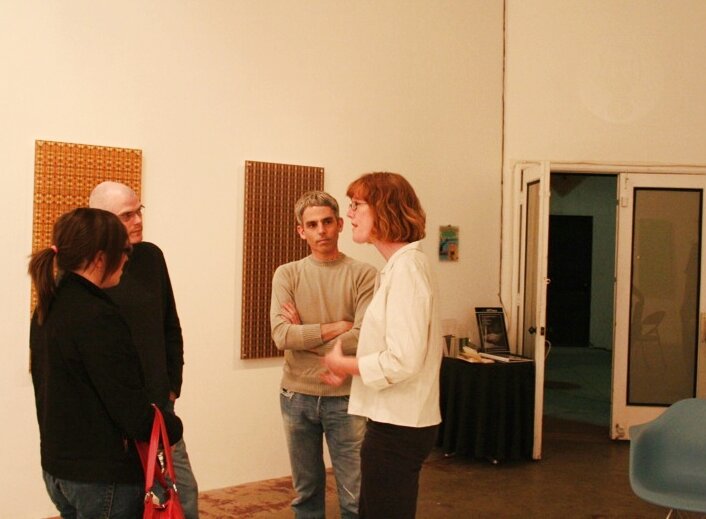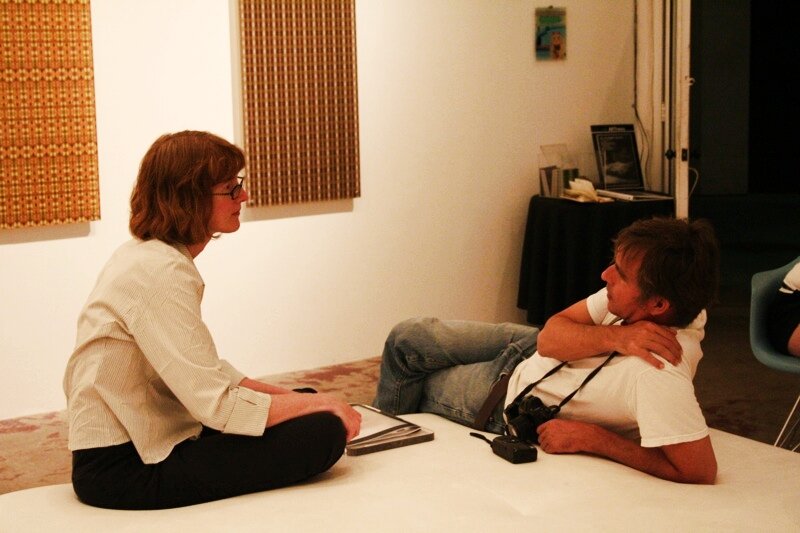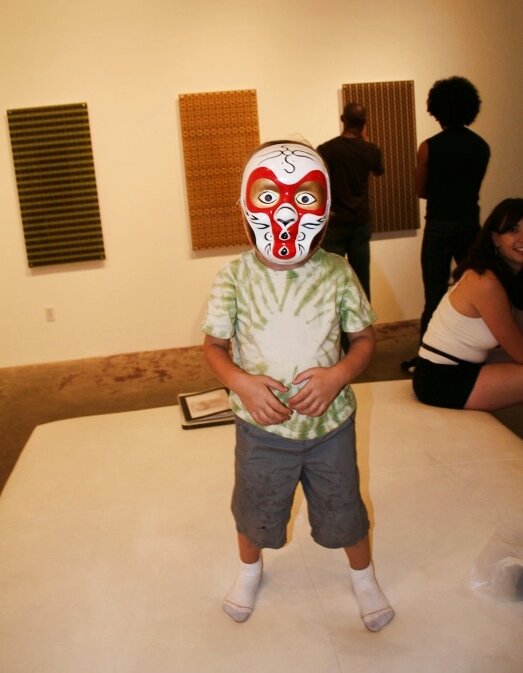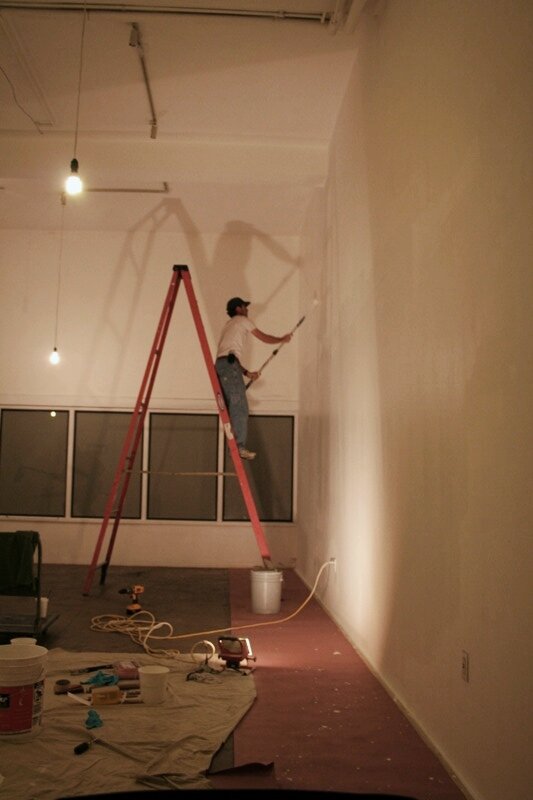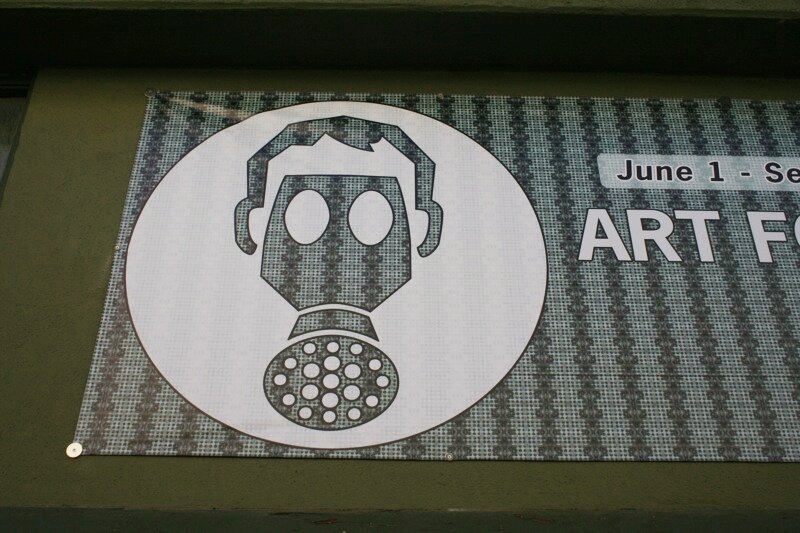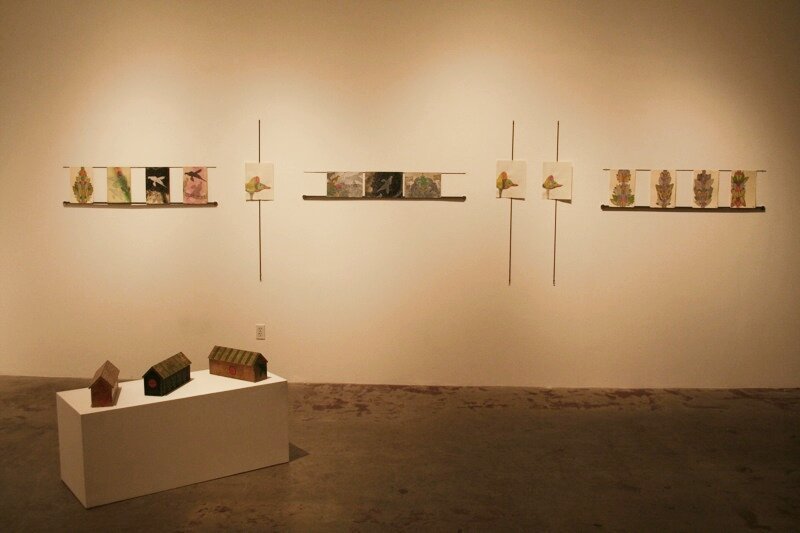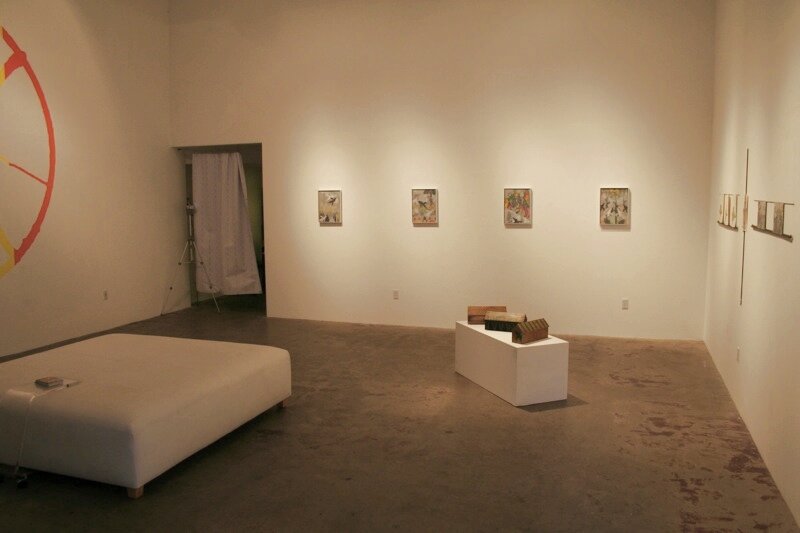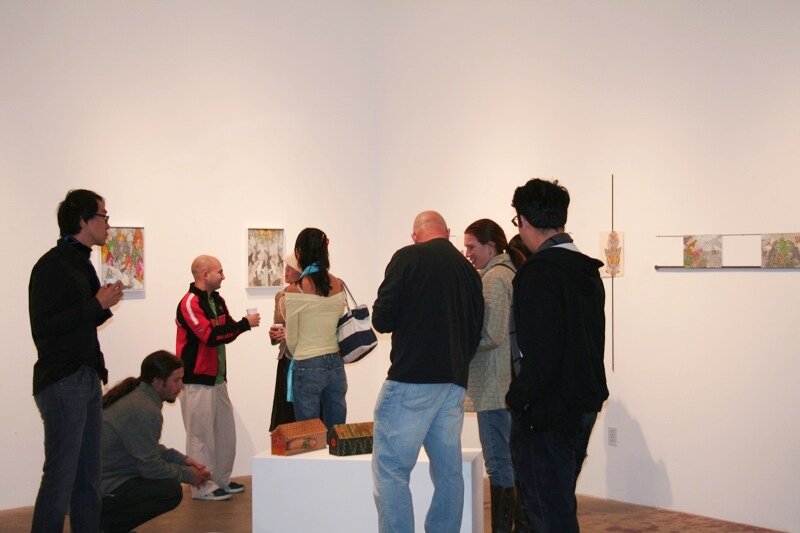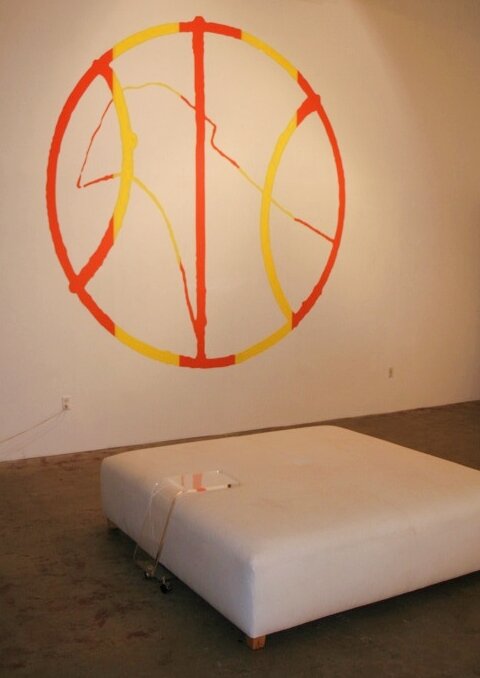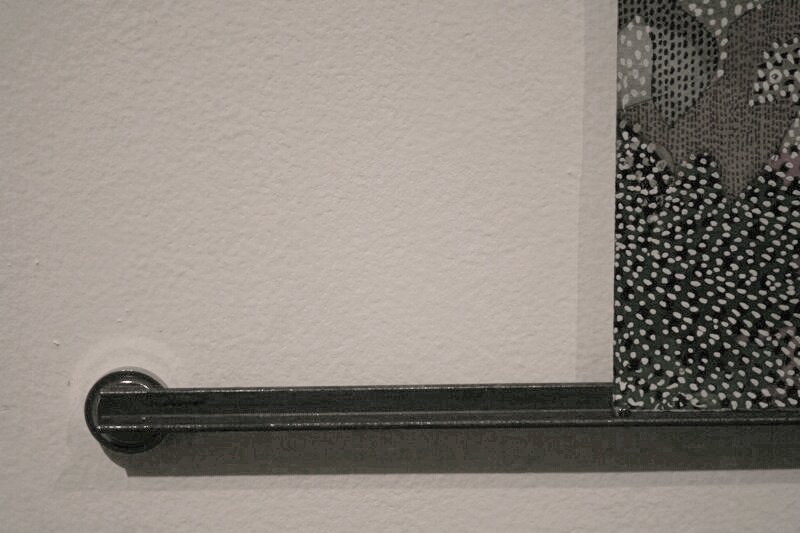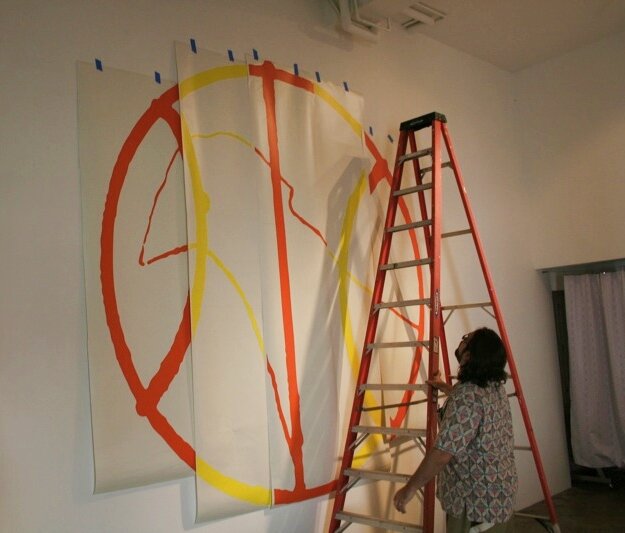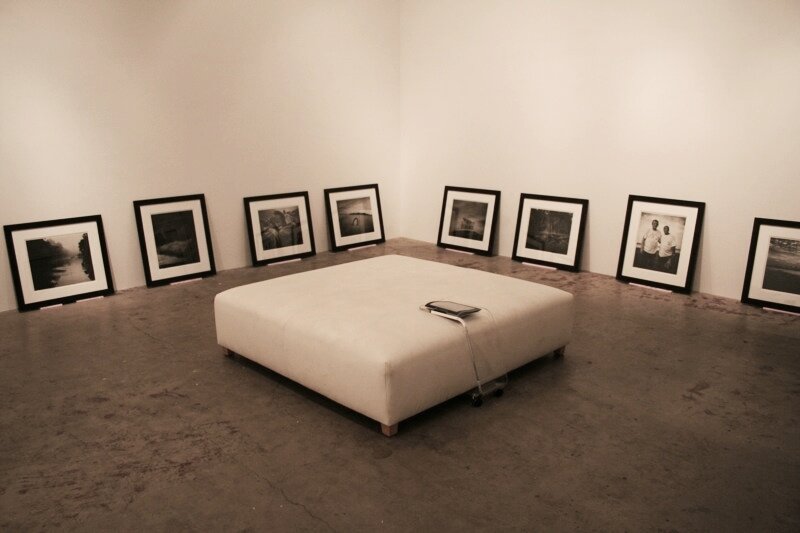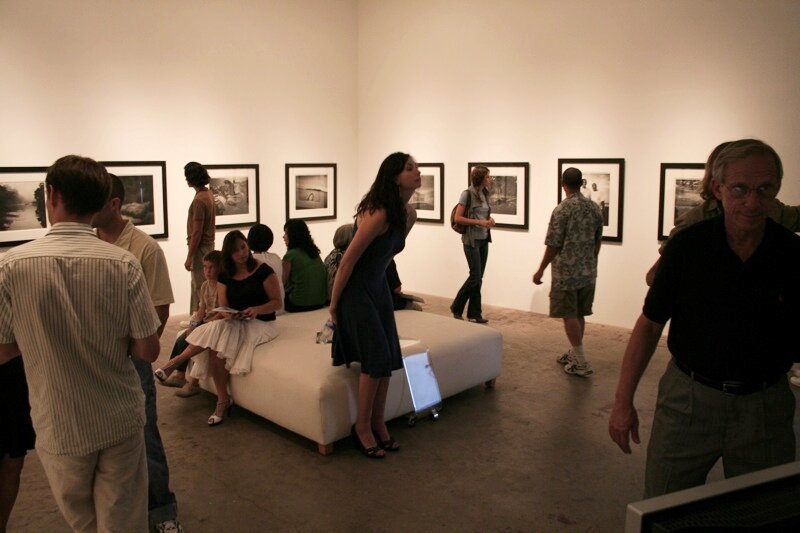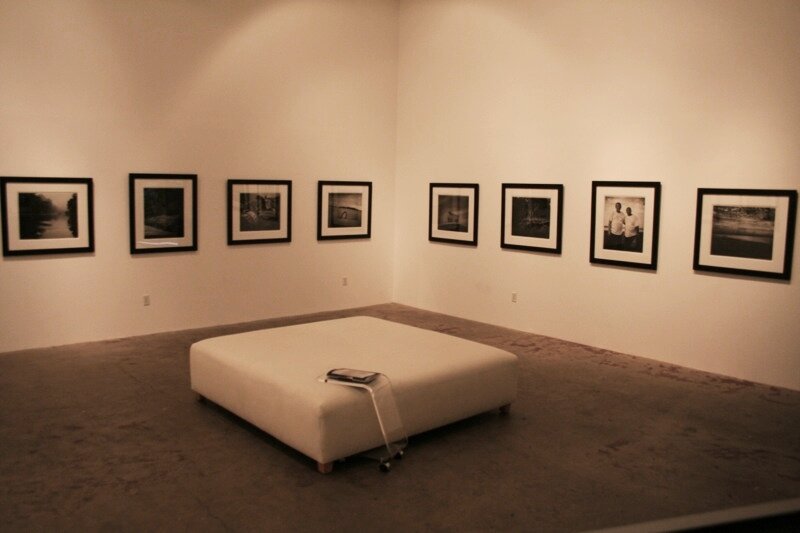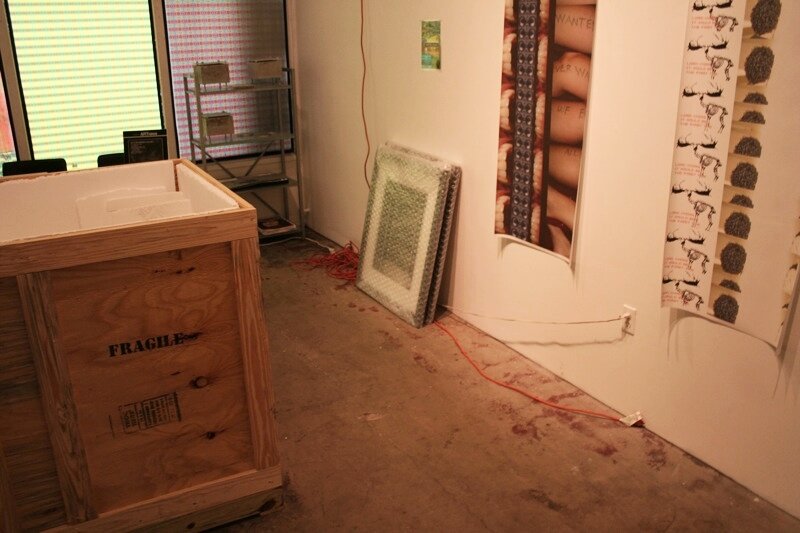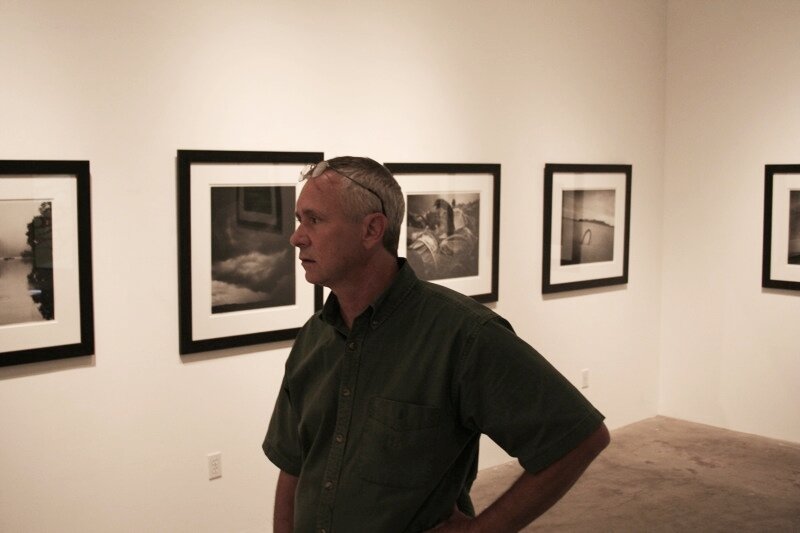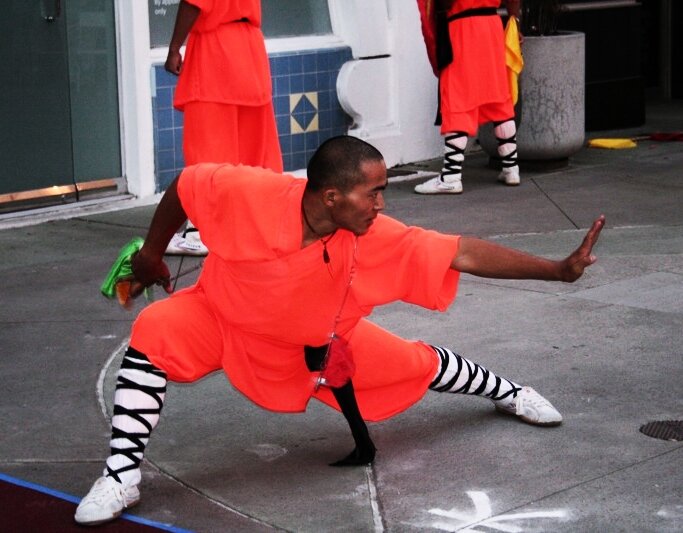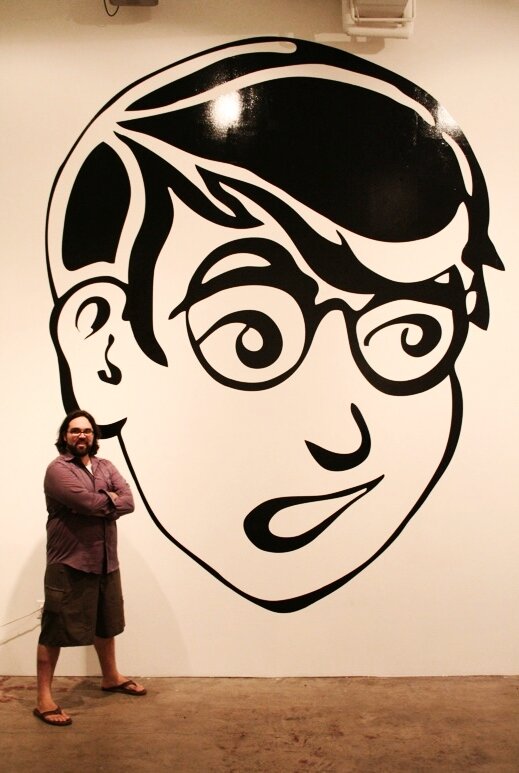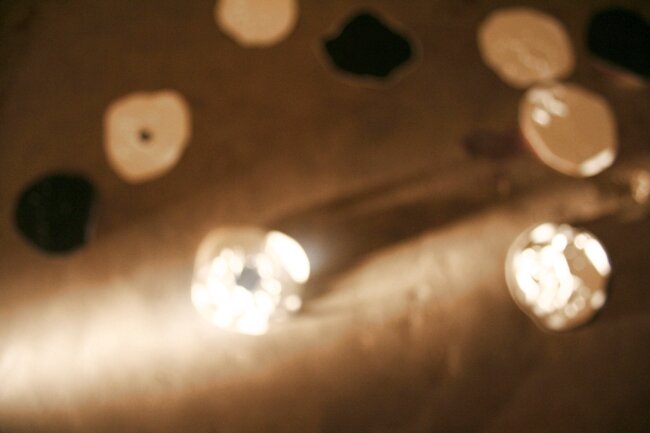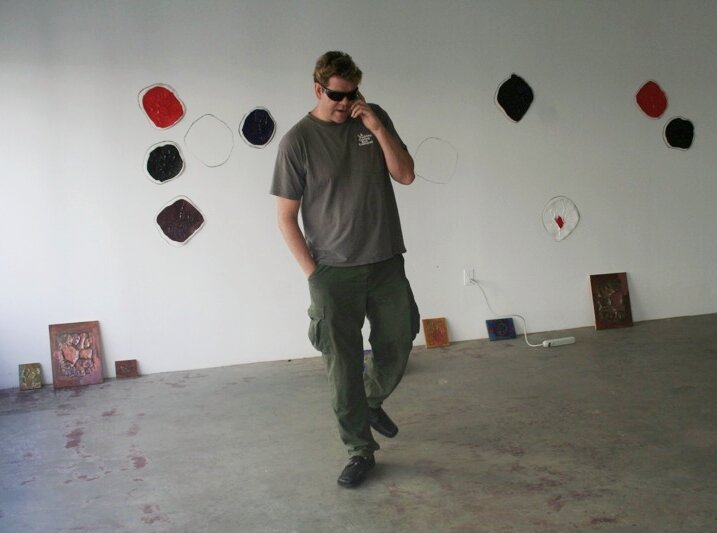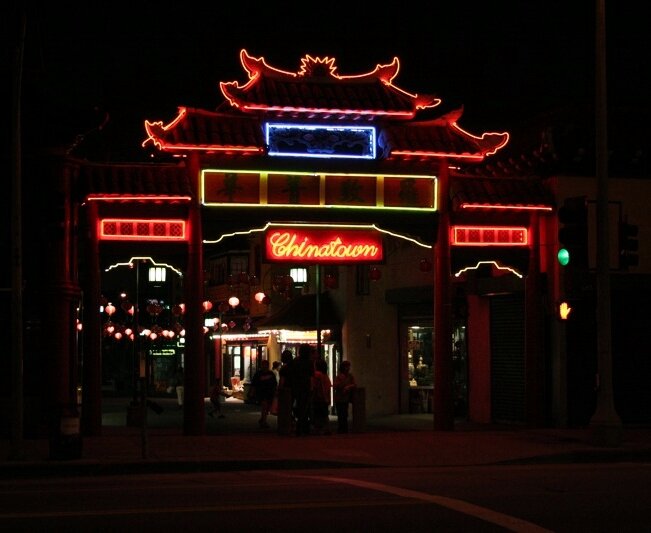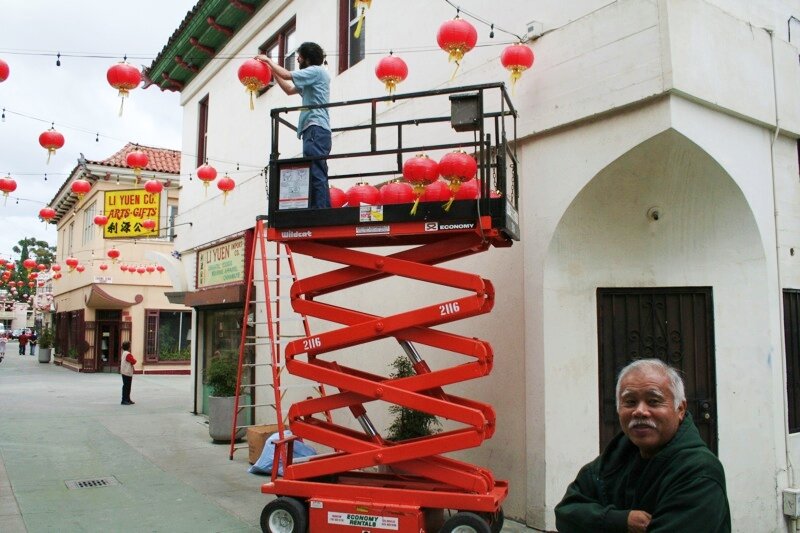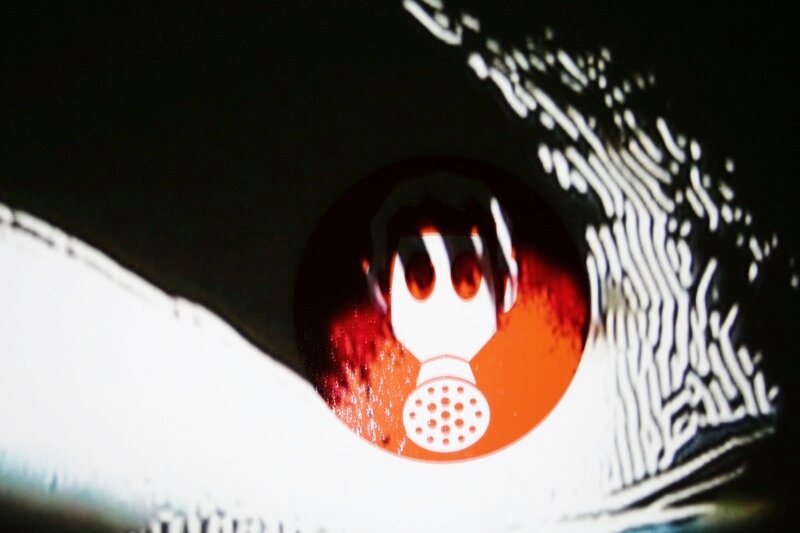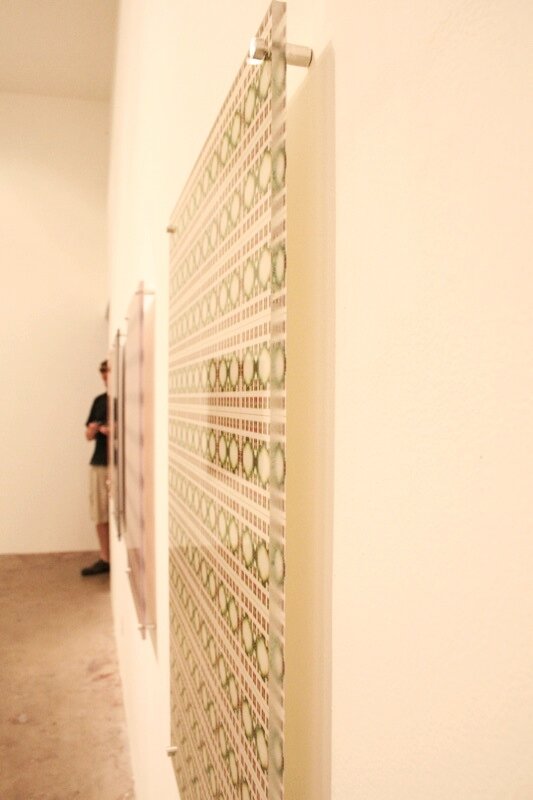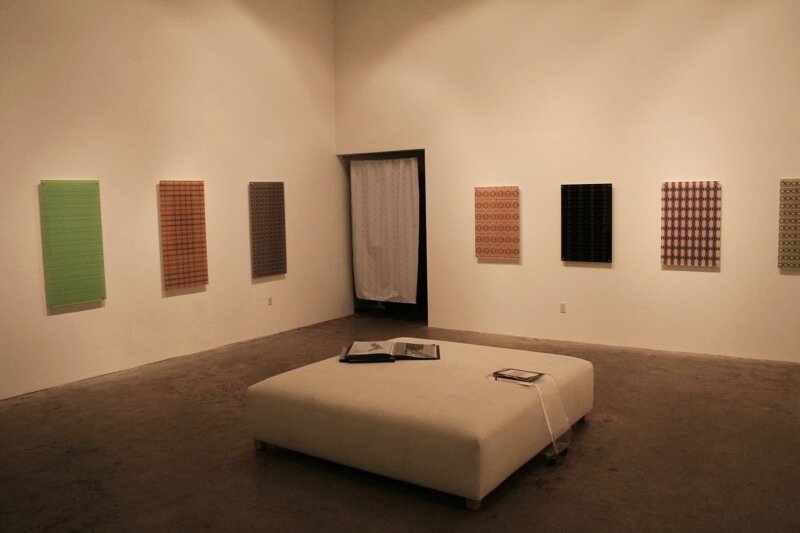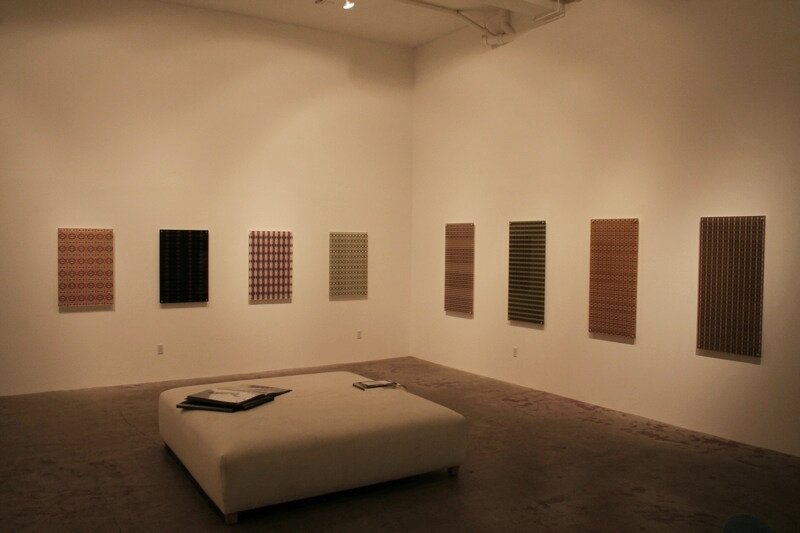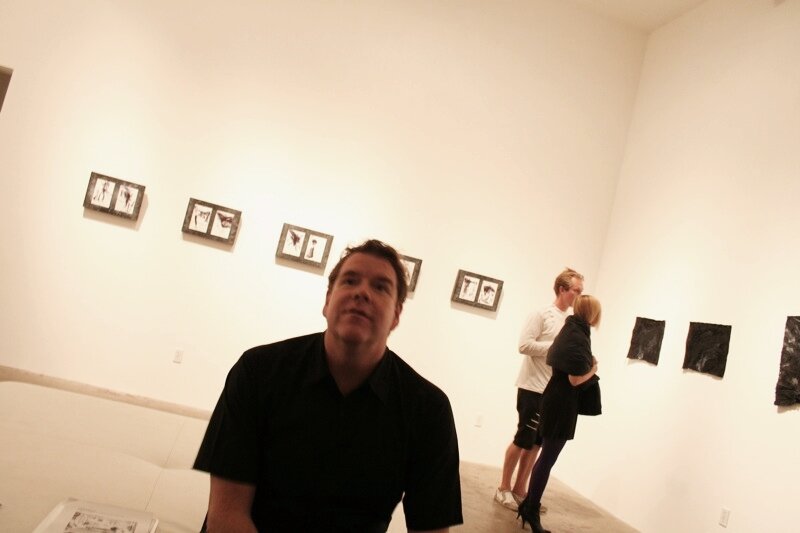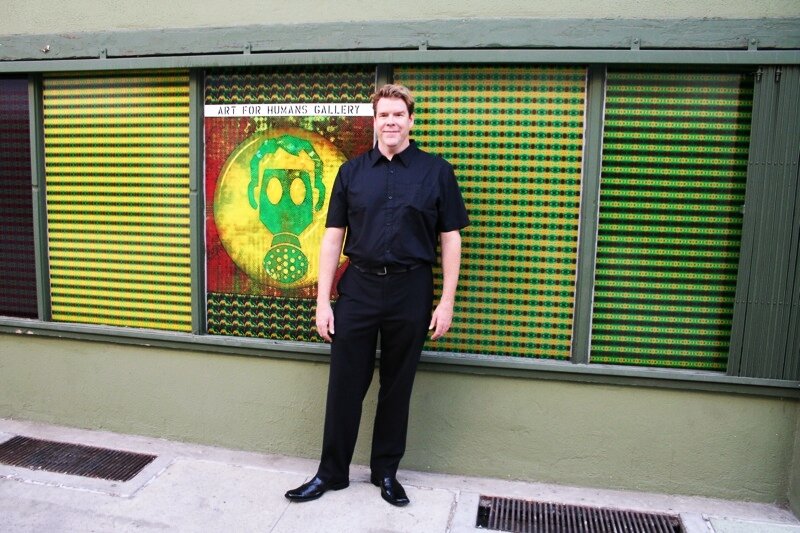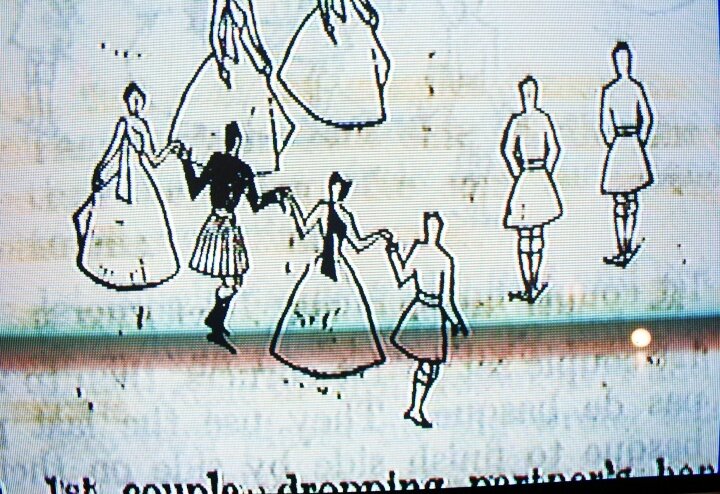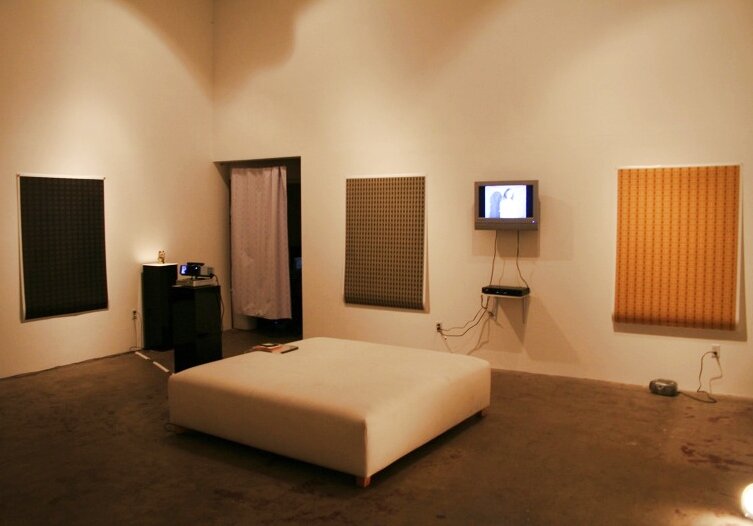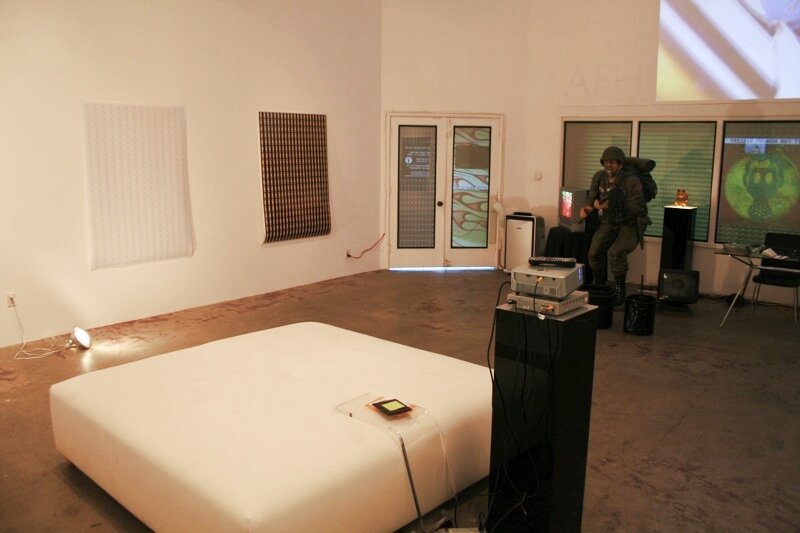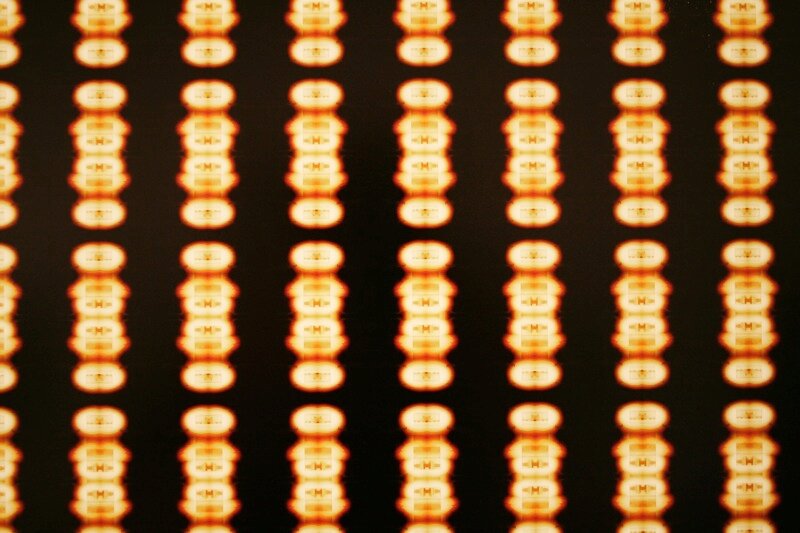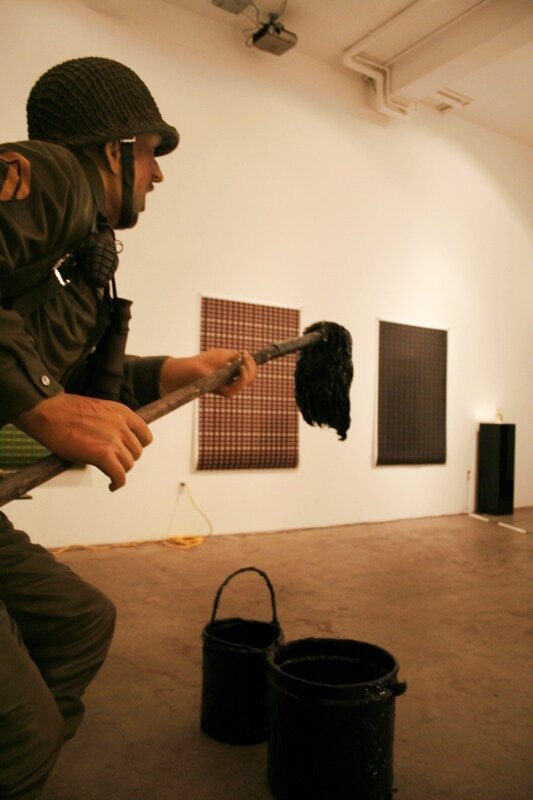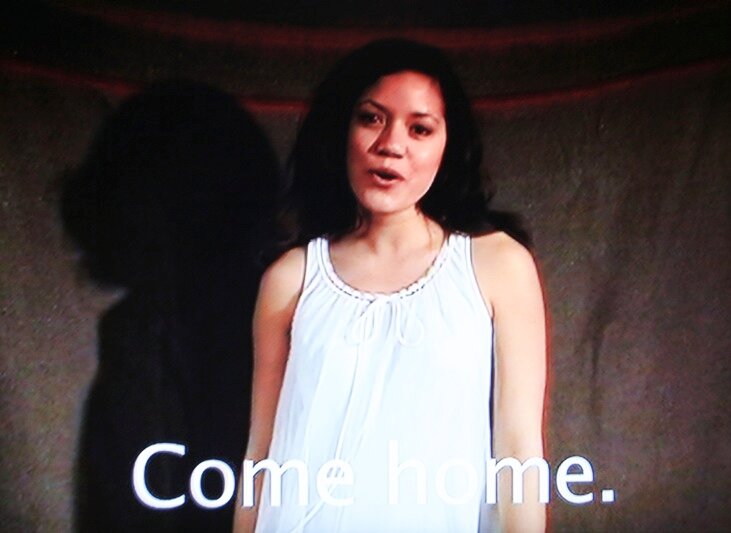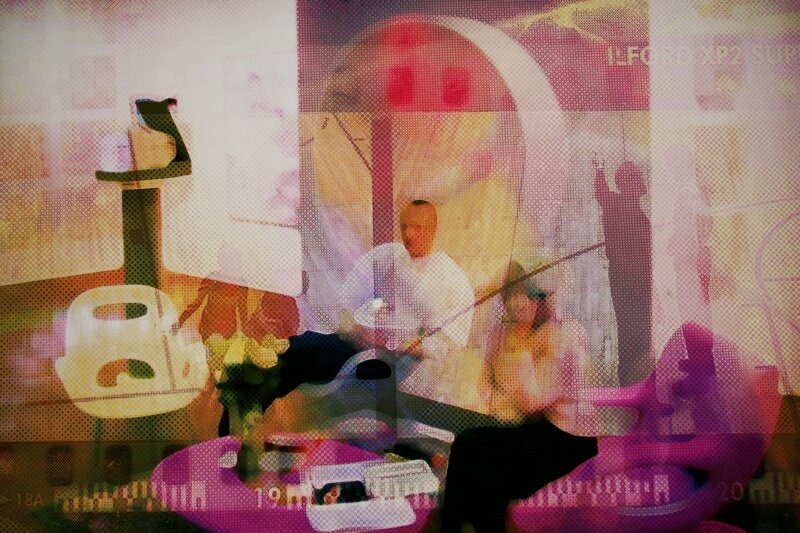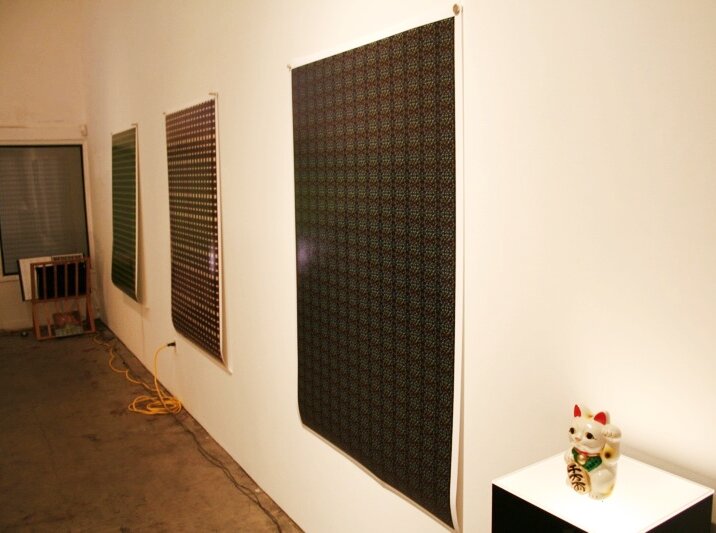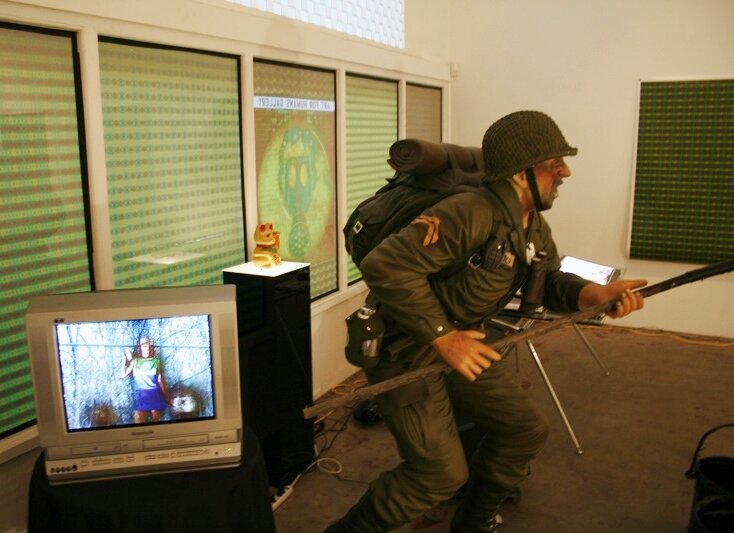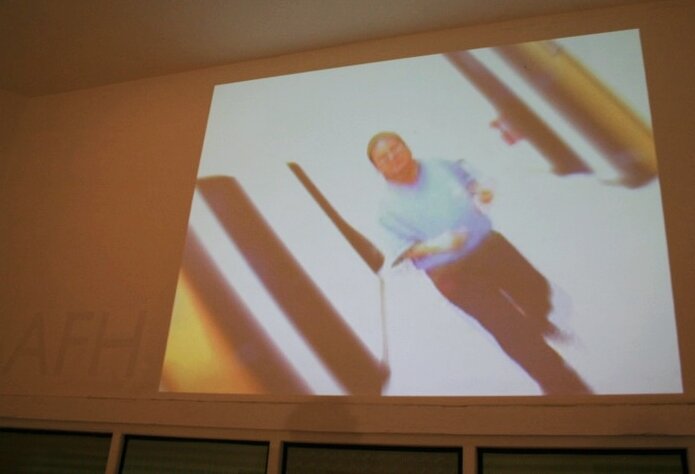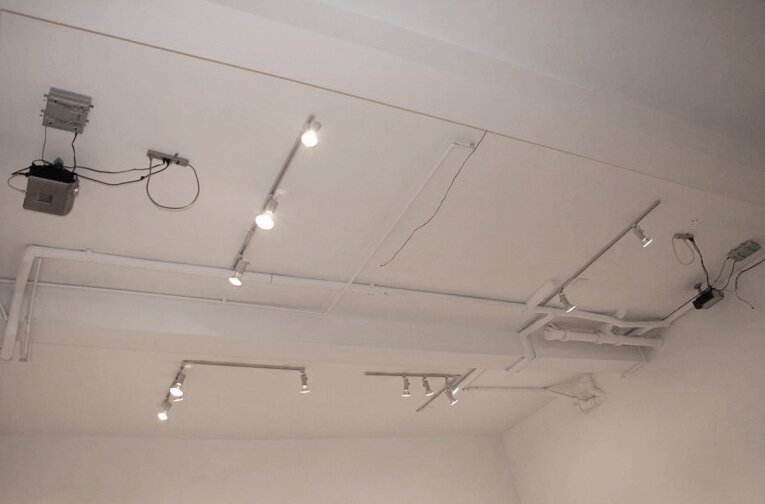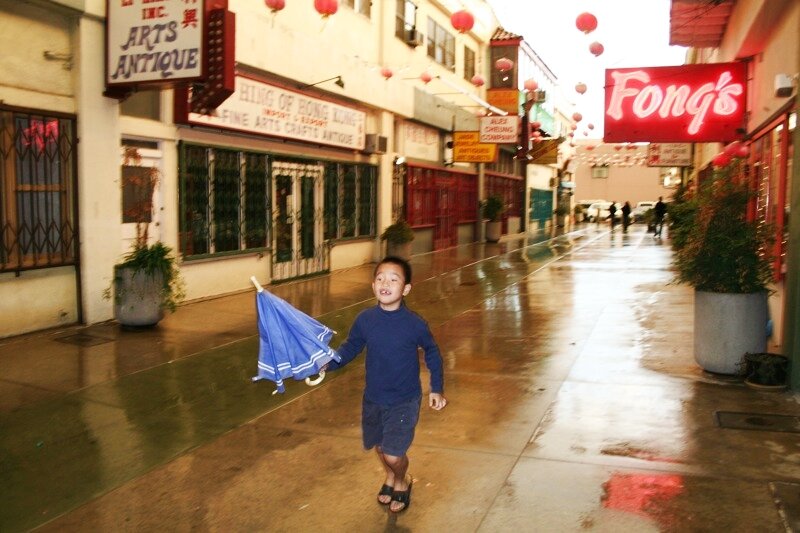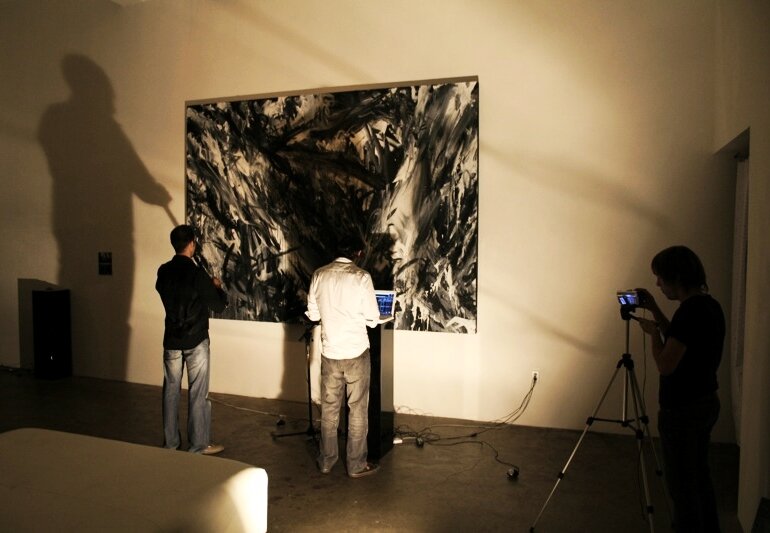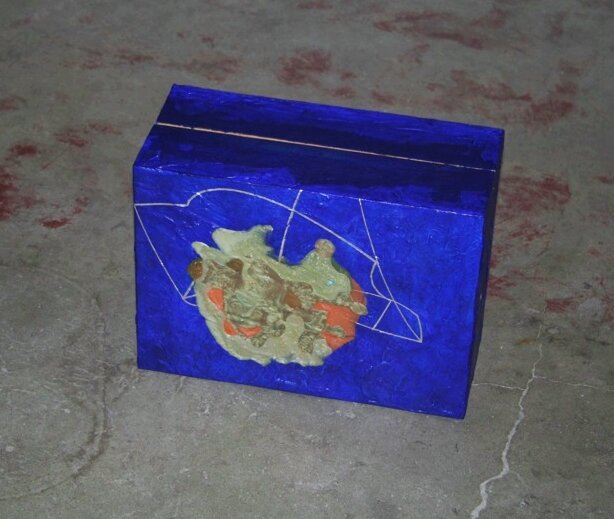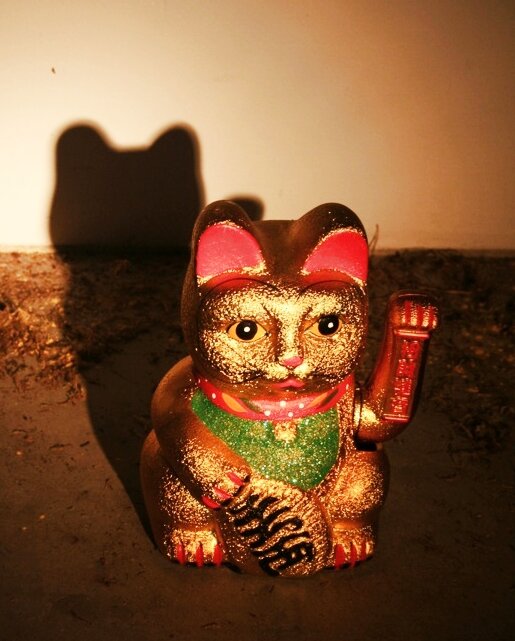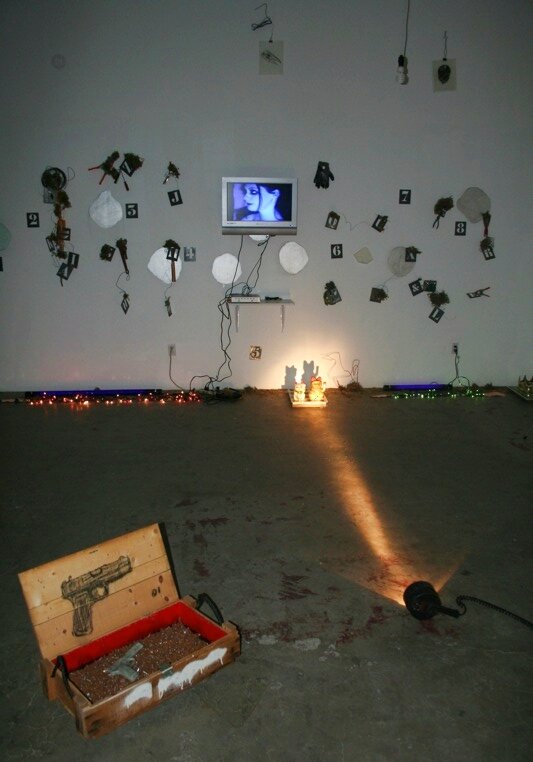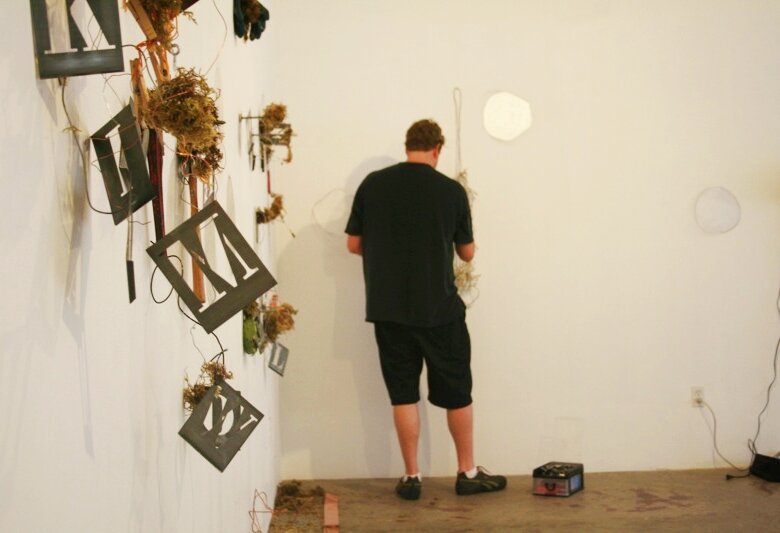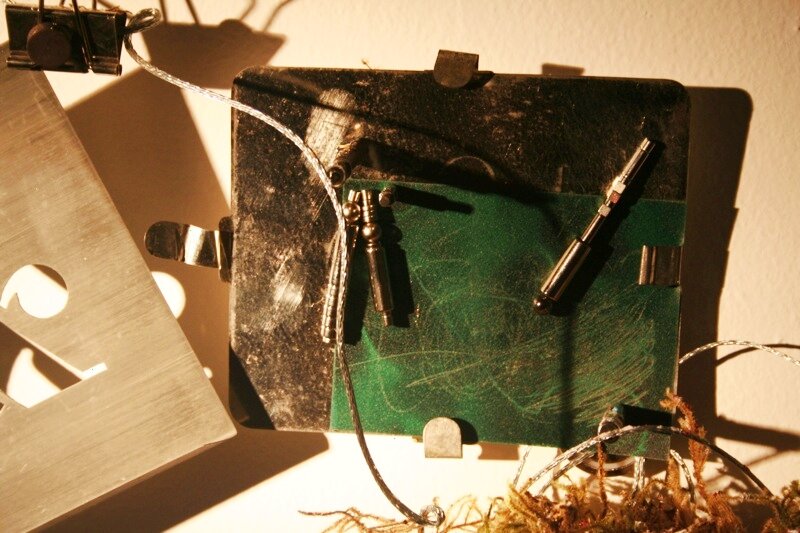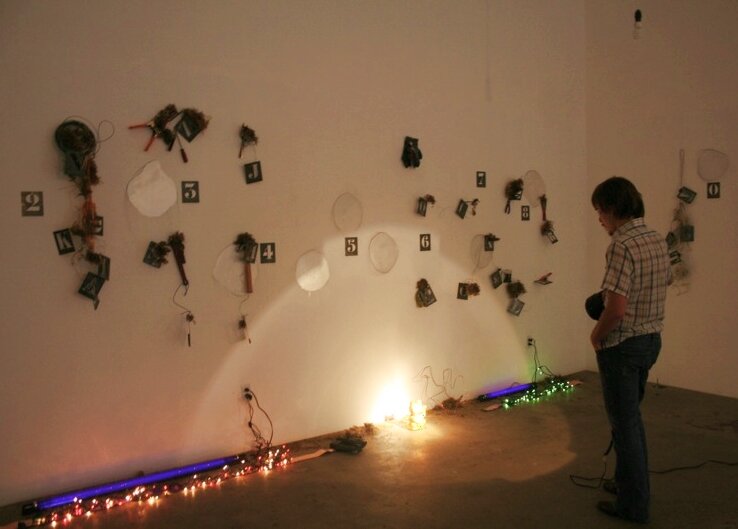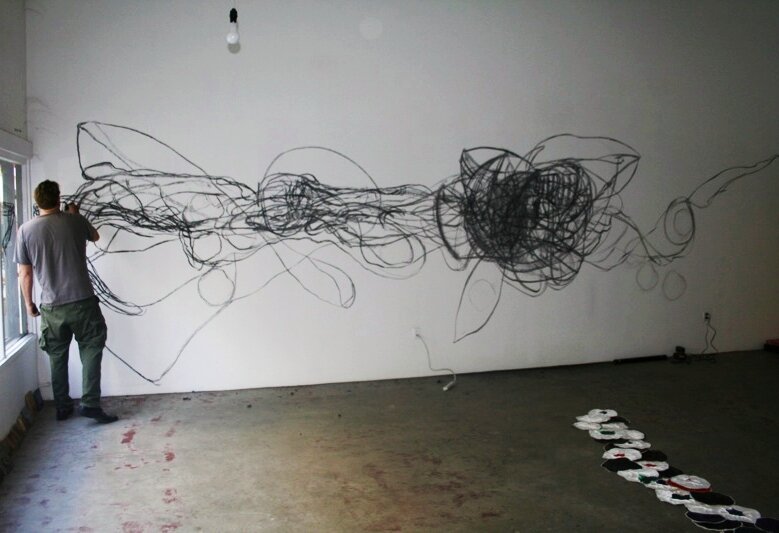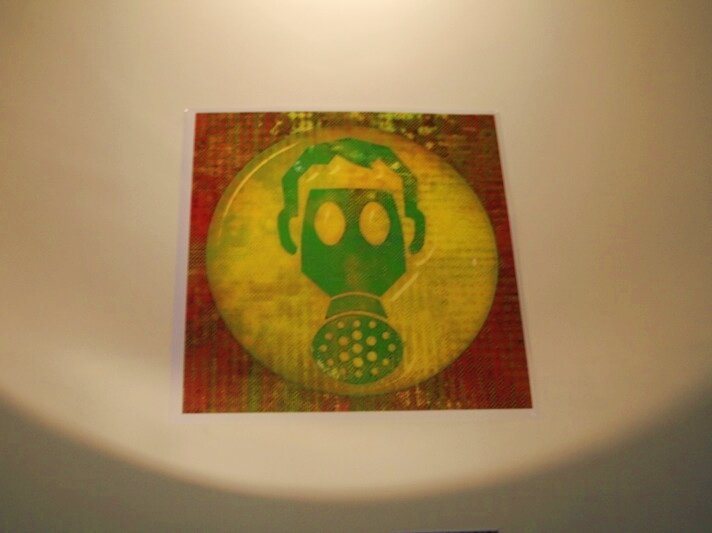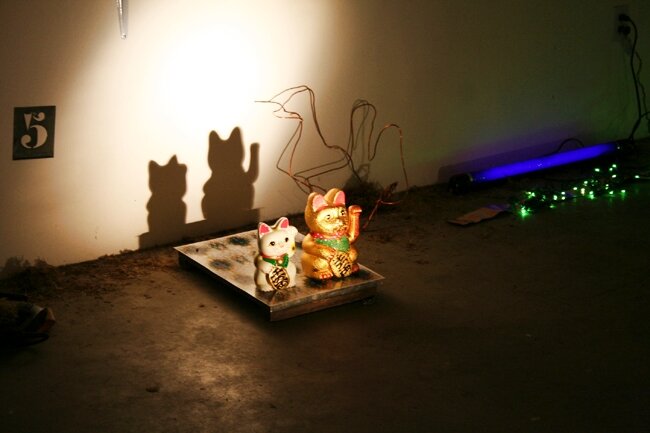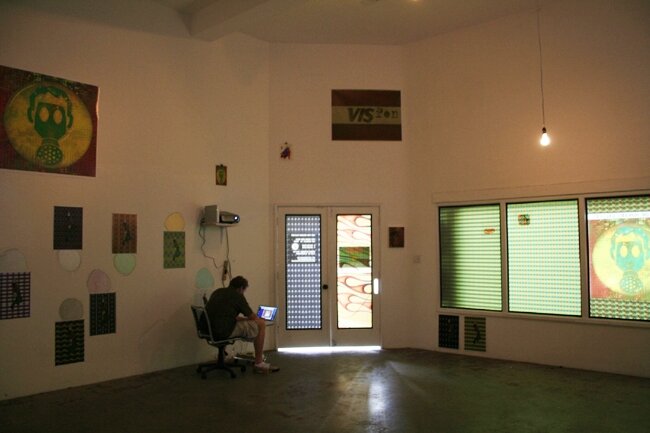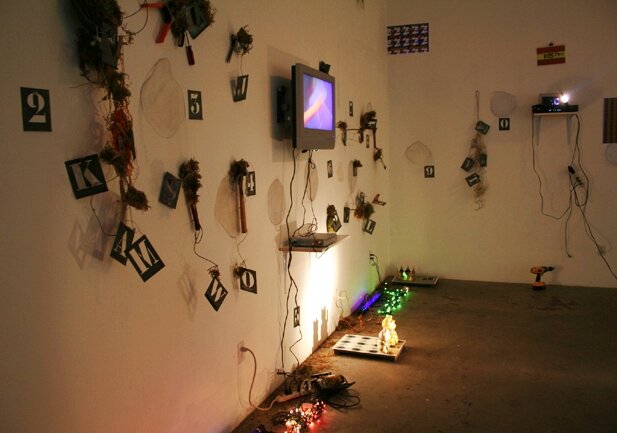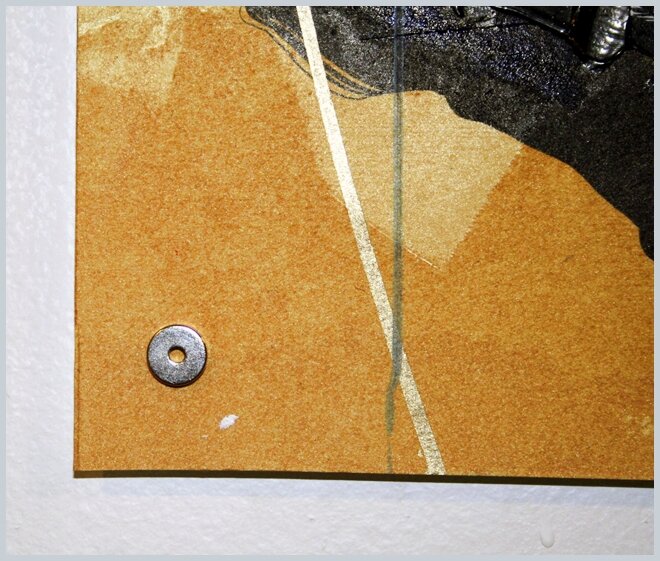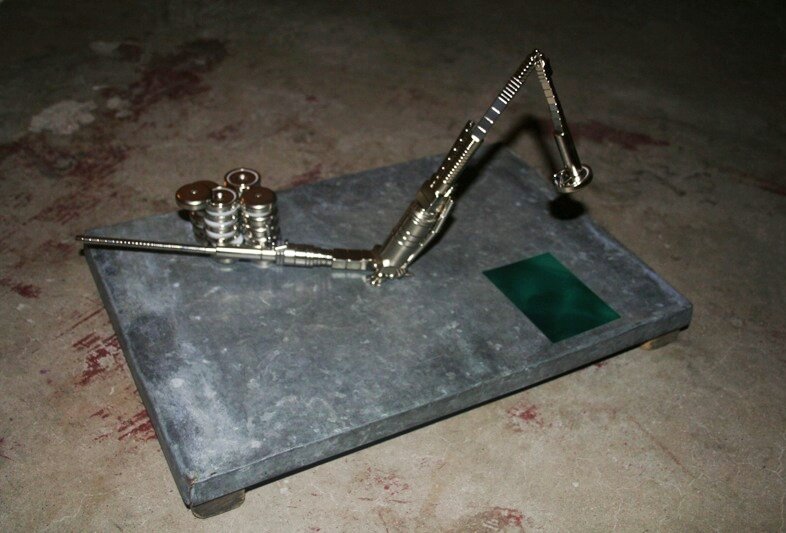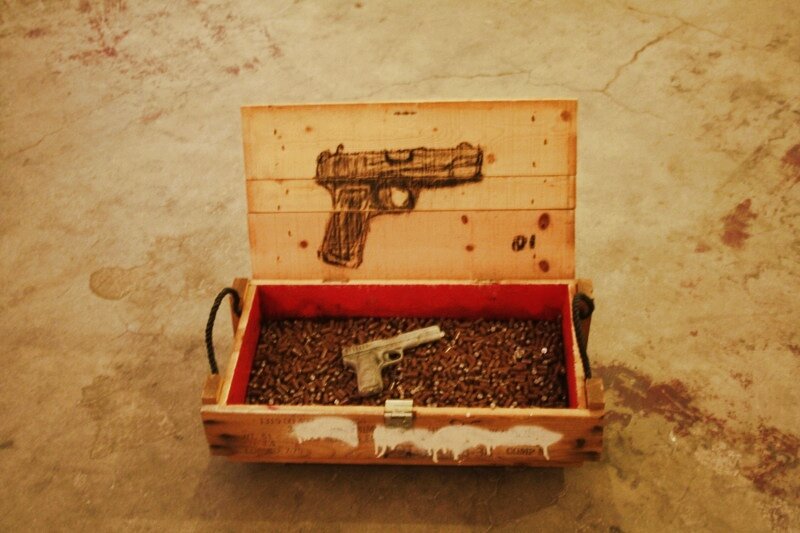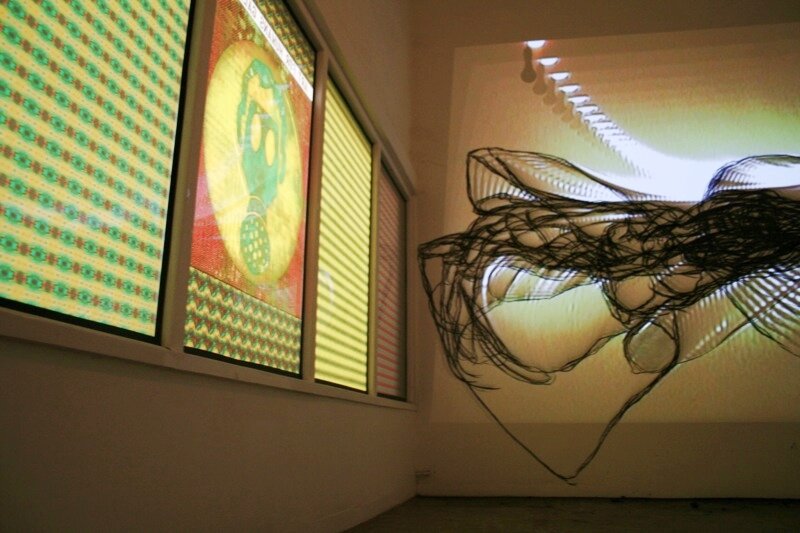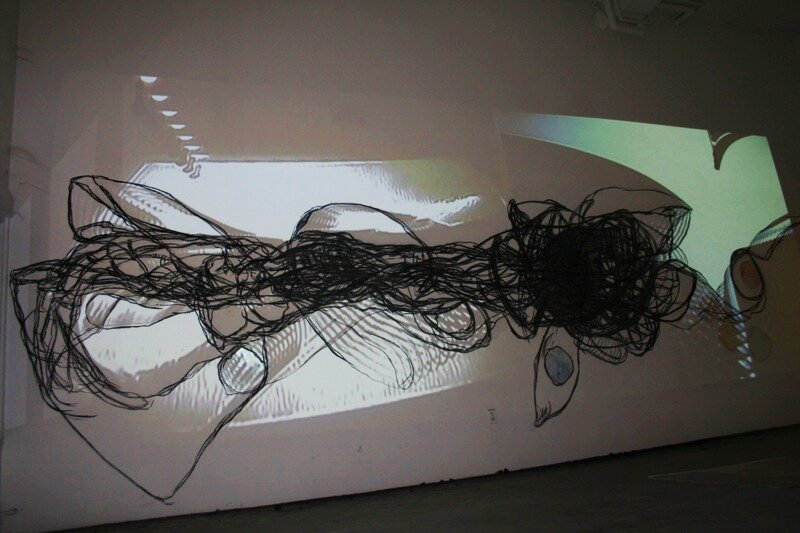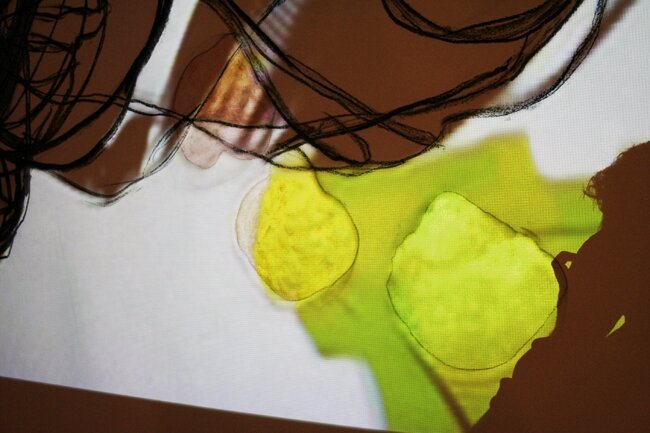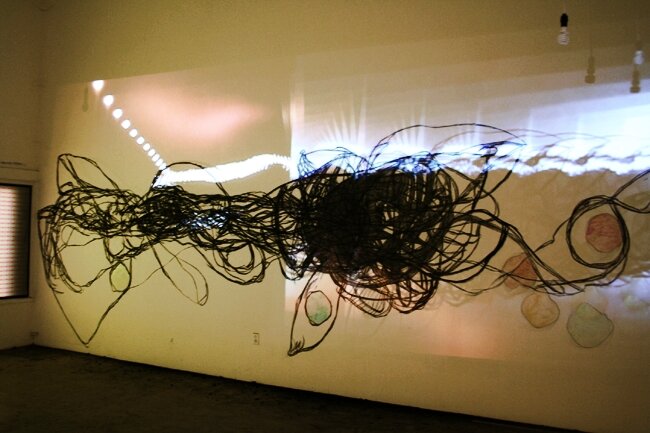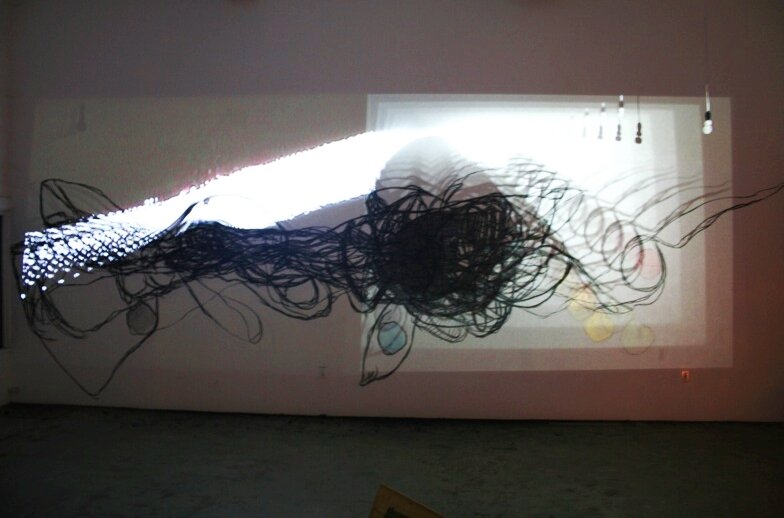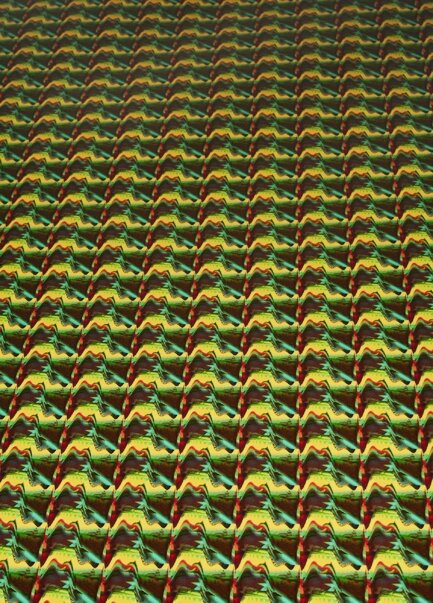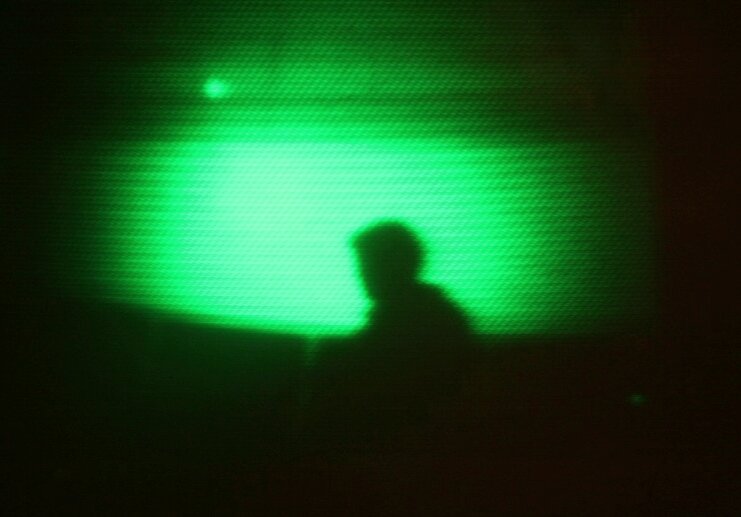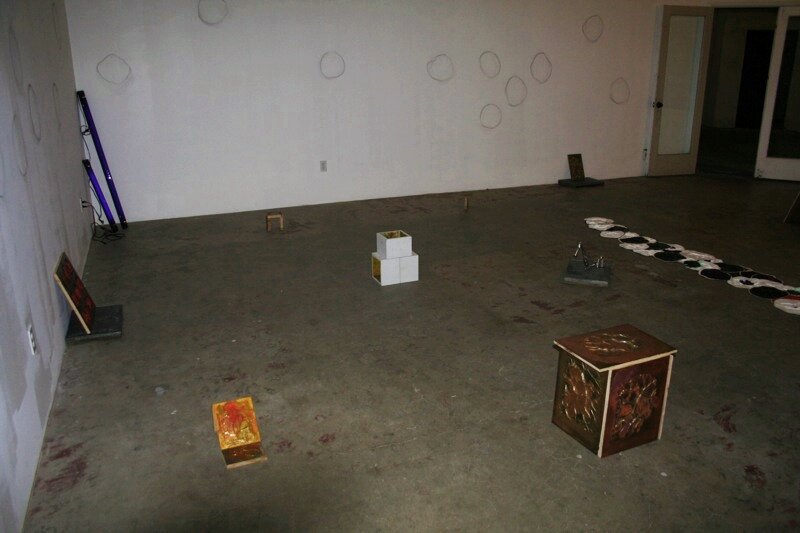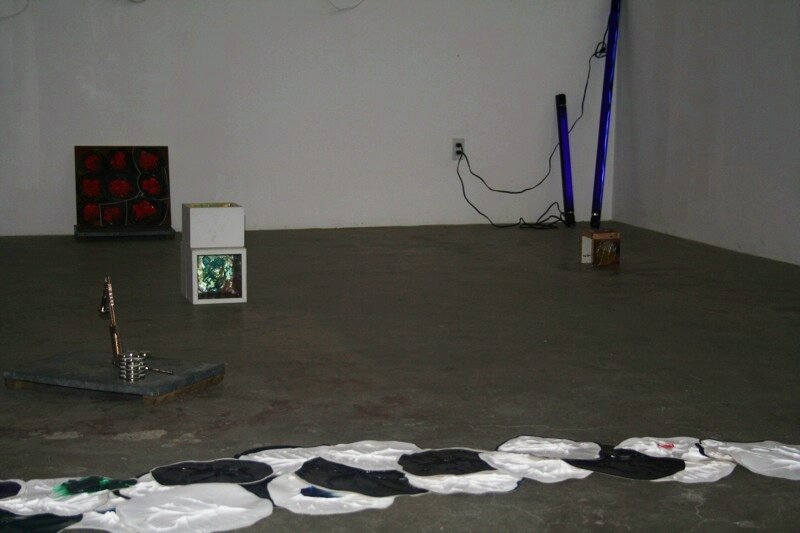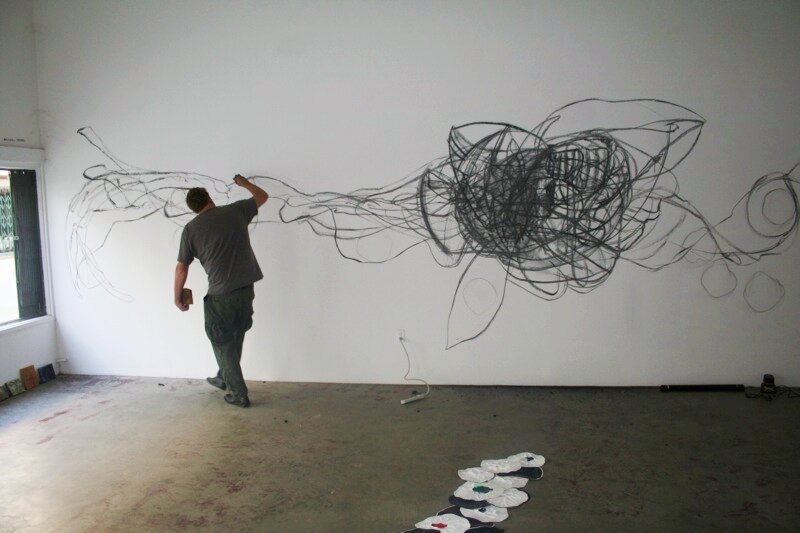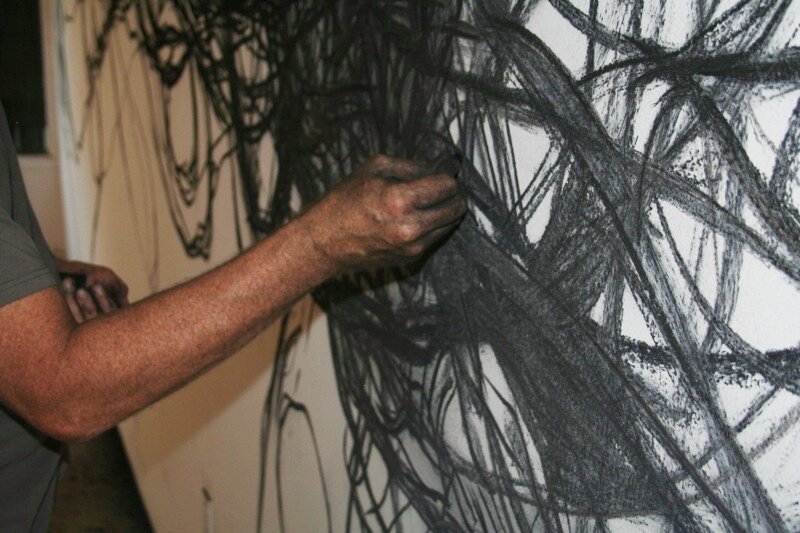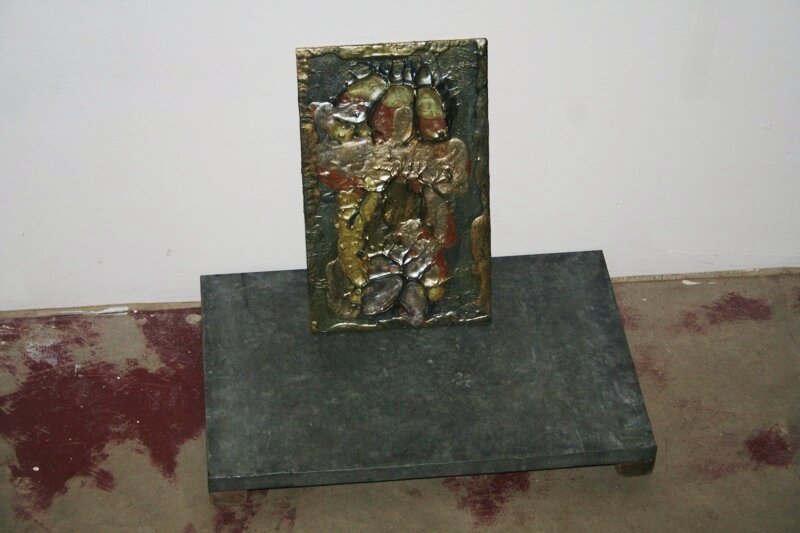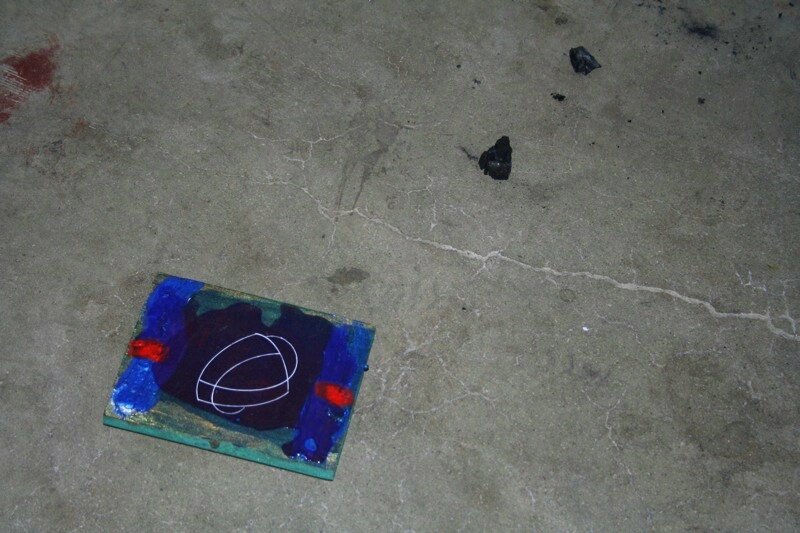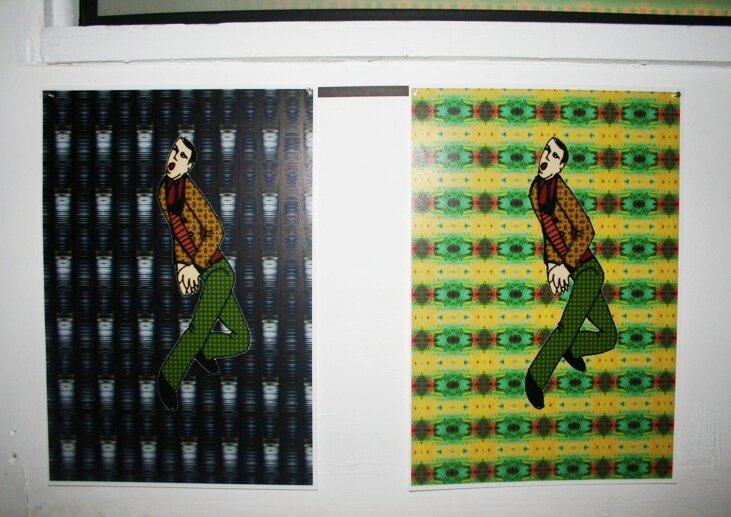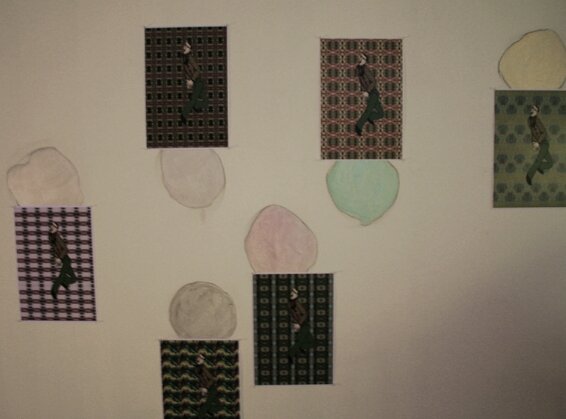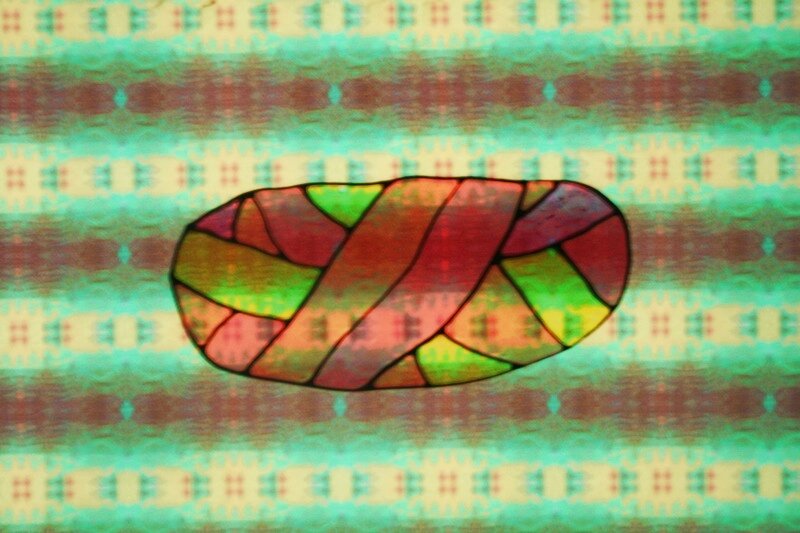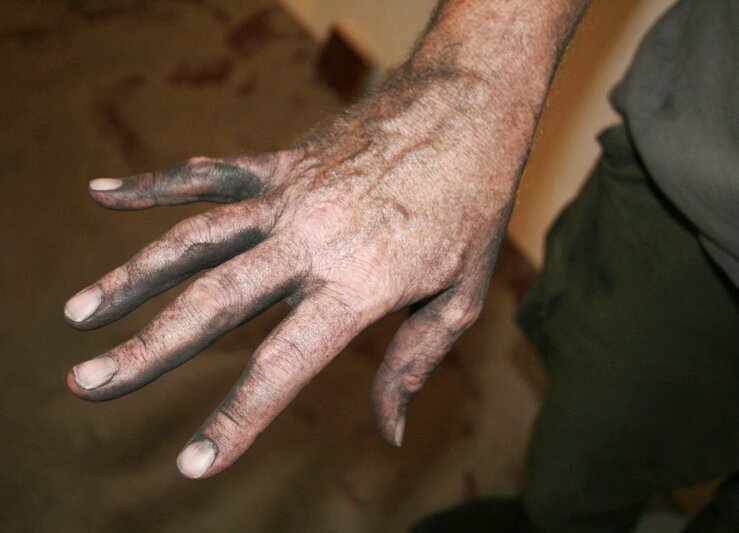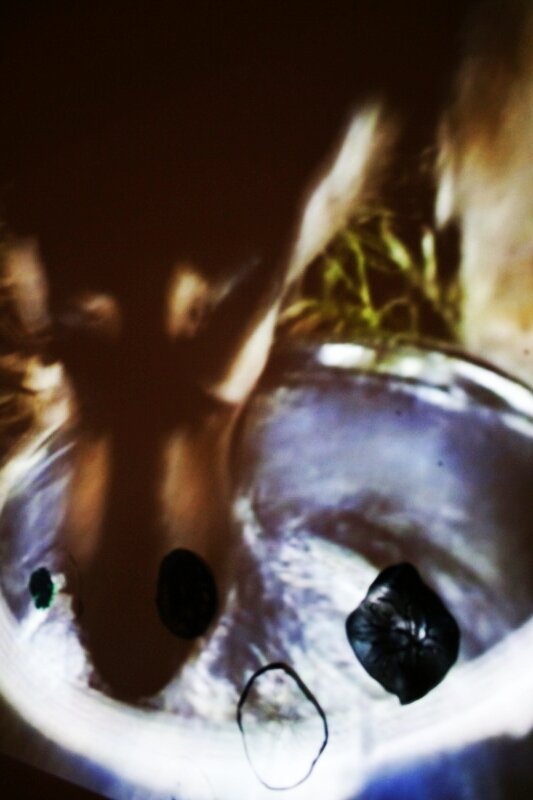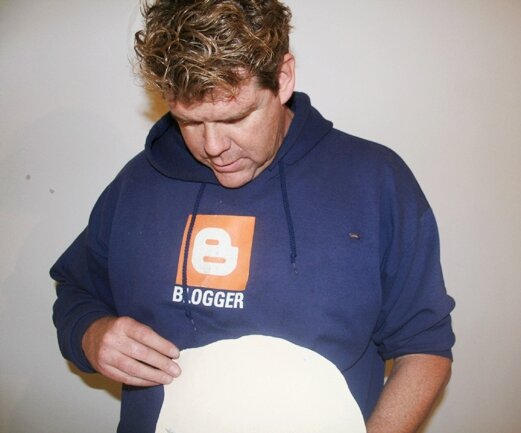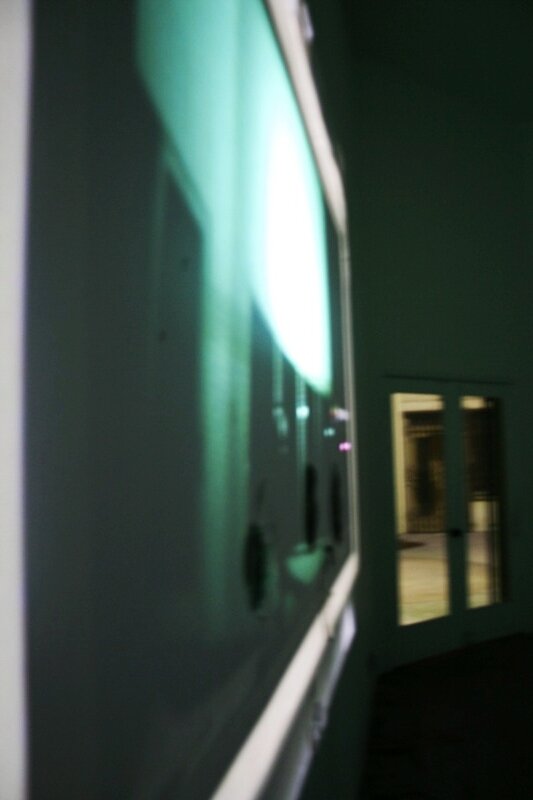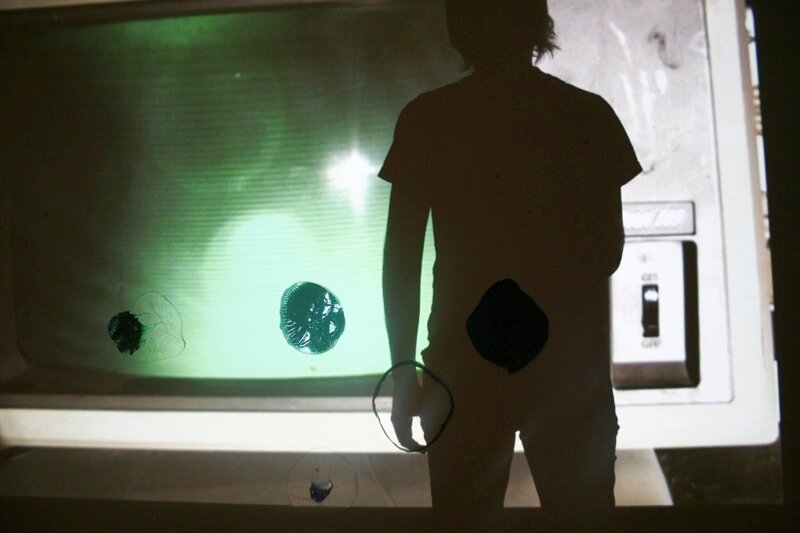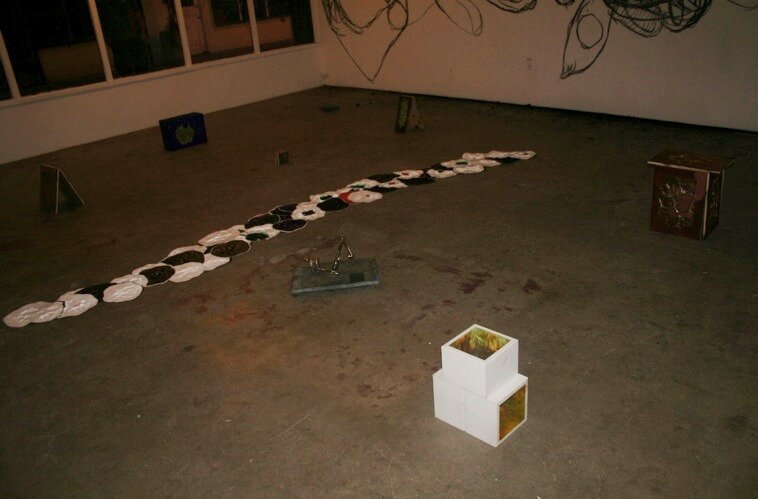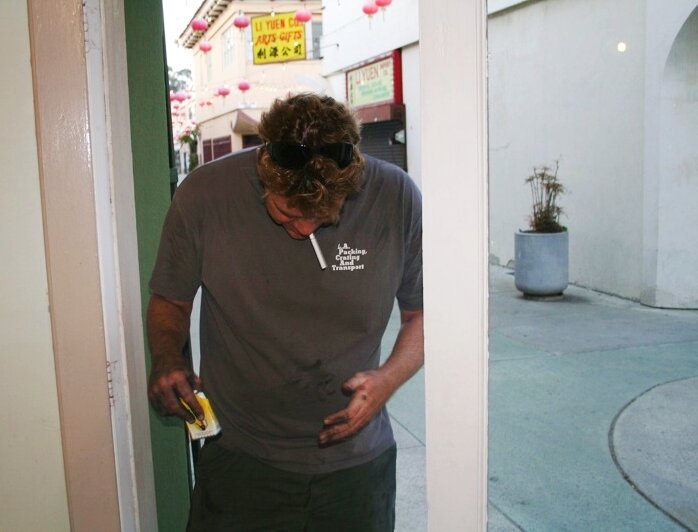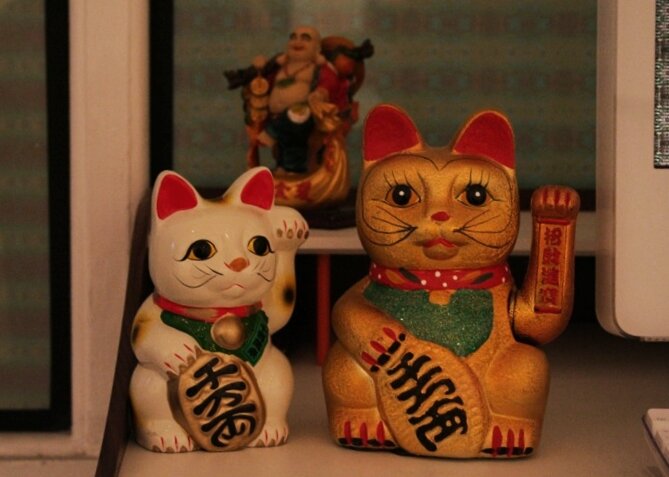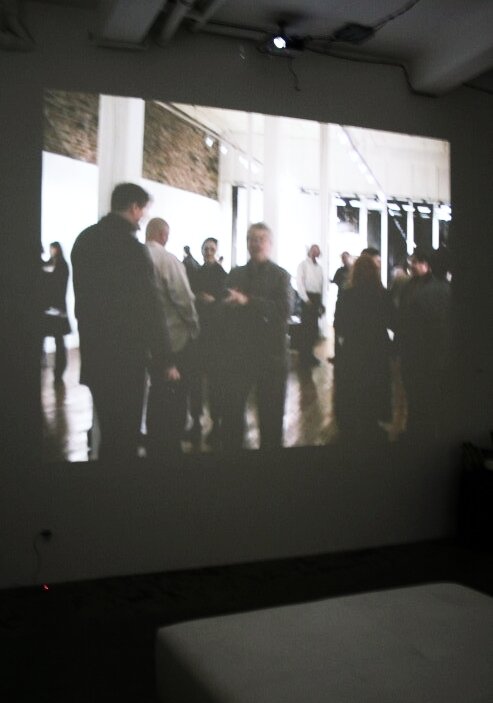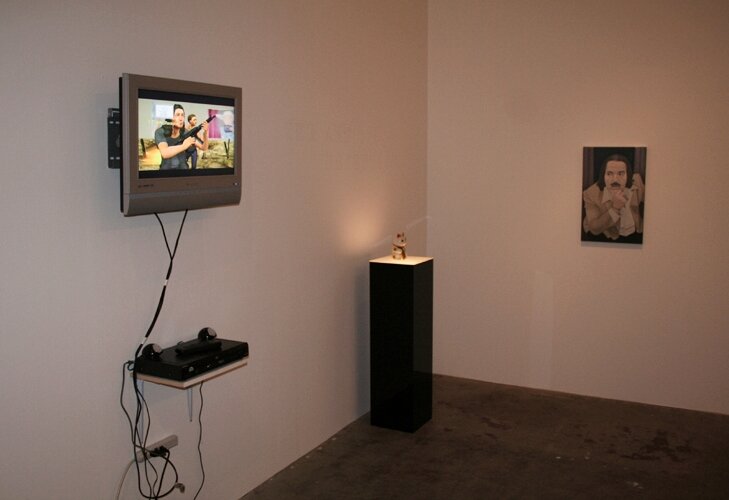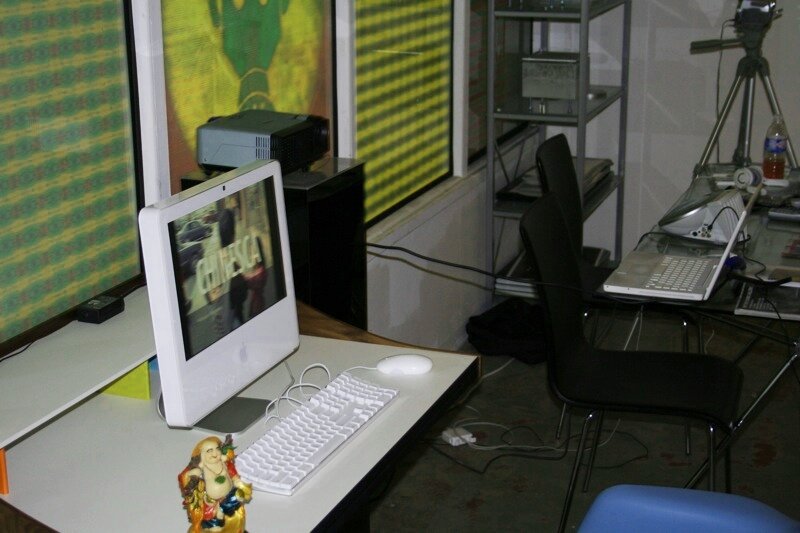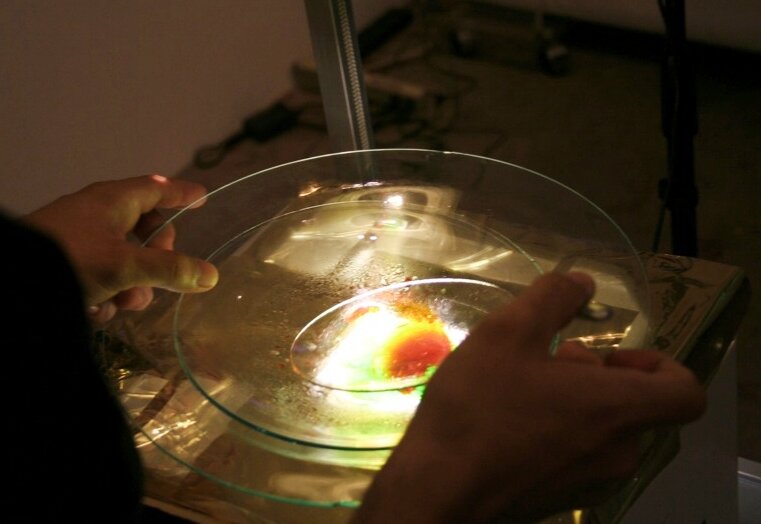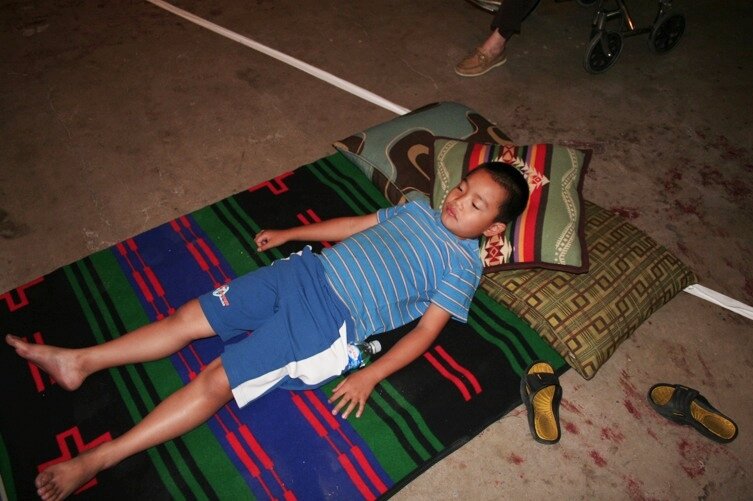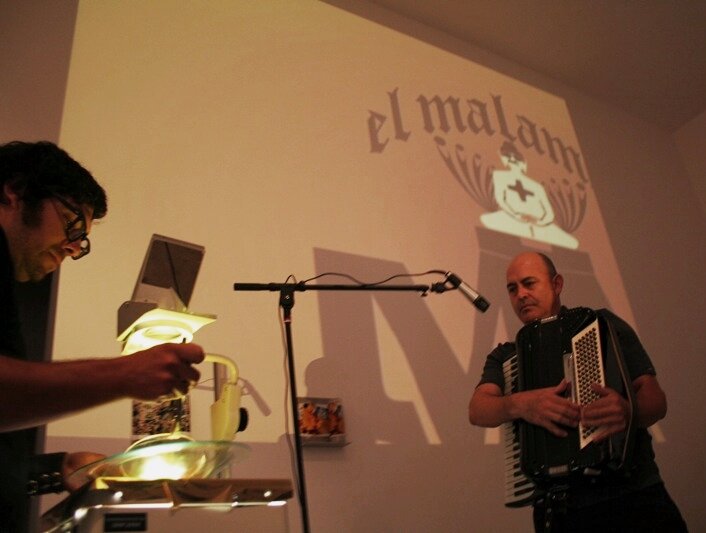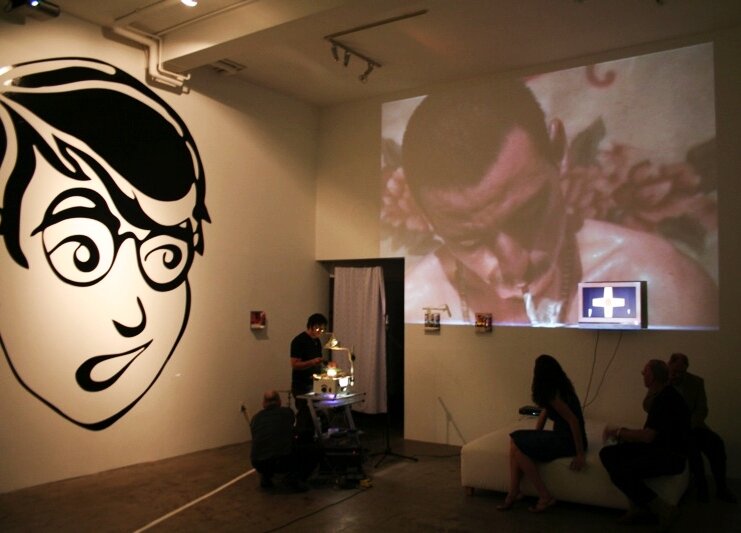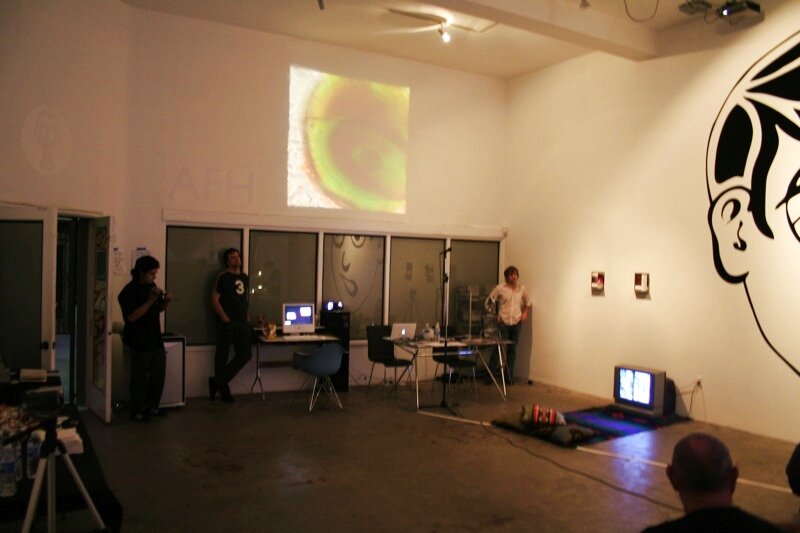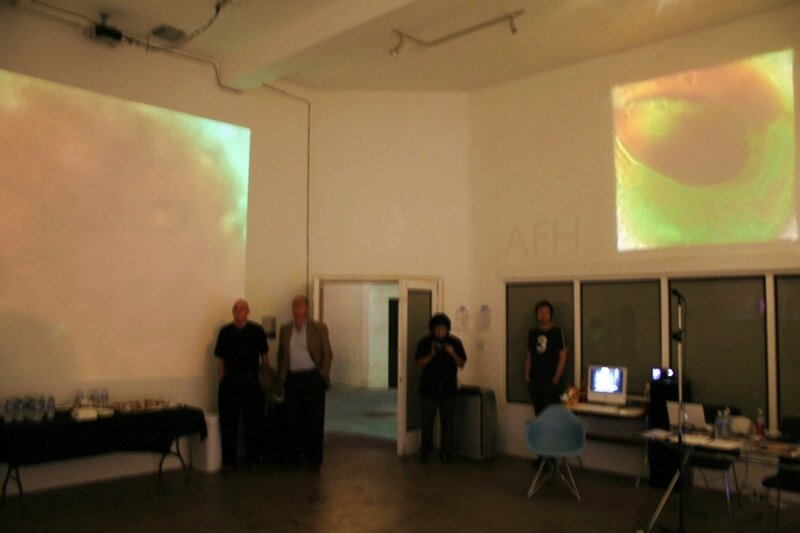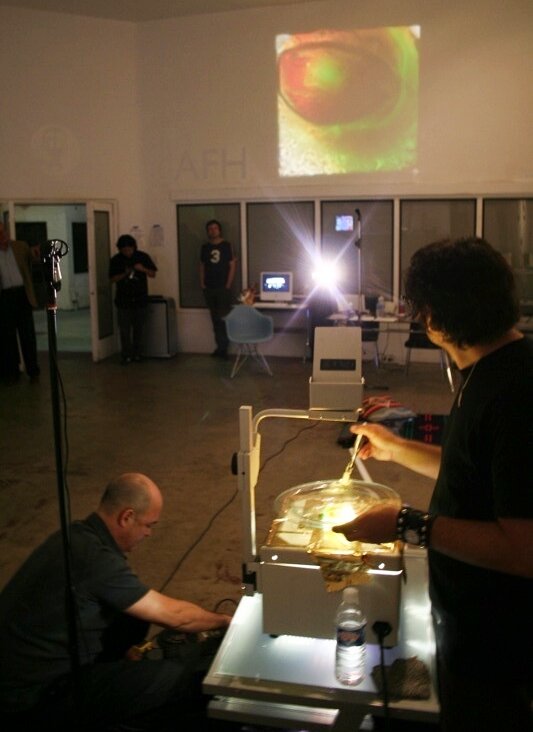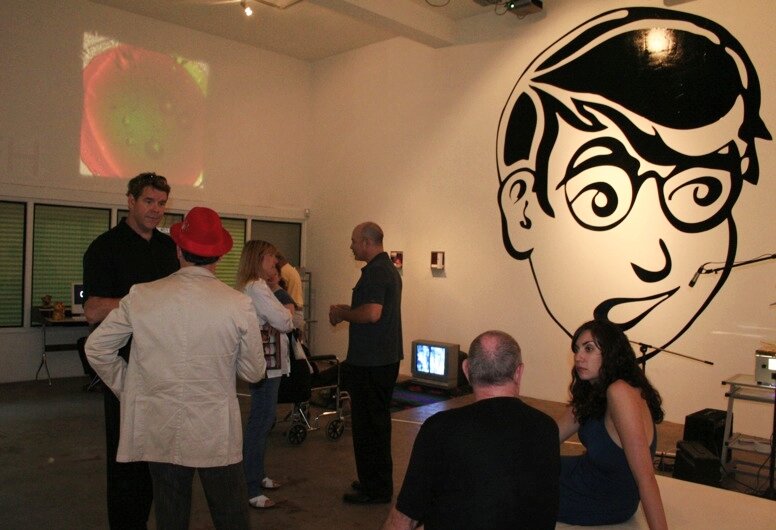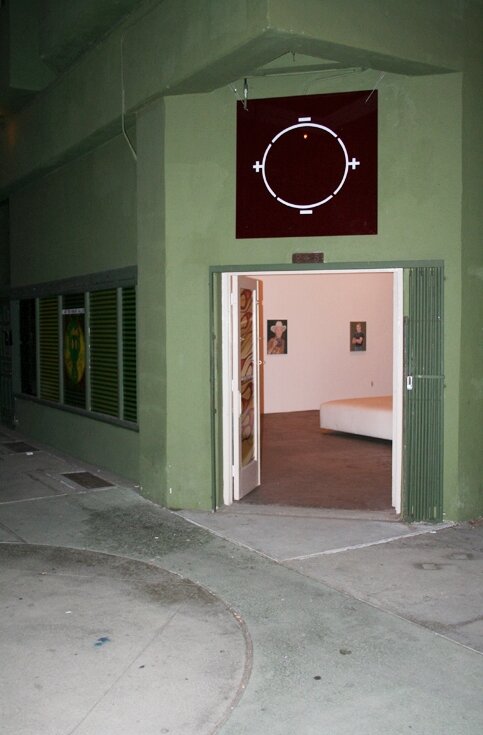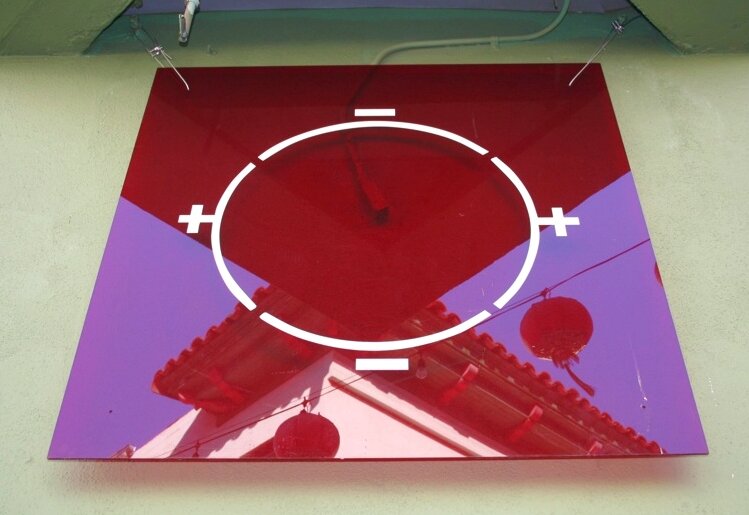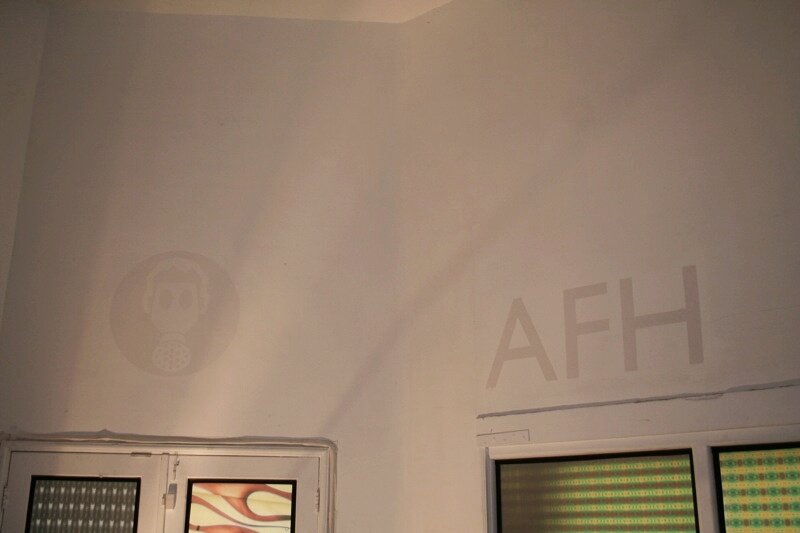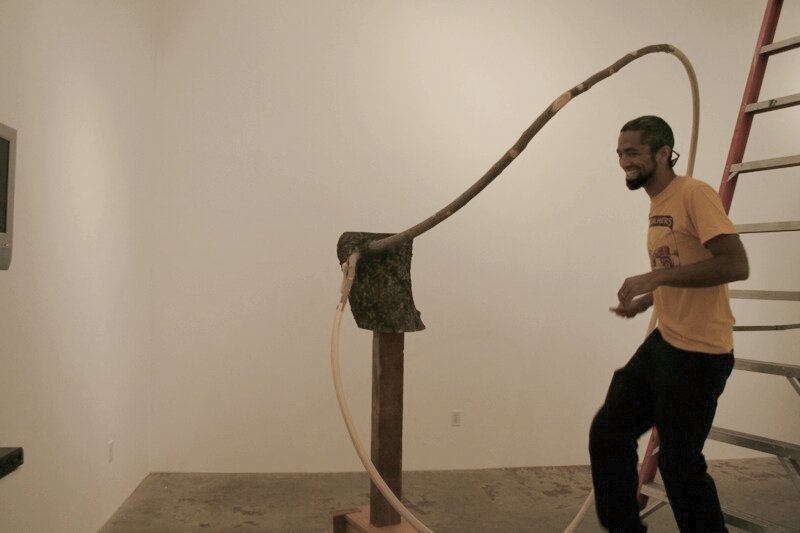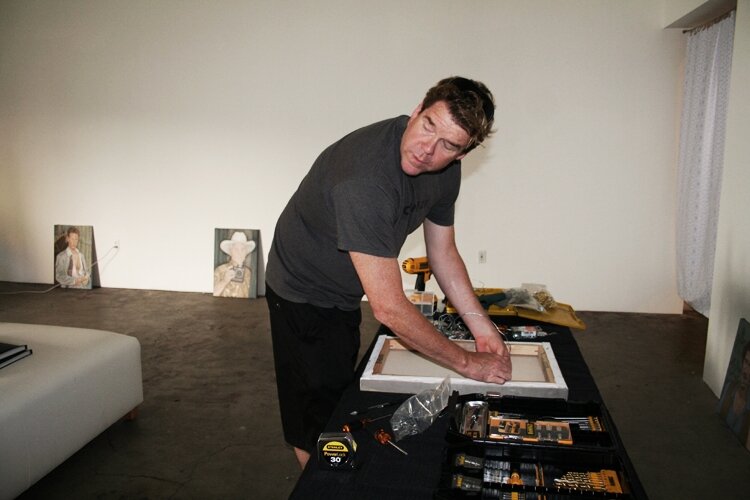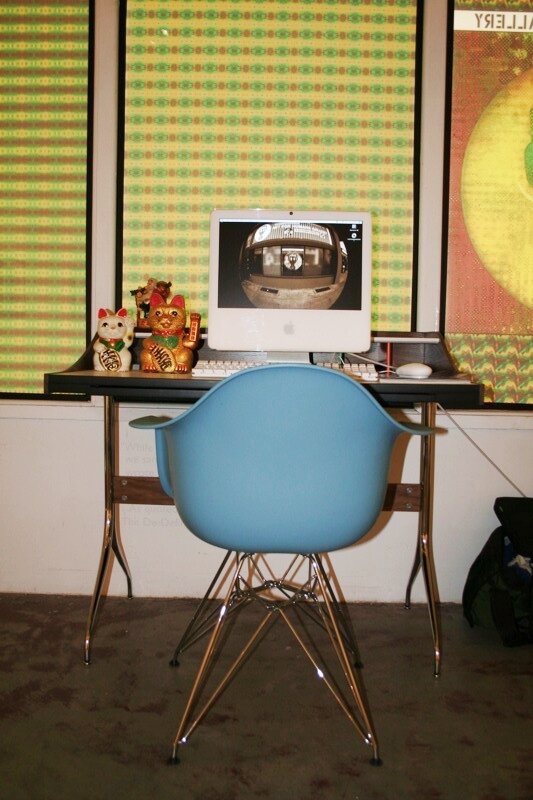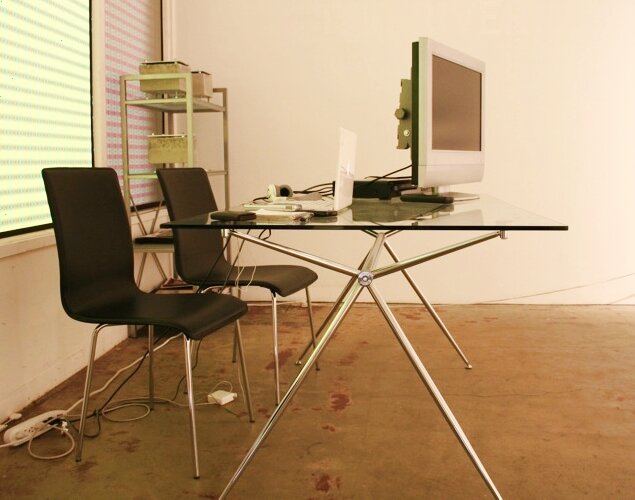The review of Art for Humans Gallery Chinatown that follows is a a specifically focused encapsulation. The text emphasizes the content of the project, and elements of the project structure. The form of the review is source-inflected. I will present a first-person account. My perspectives on AFHGC cannot be extricated from the roles I played in the conception and execution of the production, which spanned a few months in 2007. The pre-production and post-production phases are woven into others, so I will limit references to before-and-after aspects of AFHGC, with a couple of important exceptions.
Full-page advertisement for ArtNews (Source material by John Guider + design by PJM)
The circumstances for this AFHGC review are relevant. The Covid-19 pandemic has wreaked immense havoc, impacting global economic conditions and the daily lives of billions of people. The "art world” is effectively shuttered. AFHGC occurred on the cusp of the last major crash, or “Great Recession” of 2007-8>. To examine our Los Angeles Chinatown 4D art program through the lens of current events is the impetus of my reassessment. In my analysis I will suggest that the dimensional content of AFHGC is immediately relevant to the present crisis. The critical elements of the review are the time-based quality of 4D practice, integrated with cyclic nature of time passage. If we observe that incidents in time typically unfold in patterned formations, we can deduce practical measures that mimic the nature of repetitive, patterned incidents. The study of formal patterns over time (cycles) yields more or less reliable estimation. A 4D project ought to incorporate a sense of time moving in a basically predictable way, from past through present to future. The time-sense correlates generally to our common sense of existential time. Art is a complex feature we add to the mix, and there are many good reasons to do so. These are precisely the concerns of 4D aesthetic theory. When evoking a metaphor to describe this 4D capacity, I might even go so far as to propose that a proper 4D exhibit program like AFHGC operates in a similar vein as a weather forecast. The justification for the assertion arises from a thoughtful comparison of the show content to subsequent events in the vein of overview. Upon analysis, the object-narrative contained in the program, unfolding through more than two-dozen exhibitions, media presentations and performances, can be framed as proportionally predictive. Meaning that the future and the content of AFHGC conform. Daniel Buren’s idea of framing art as a conceptual utility is the reference applied here. In 4D aesthetics the frame is a polysemic term, one with multiple meanings and applications, virtual and actual. Another formal reference or frame by which AFHGC might be clarified is OpFeek, a media projection experiment that in some measure defines the thing we were up to, creatively. The effect is activated on a super-causal basis. The programmatic protocols of the 4D arts system operate similarly. There is an underpinning construct. A cybernetic loop that has metaphysical properties is projected on the structure is conducted. Non-mechanical (chance/choice) deviations are introduced. Then something mysterious and unsuspected, if not immediately explainable, happens, establishing a unifying, unified Thing that is unique of the moment. Not exactly an image, more like a movie made and shown simultaneously, the result is a real-time/-life phenomenon with entity-like qualities. To put it more directly, in the spectrum of assemblage, a correlate form emerges from a bracketed, systematic process, situated as a production with consequence: AFHGC as an exposition (conducted 12 years ago) critiques through representation the circumstances of March 2020. As clarification, I am not going so far as to characterize AFHGC as prophetic. I think it is more subtle than that. Art is more subtle than that.
To catalog key components of the AFHGC is to see sequential diagnostics migrate from one episode to the next. From “Business As Usual” to “A$$TROLAND” a grim aesthetic of economy is mapped objectively with startling austerity, utilizing documentary symbolism. Daniel O. Kim and Armando Rascon asymmetrically speak to immigration ideology and border wall mentality. The AFHGC project’s virtual precursor (AFH Gallery Online/”HUM 10+1”) proposes a fresh perspective on and modality for the international art exchange. AFHGC hosted work by artists from Canada, Mexico, Germany, Norway, France and AFHGO hosted work by artists from India and other nations. The reader may recall that international relations in the mid-00s, especially on the subject of global militaristic and economic interventionism, were tense to say the least. Our projects, including the AFH Friend Collective, demonstrated an alternative position on ideological Othering. In Chinatown LA, our precise location, functioned not just environmentally, but as something like a persona in the production. Some participating artists (like Rascon/Bezando) embraced the historical questions of identity, foreign-ness or the “alien,” while others focused on other material and interests. There was no rule, and few hard guidelines for content provision. The curatorial inquiry for the artist was less formal, and more oriented to inventory and currency. The accelerated timeline for production necessitated proficiency in the logistics and practical logic in execution of concepts. The schedule in a well managed 4D production seems to create itself. The pertinent dimensional theory on practice suggests that properly modeled and directed activity is natural behavior. Metaphors for the 4D collective procedure: sand in an hourglass; water finding its level; plus magnetism or attraction, etc. We facilitate a quasi-homeostatic process between the speculative and real. Time is the medium.
Graphic for “HUM 10+1” (2007, PJM)
The “Gasmask Guy” is the AFHGC icon, with the greatest trans-temporal pertinence. Our method is not Hegelian, a concept>object formulation. The phenomenal approach to the subjective in AFHGC is curatorial, not conspiratorial in the sense of collective action among the participating artists, many of whom never met the others or even visited AFHGC in person. The simple solution for creation is not stipulated as linear, originating at a point and proceeding unilaterally. The movement in 4D is informed by all-directional spatial awareness and utility. For example, the story that establishes thematic coherence in “BUSTER” is rooted in an alternative narrative for the booming neo-conservative/-liberal/globalist system dominant in 2007. So, the script of the project has more in common with a choice tree or possibility network, than a story with a defined definition. A 4D art production resembles a box of multi-colored/dimensionally variable blocks that can be put together in many ways. However, in the prototypical project, only one of these versions appears, then begins to disappear, only to reappear later, primarily for the purpose of verification. The scientific method is an important allusion for the 4D practicum. Poetics, music composition and theatrical production likewise share a profound creative bond with our thing. Academically refined research practice is valuable in 4D on the count of authentic realism. Reflexively, the 4D model can easily be adapted to most disciplines, to improve outcomes, and this assertion is verifiable. The concept of transparency as truth in narrative initially strikes one as a non-sequitur in the flow of revelation. Through my doctoral thesis I arrived at the axiom that all narrative is fictional (2015-16>). Convolution, a systematic complexity which shapes the human brain, is our prime principle for information in motion through transmission and reception, including information that is visual. Returning to the specific case: Overall, AFHGC promotes the obverse to propaganda disseminated by corporate syndicate media, then and now; but it is Laurent Chambert’s net.art/media piece, which codified this project feature precisely. As a rule, the details establish the authenticity of AFHGC (and all 4D art productions) in just this way.
Laurent Chambert (still image) for “BUSTER” (AFHGC, 2007)
All 4D art presumes a universal existence. The diversity of types of finitude balances the dimensionally infinite, revealing a dream-like vision resembling perceived reality. The dimension where force coincides with emptiness. Our project chooses suspense of the explicative reaction to what is, instead opting for the encompassing external/internal/secret object-as-revelation. We displace oppression with a tenuously attached search finding. We mediate the co-opted now-space with a shift in experiential momentum. A community can be built on the foundation of the visionary. A pre-existing community can be revitalized. An individual can become a free radical within the context of the 4D community, being oneself. Aligned 4D communities can establish constellations of community. Each operates as a node in a network, transmitting and receiving content (art, ideas, media, and so on).
Gasmask Guy, 2007 (PJM)
The instrumental and expressive in AFHGC were staged as woven forms. For instance, the mechanism for funding the project would itself be indicative of our relational disposition toward the powerful and their schemes, in situ. Through my own Pattern and Content shows, tied to the practical hybrid (virtual/actual) AFHGC demonstrated, the border separating artist from new material and media tools was, if not eradicated, then blurred. The show cycle was enabled by social media (mostly MySpace, flickr, tumblr, blogger and AFH-platform nexus websites). We were denied Old Media legitimacy for the most part. The caution with which our project was received among gatekeepers and influencers (pre-IG) revealed much about the invisible architecture of the art world. The passion of Christian Moeller expressed in his drawings and paintings did not mesh nicely with, for instance, the Dash Snow show at Peres Projects. Nashville-based Dane Carder’s “Civil War” and John Guider’s “River” series did not resonate with the content of LA’s contemporaneous fascination with “Little Creatures” or “Mr. Brainwash.” To put AFHGC in a context distinct from the opening of the major Banksy (LA, 2006) Murakami (MoCA/Geffen, etc., 2007), and Anselm Kiefer (Gagosian, etc. - 2008) shows is realistic, but does little to illuminate the actual scale of the city’s art scene, or its connections to global art networks and markets.

